Note that you can click on any picture to get the original full-size image.
Days 1-3: Melbourne
Initial survey of Melbourne and the surrounding area indicates advanced and
complex civilization, mostly indistinguishable from typical English-speaking
culture except for small quirks (partially documented below). All of the trees
(and I mean all of them) look strange, and the birds are particularly weird.
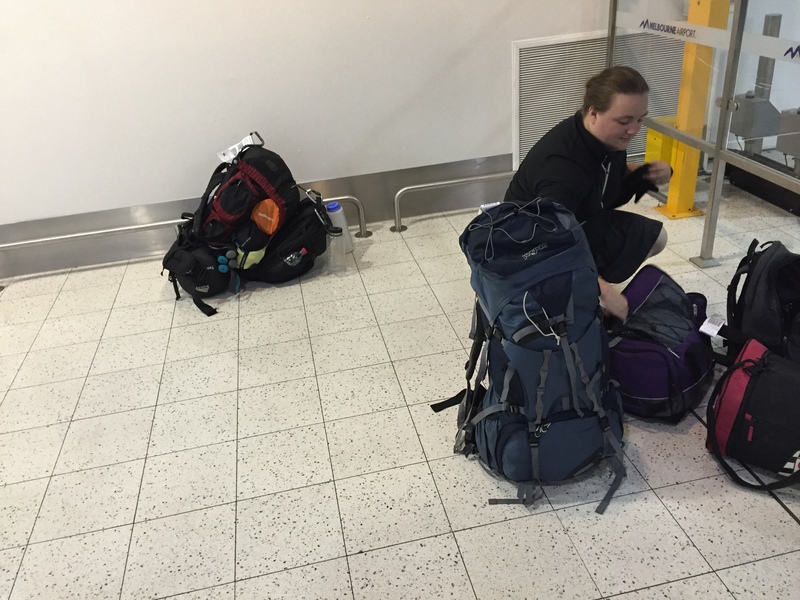
Since we traveled with backpacking ("bush walking"??) equipment, the stuff we had to carry from the airport was... quite a lot.
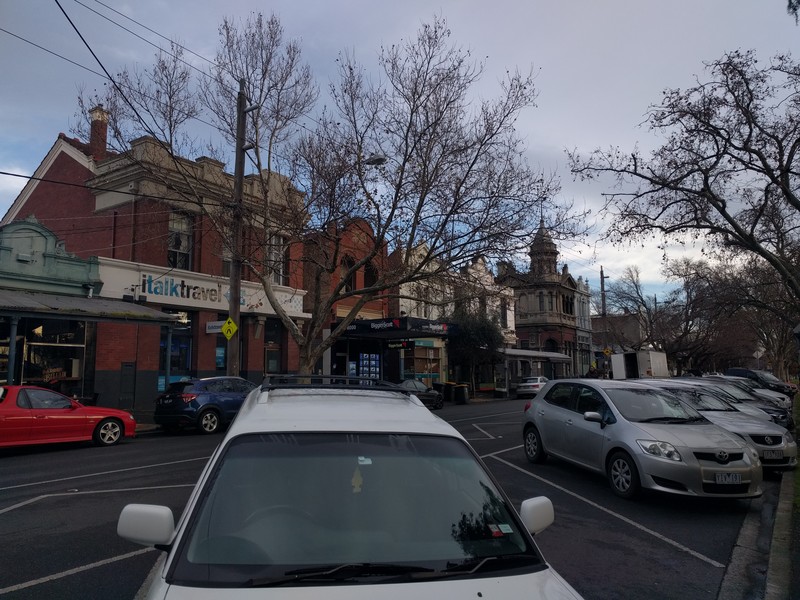
We quickly found that lots of places and businesses had fun names. Case in
point: Biggin & Scott bank.
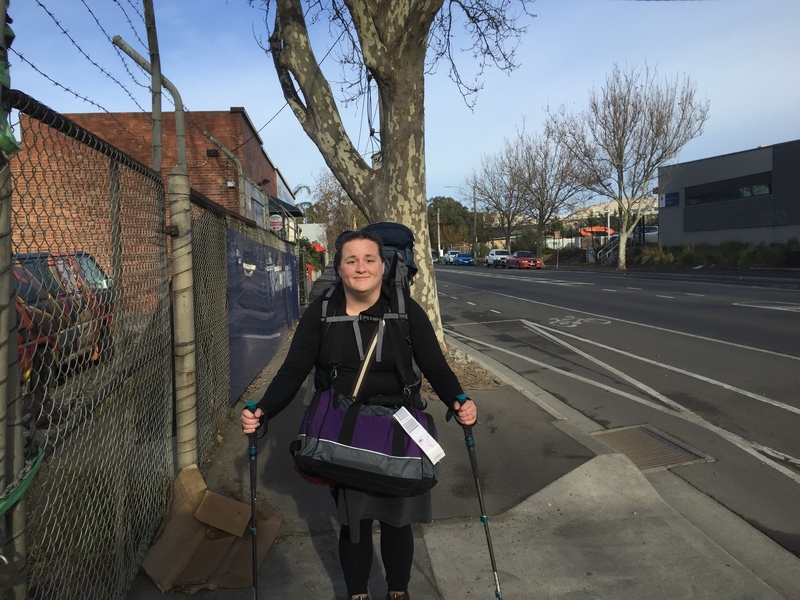
Our loadout of equipment meant that to get to our rental vehicle, we had to do
some urban backpacking through Melbourne. This did result in some strange
looks from locals.
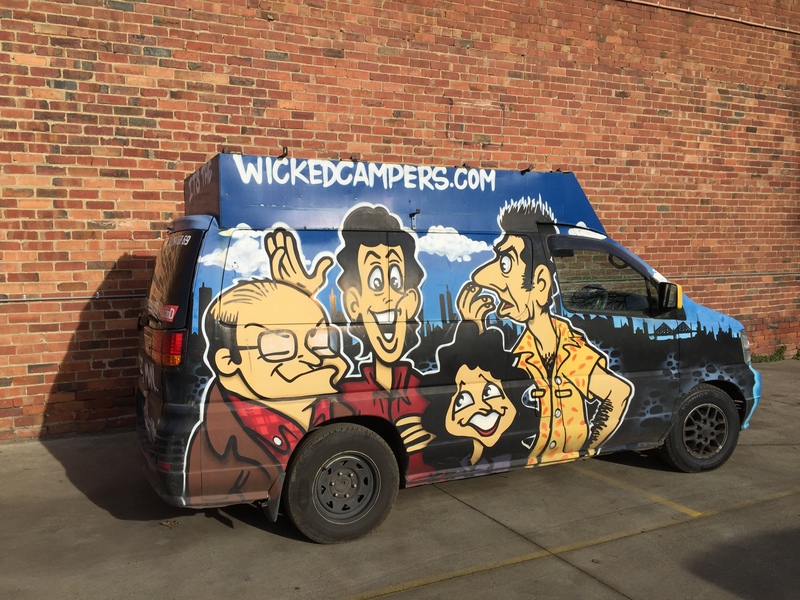
We rented a van from Wicked Campers. This is what they gave us.
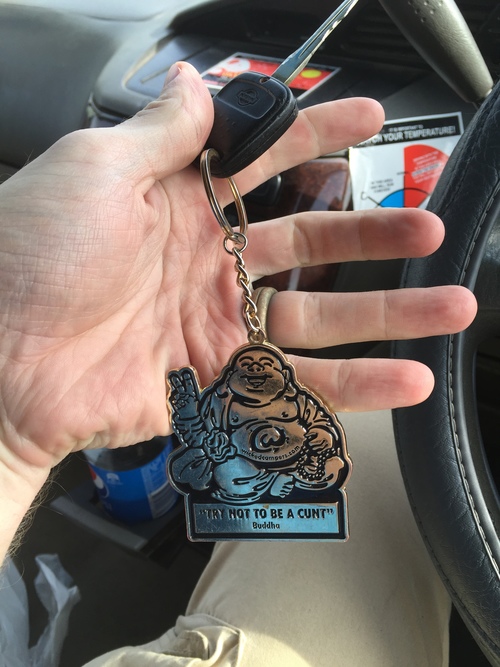
Wicked Campers' "thing" is that they are edgy and cool. In fact, there were
some court cases in Australia about vulgarity on the sides of the vans. I
believe that Wicked Campers lost this lawsuit, as they should, because their
vehicles are falling-apart trash. (Okay, I know, that wasn't the subject of the
lawsuit at hand, but for real this vehicle was trash and we had to sign an
agreement that said their insurance of the vehicle was nullified when we were
driving at night and also when we were in reverse. Perhaps that should be
grounds for some other lawsuit.)
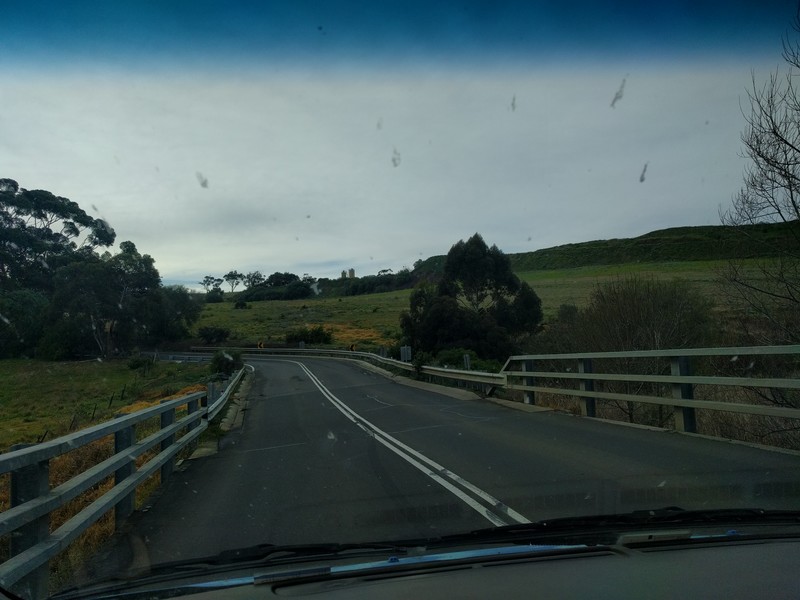
Despite the fact that the van died on us three times while reversing out of a
spot (so... I guess the failure wasn't insured?), we did manage to get it going,
and got out into the country, which looks positively alien. Note the strange
trees.
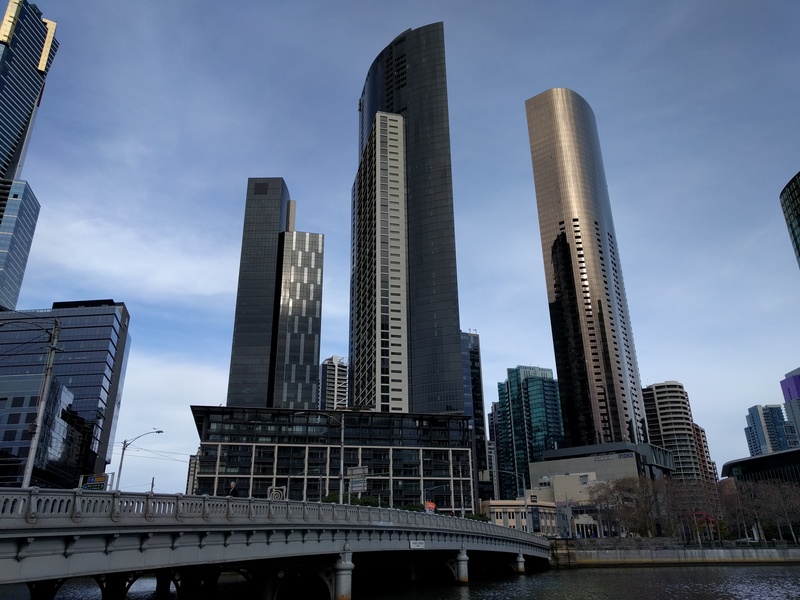
The Melbourne skyline is pretty impressive, which I guess makes sense given that
it's the second-biggest city in Australia. Here is a picture of South
Melbourne. Irritatingly, the Melbourne grid system is off the axis by about 10
degrees---meaning that the bridge here isn't going due south, it's going just a
little bit southwest. This bugs the crap out of me when I look at a map on my
phone, because I keep thinking the map has done some stupid thing and north is
no longer pointing directly up, but no, Melbourne is just weird like that.
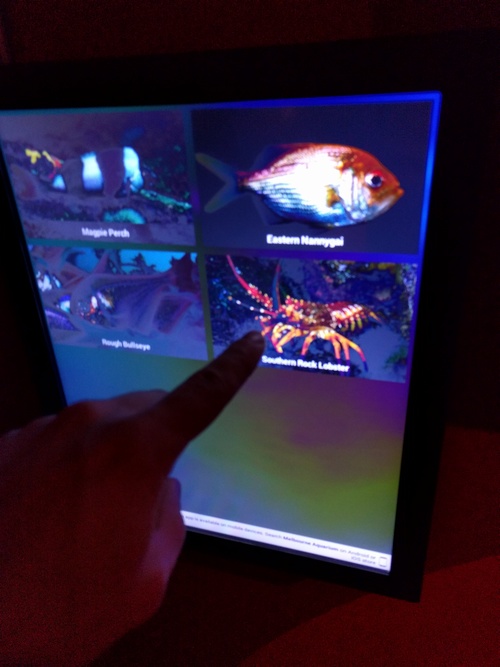
Dear aquarium designers: instead of the printed placards, this is the way
to do it. Please follow the example of the Melbourne aquarium.
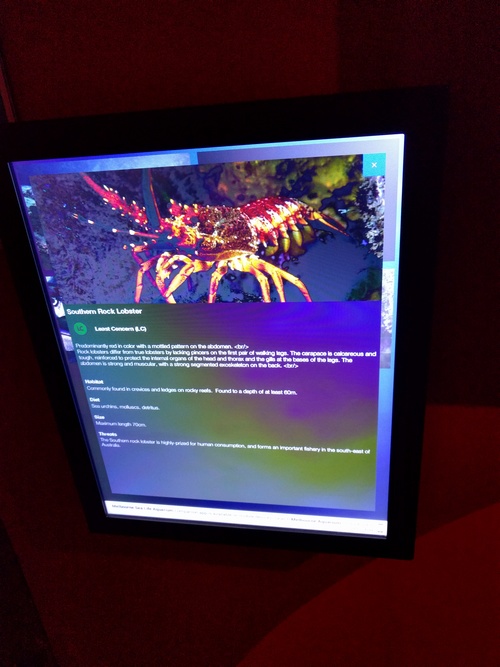
Admittedly, access to mobile data takes some of the thunder out of this, but,
it's still cool---especially in a foreign country where I don't have data.
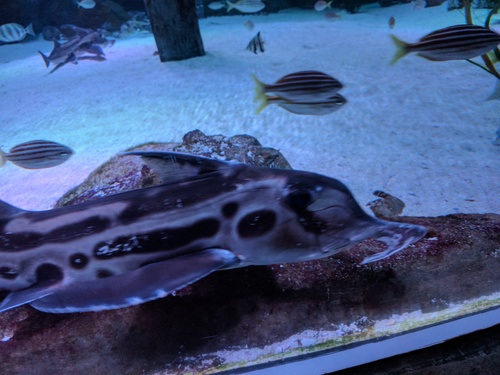
There I was, thinking, "I know everything I'll see here, aquariums have lots of
stuff from around the world and surely I know a lot of fish by now given how
many aquariums I've been to", then suddenly this guy comes by. The rest of the
aquarium was also filled with extremely strange things I've never seen before.
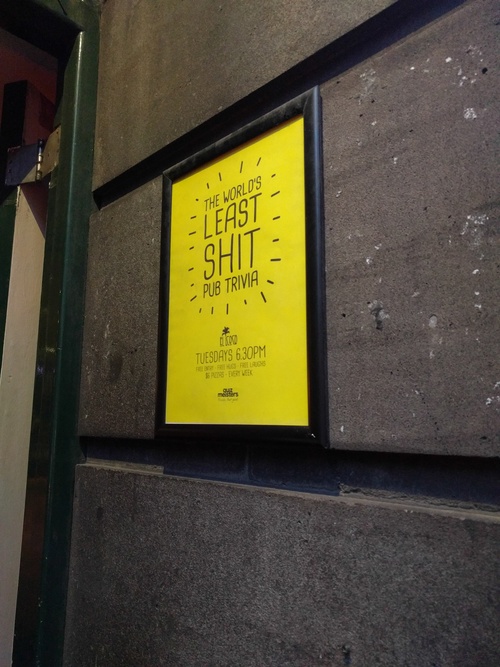
It seems that Australians, in general, are less put off by vulgarity. We heard
lots of uncensored music on the radio, and I even winced when I heard a radio
announcer say "damn", thinking of the FCC fines, but wait---there's no FCC
here...
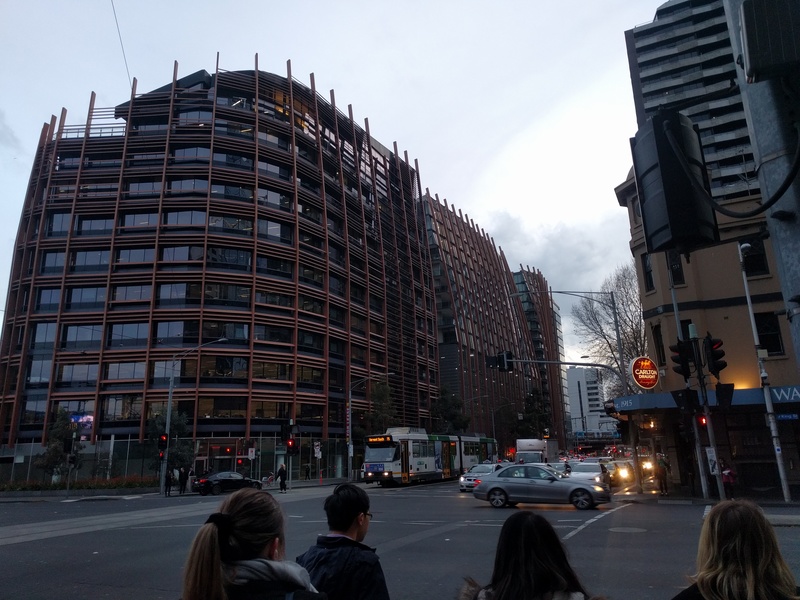
Two things to point out here: nice architecture, and ugly trams. Melbourne is
completely full of both. The latter (ugly trams) necessitates the strangest
traffic maneuver I have ever seen: the hook turn. I did not have
the balls to attempt one myself---especially not with the entire Seinfeld cast
on board.
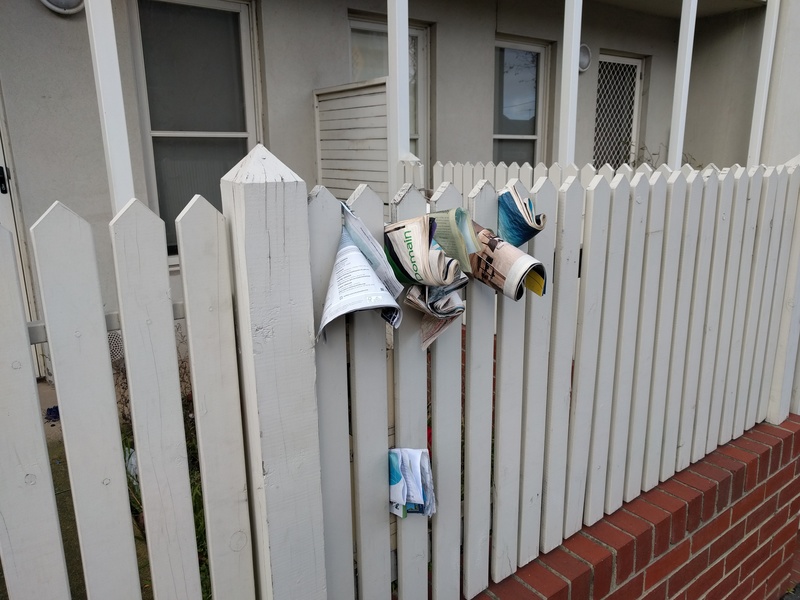
I'd never seen a fence used as a place to deposit mail. What happens when it
rains?
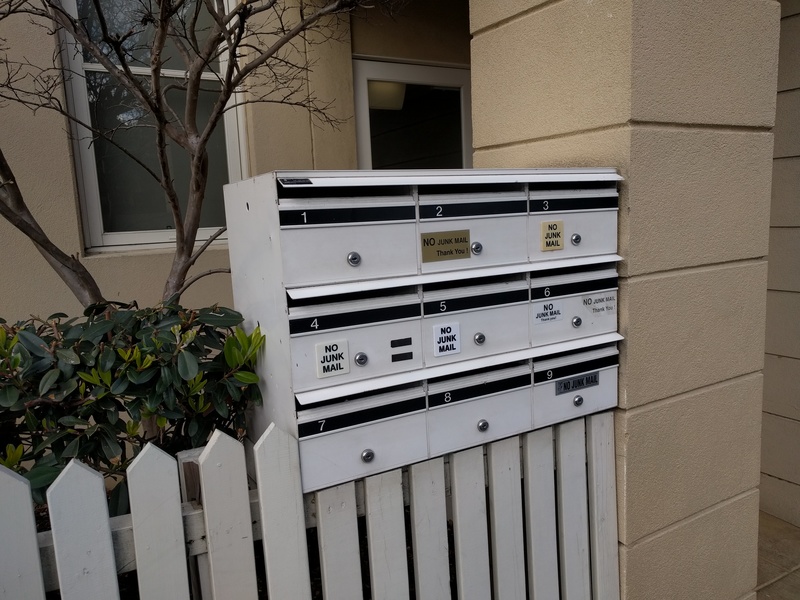
Now this is a societal advancement we should all be envious of. I will dream of
such a thing actually working back home...
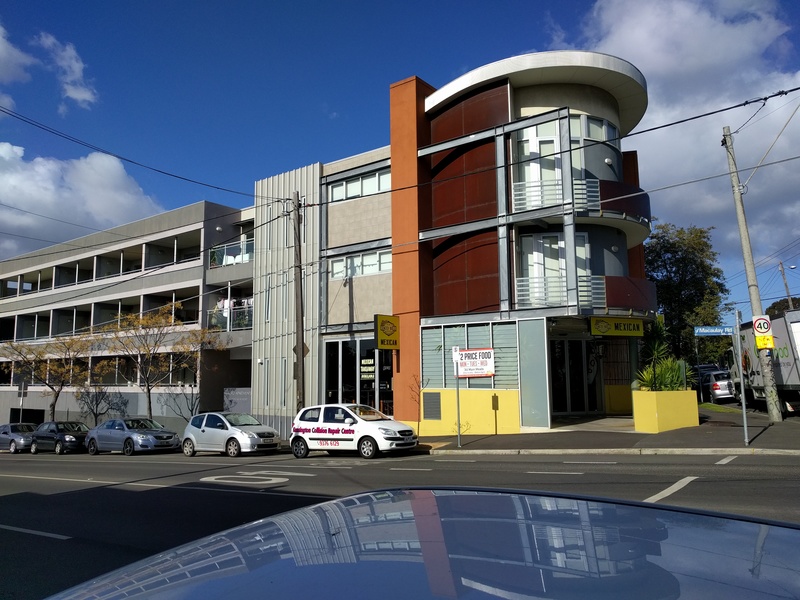
Taco Bill?? (I haven't been brave enough to try Mexican food in Australia yet.)
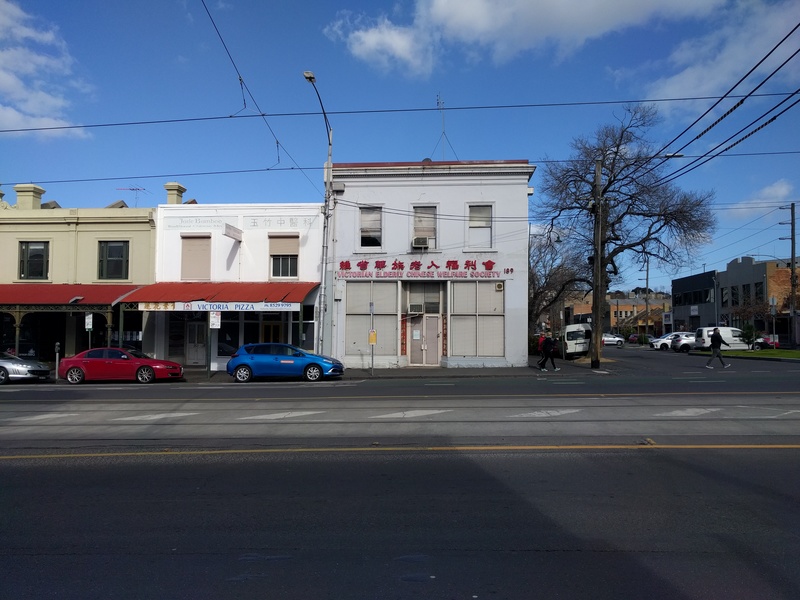
This seems a very specific clientele.
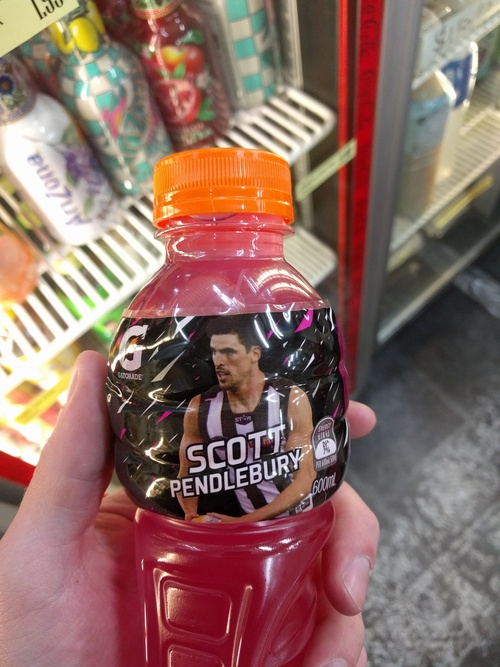
Who is this guy? Is this a rugby player? Or, um, cricket? Or some other
strange Australian sport which is kind of like other sports but not really
enough for an outsider to understand without years of careful study? (Hmm...
like American football...?)
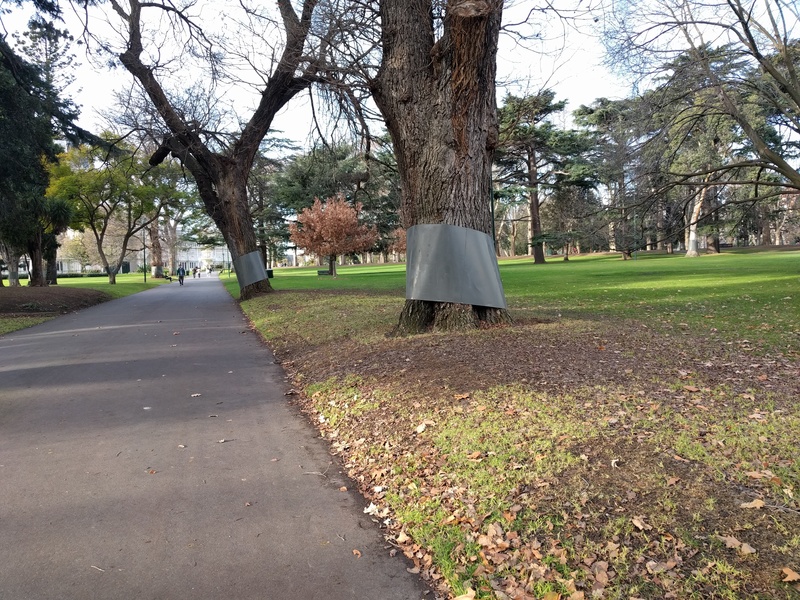
I have yet to figure out what the function of these tree wrappers is. Maybe it
is to reduce vandalism? But it would be easy to carve below or above the
wrapper.
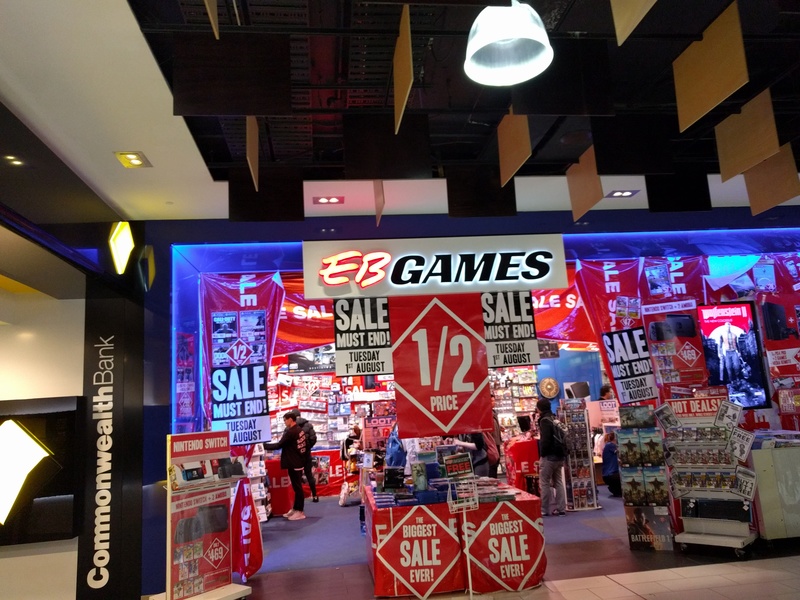
Is this... an Electronics Boutique?? I think I haven't seen one of these since,
like, 2002!
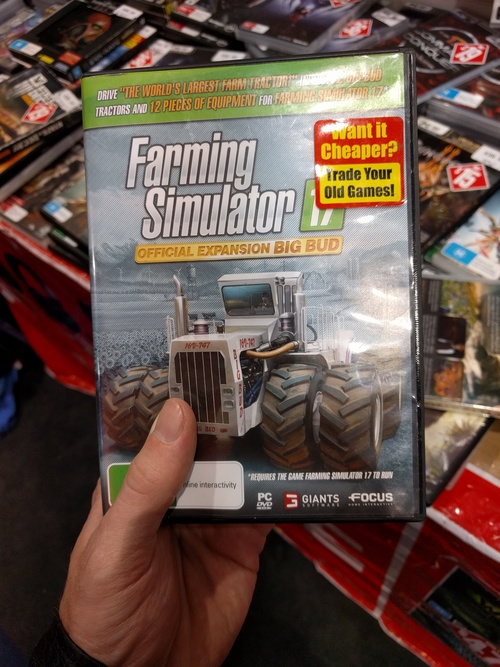
I guess a game like this must be popular in a country where profitable and
sustainable agriculture is a real difficulty due to erosion, soil fertility, and
salinity issues. Um, or, just nobody has bought it and it will sit on the
shelves forever.
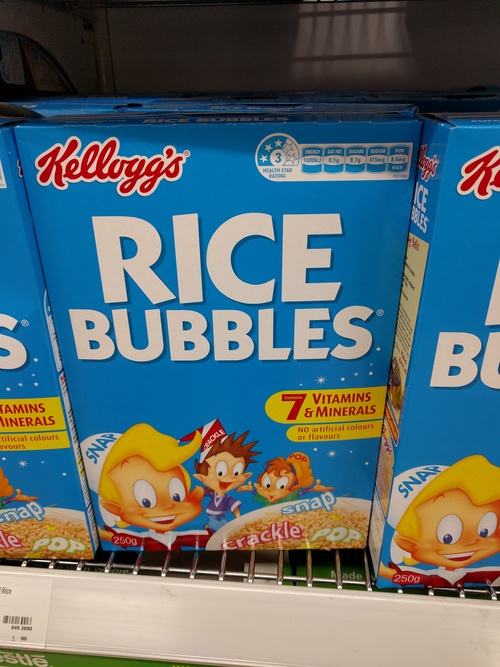
What was wrong with the word "krispies"?
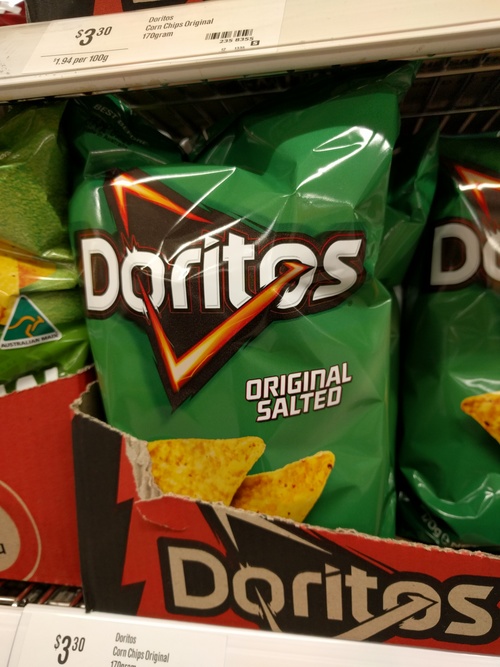
This is not a valid flavor of Doritos.
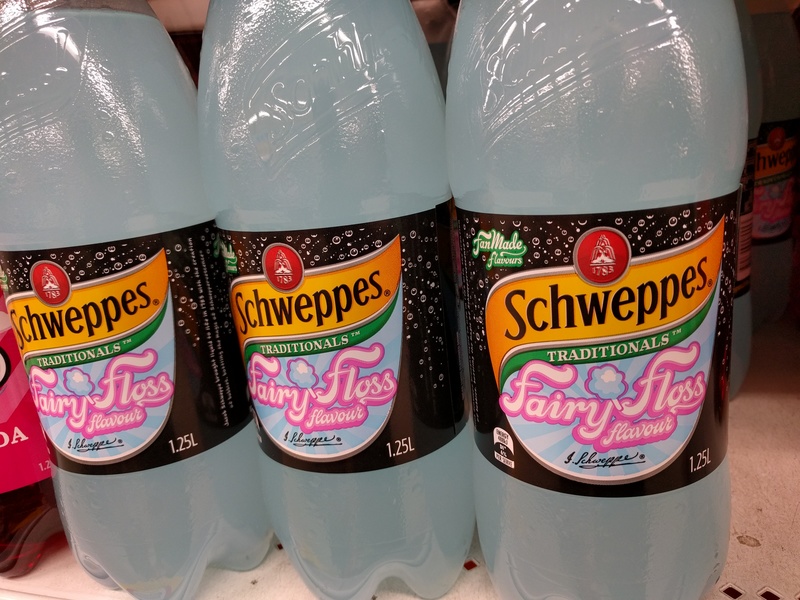
First-level observation: I guess fairy floss is what cotton candy is called in
Australia. Second-level observation: okay, who in their right mind would ever,
for any reason, want cotton-candy-flavored seltzer water?
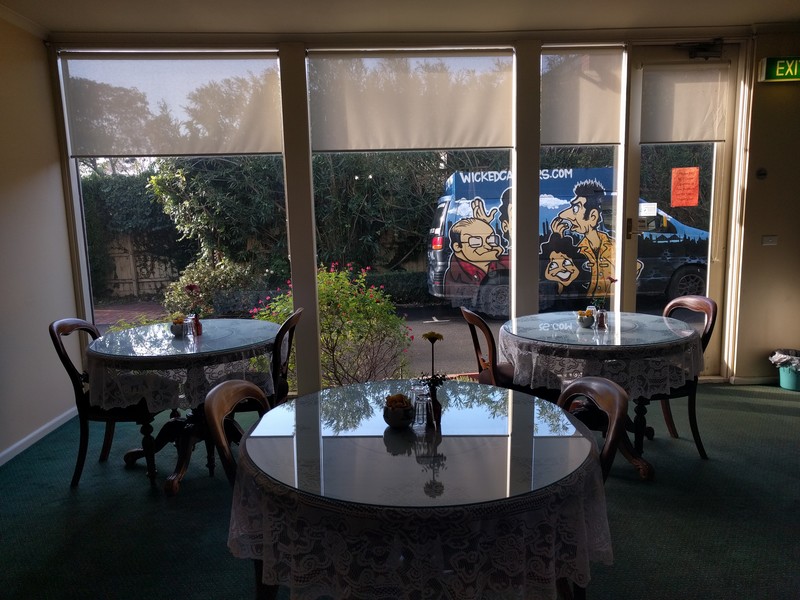
I felt obliged to apologize to the hotel attendant because we had parked an
atrocious eyesore right outside their nice dining room.
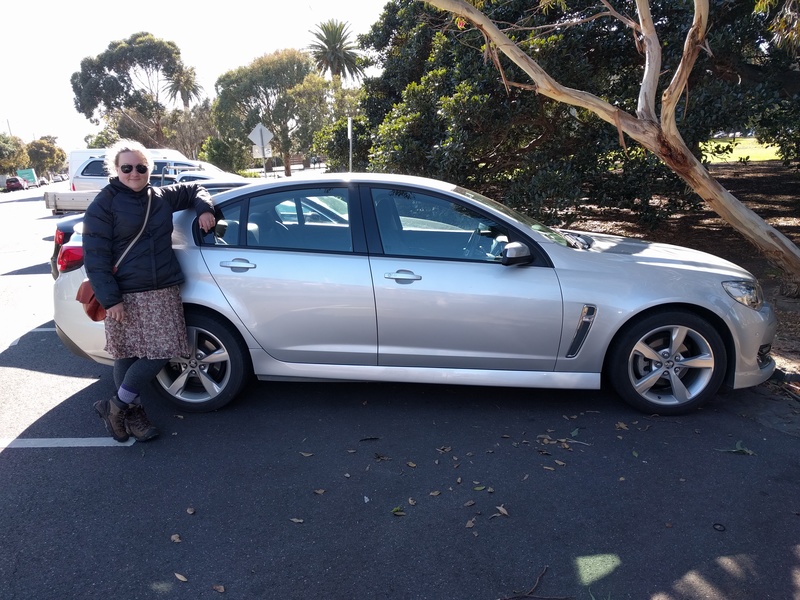
Given that roadside assistance was "send this guy an email and he'll respond
soon", we decided that Wicked Campers was a bad decision and magically turned
our Seinfeldmobile into something with 210k fewer kms on the clock. (Also, yes,
that van's odometer did read 275k.)
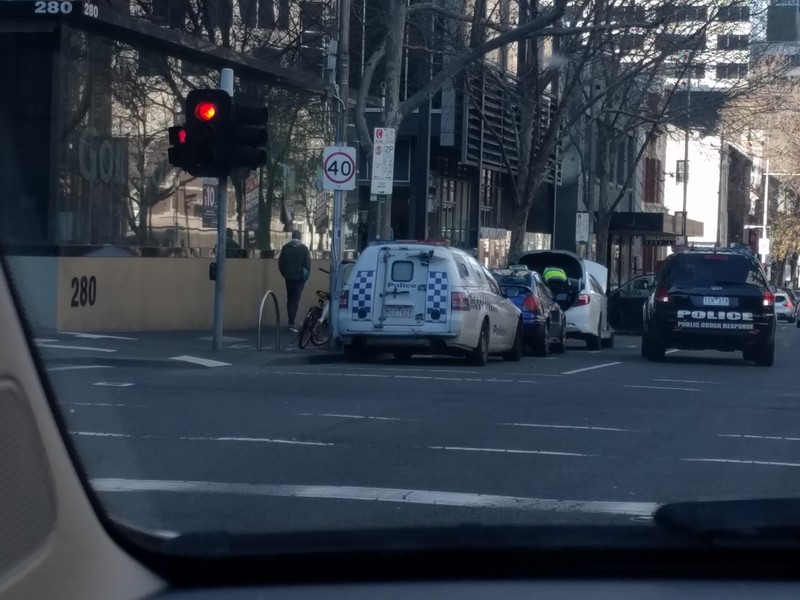
The police cars are very strange looking. It seems like the El Camino body
style really caught hold in Australia and now there are "pickup cars" everywhere
like that.
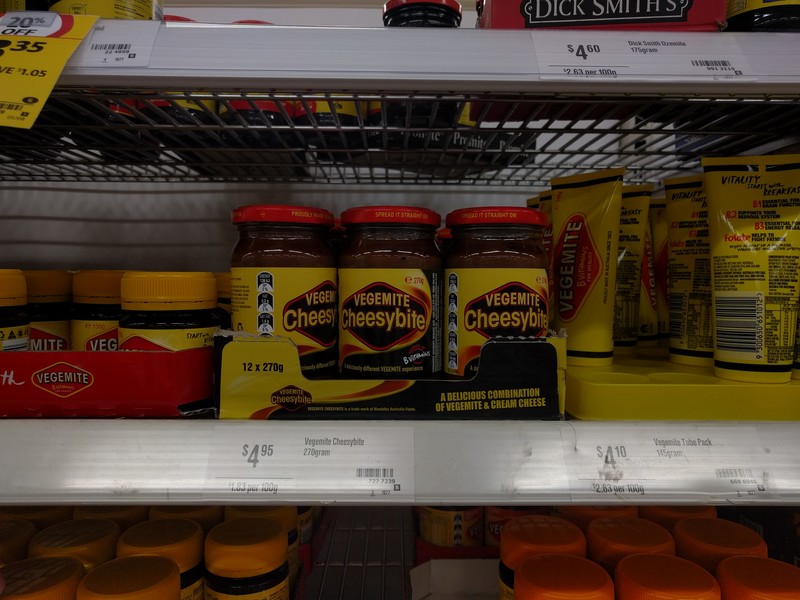
We chose not to indulge in this favorite Australian delicacy.
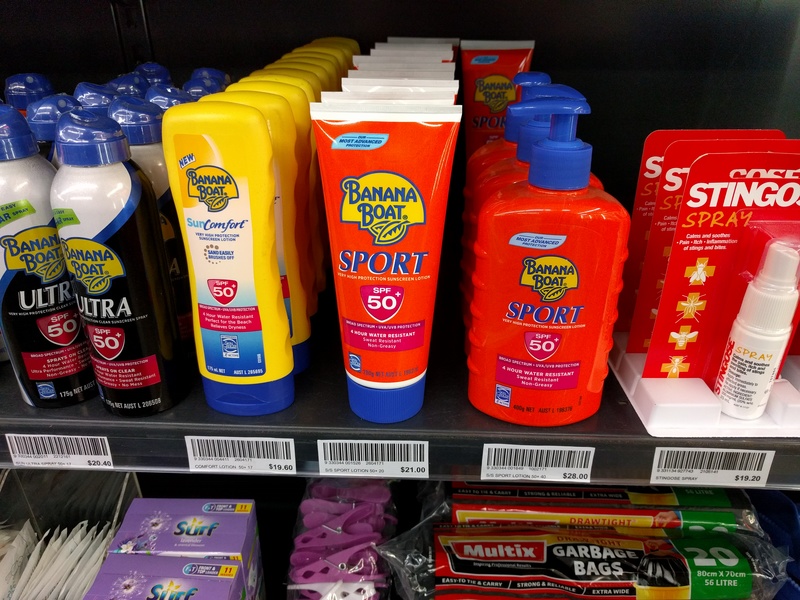
We were warned about the cost of sunscreen before leaving, and it turns out,
this warning was completely justified. $21 AUD = approx. $17 USD.
Days 4-6: Wilsons Promontory
An attempt to further seek out Australian wildlife was carried out via a
three-day backpacking trip in Wilsons Promontory.
The promontory is made up of numerous small and distinct biomes, ranging from
swamplands to rainforest to alpine forest to open grasslands. The wildlife
search was successful, with several up-close encounters with native bird
species, wallabies, and brushtail possums. Also my legs hurt after all that
hiking.
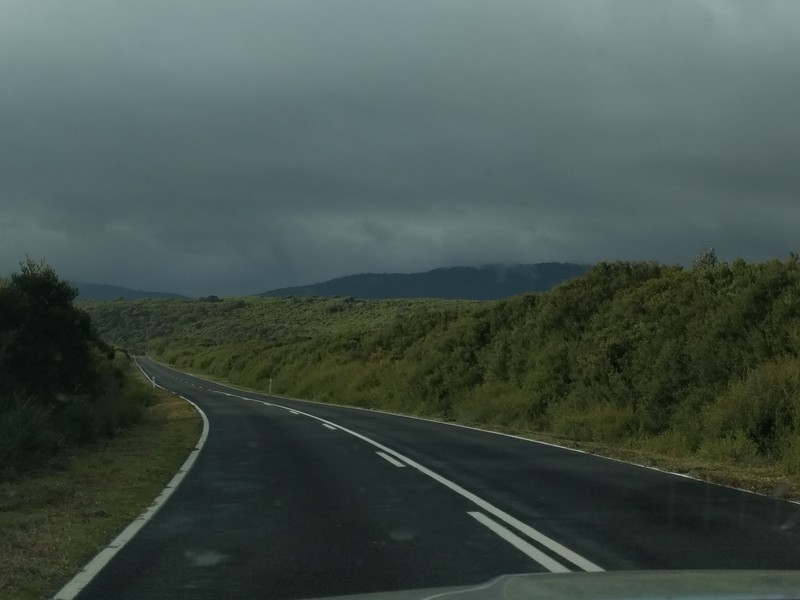
The drive out was beautiful, but it is still jarring to drive on the wrong side of the road.
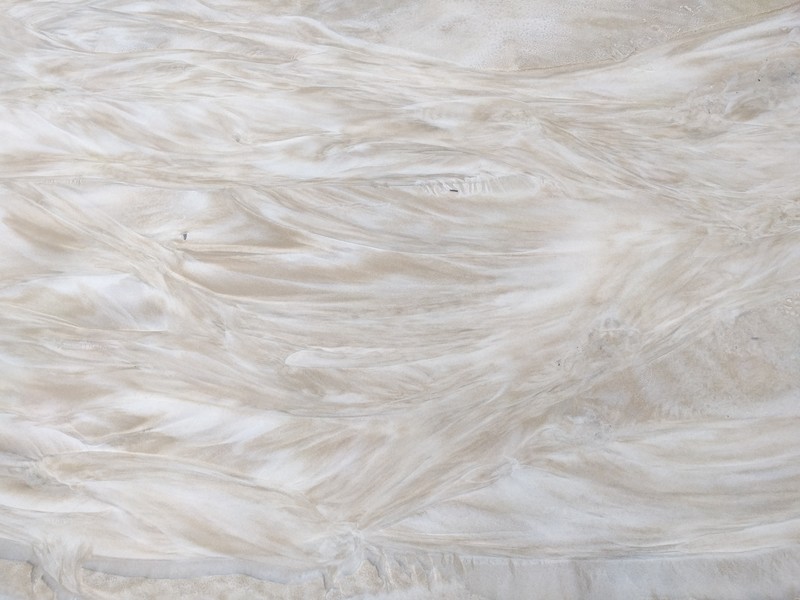
Our first stop was at "Squeaky Beach", where the sand is so fine it squeaks as you walk across it. We heard no squeaks, but the coloration of sand on the ground was certainly fascinating.
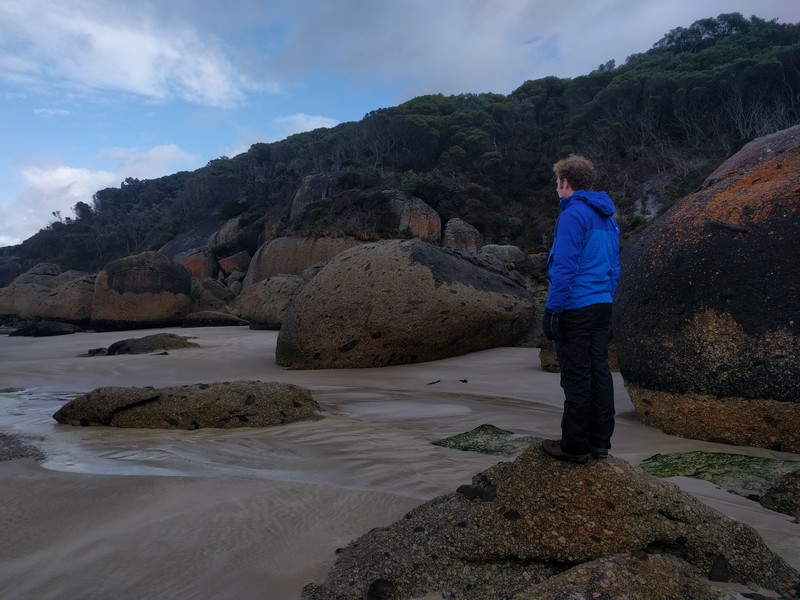
There were many rocks to stand on. The beach overlooks the Southern Ocean, an ocean that I have never seen before.
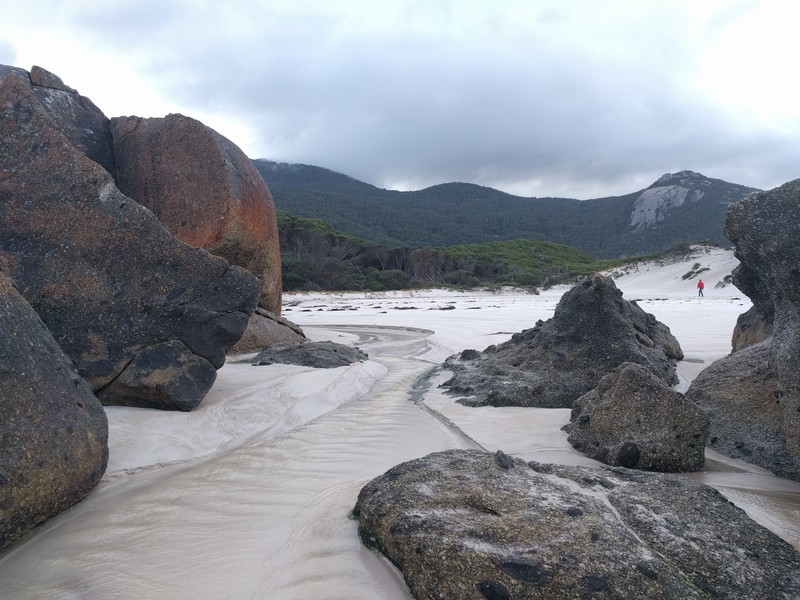
Small rivers course through the sand, between the rocks.
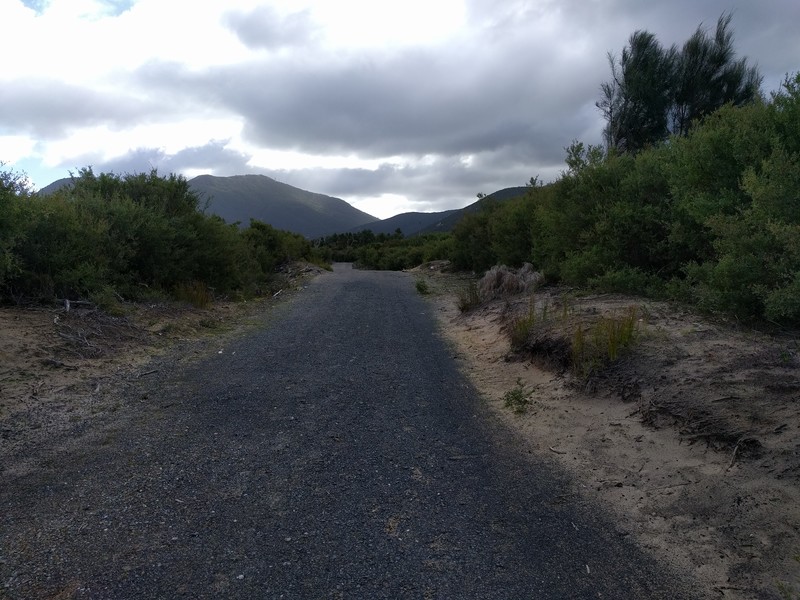
Further hiking brought us down this 4WD service road. To me, this almost looked like a typical scene from North America---until I took a closer look at the trees and plants.
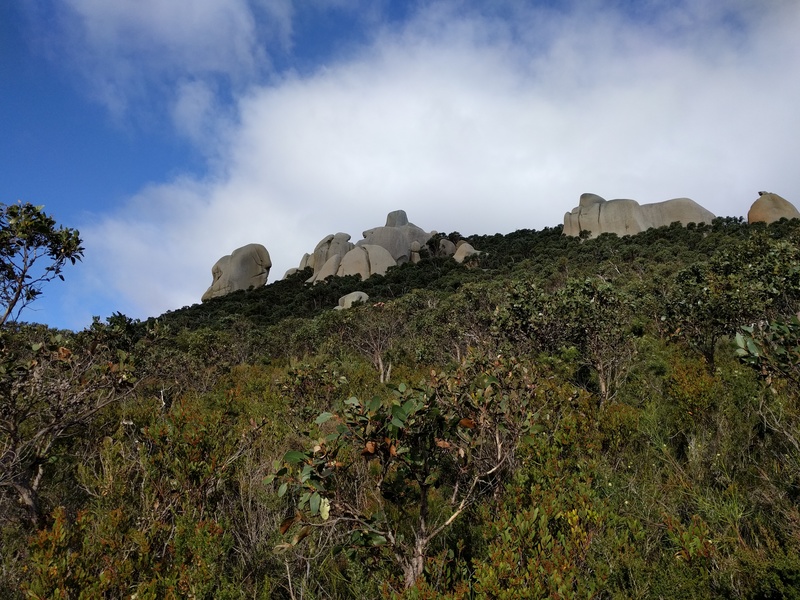
This particular area we were hiking through appeared somewhat arid. Lots of exposed rocks throughout the park.
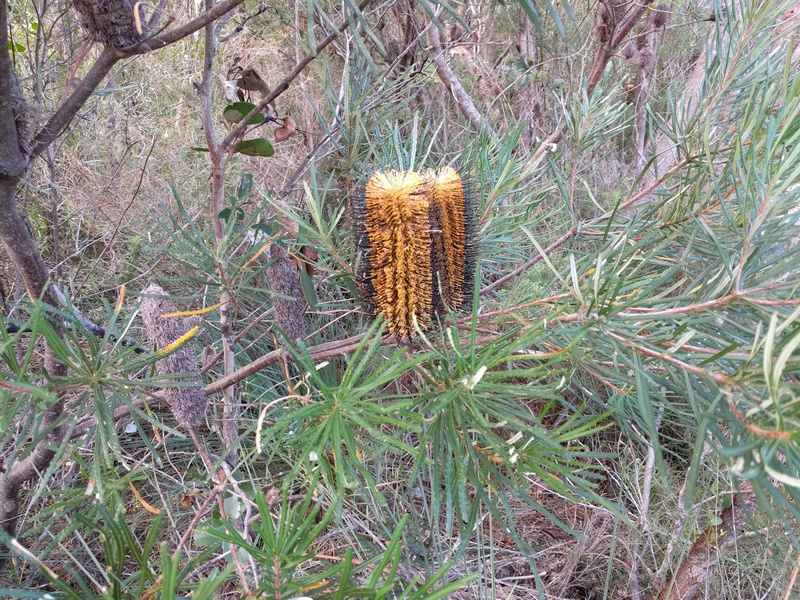
This is the strangest plant breeding mechanism I have ever seen. I'm not sure if I can even call it a pine cone or anything of the sort. I didn't try eating it.
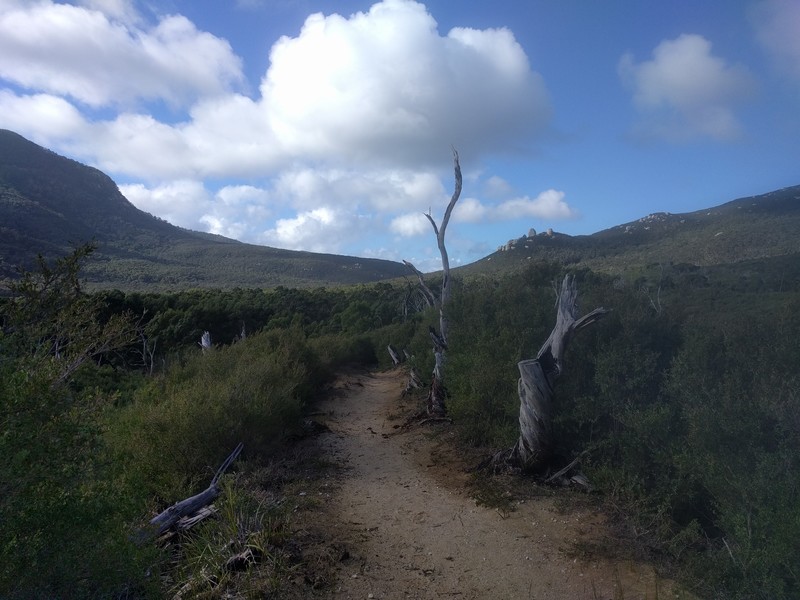
Some years ago, a fire swept through Wilsons Promontory, leaving the landscape dotted with dead trees. But other plants have sprouted up all around in the meantime.
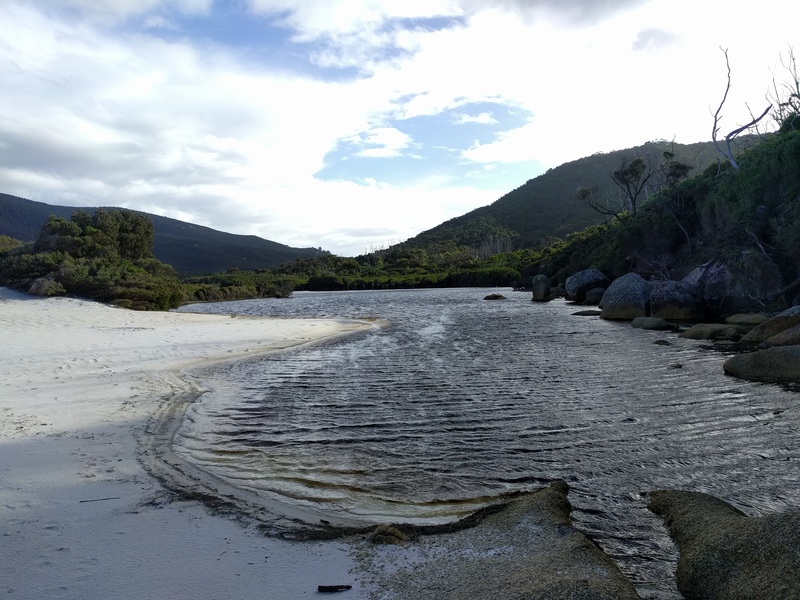
The more coastal regions had some inland lakes. I assume there is a lot living right around there, but we did not see anything.
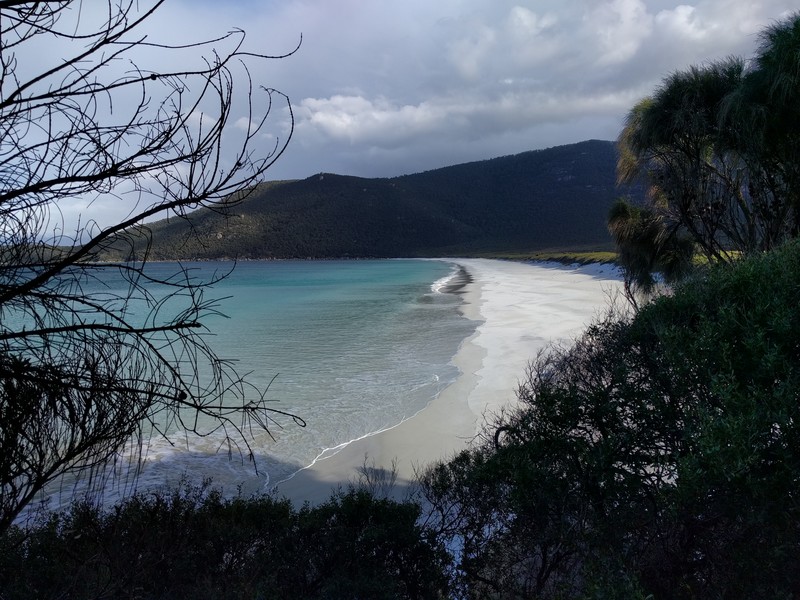
I've never seen water this blue, or beaches this empty.
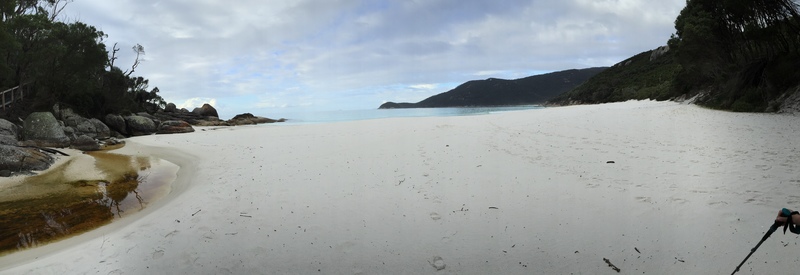
When the sun went down, we sat on the beach and stargazed. That's an experience I won't forget. The panorama here makes the beach seem smaller than it actually is.
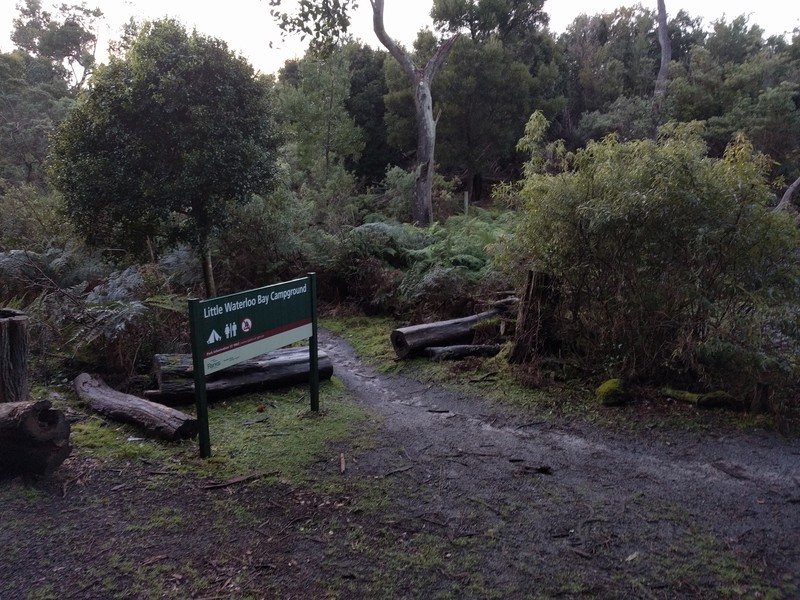
Our first campground was in an area that looked different than anything we'd seen that day---seems like some kind of alpine forest. We were the only people there.
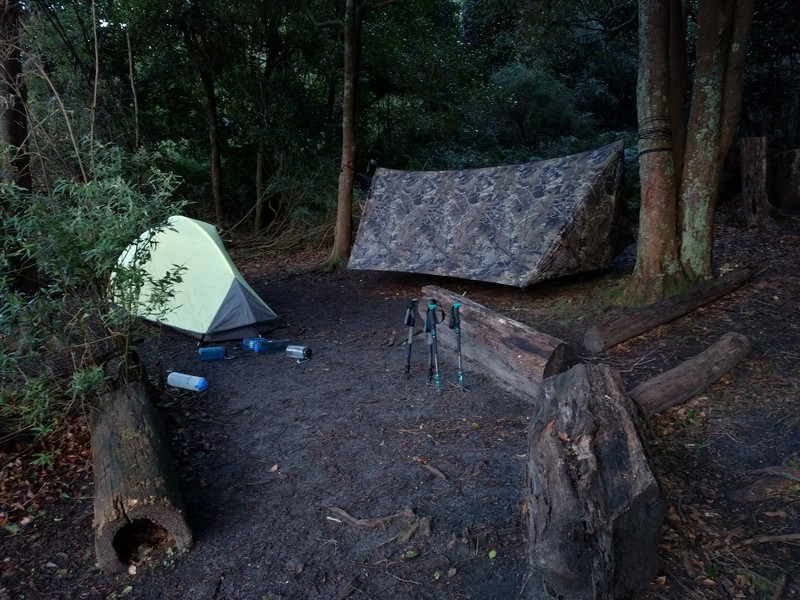
This is the campsite we set up. When the sun went down, I came back to the campsite without a light (because the moon was very bright), and heard something moving. I thought I saw the outline of something large, so I fumbled to get my light on and when I did, there was a huge wallaby right in front of me. We exchanged glances for a few seconds, then he hopped off.
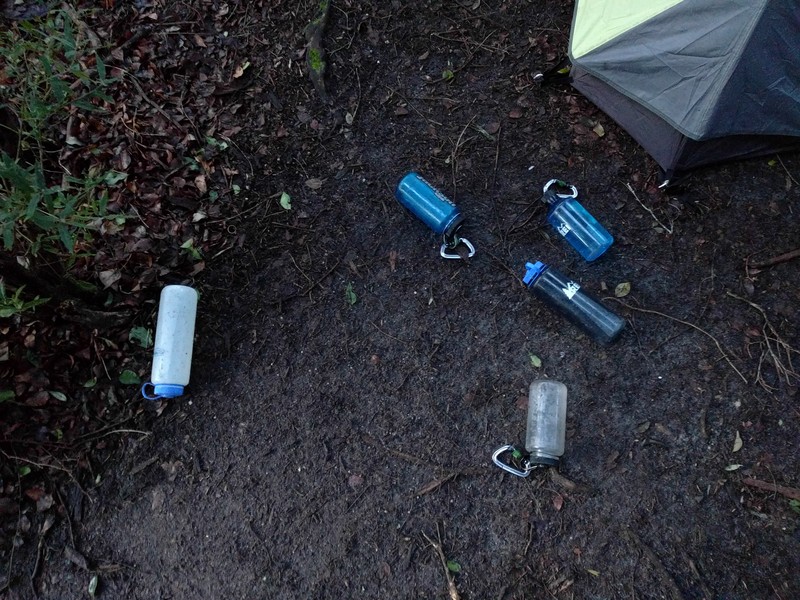
That same wallaby may have been who kept me up all night. At the beginning of the night, all of these Nalgenes were right next to each other. But something was playing with them all night (about three feet from my head). Luckily, it was not terrifying, because there are not bears or other apex predators in Wilsons Promontory. Still, it definitely kept me awake...
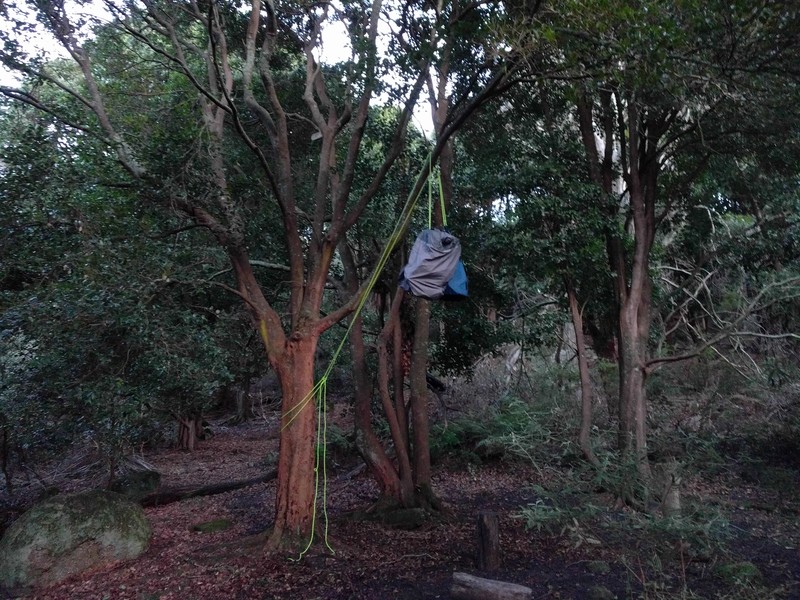
I'm happy we hung the packs, otherwise whatever was playing with the water bottles would have been playing with our equipment.
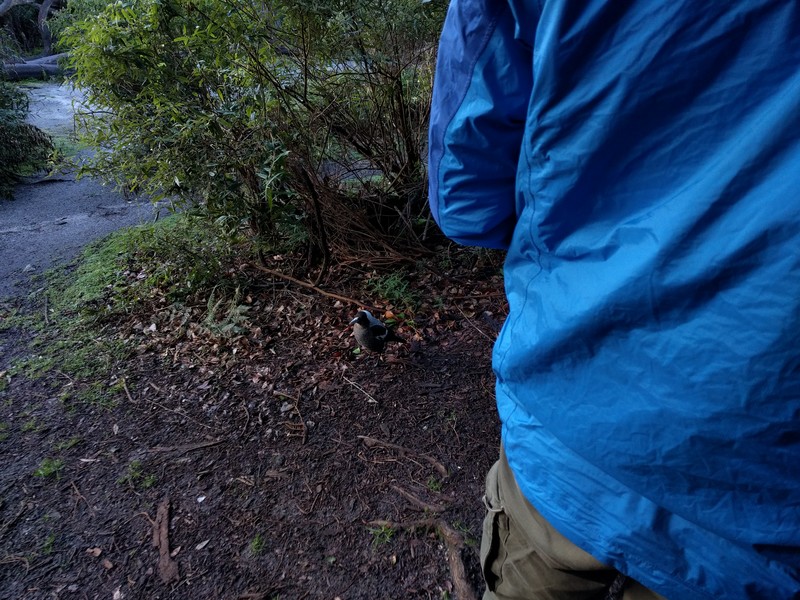
In the morning, we encountered some Australian magpies (or Tasmanian magpies?) that were very interested in our food and had no fear of humans. They spent most of their time within kicking distance. I guess that since there are no apex predators in the park, birds don't need to be afraid. There were also many other larger birds, but we did not get a picture of them.

The next day we climbed out of Little Waterloo Cove (seen in this picture, to the right), and found a nice rock to observe the Southern Ocean on. There are lots of little islands off the distance, but I am not sure you can see them here. Many of them are seal habitats or other protected areas.
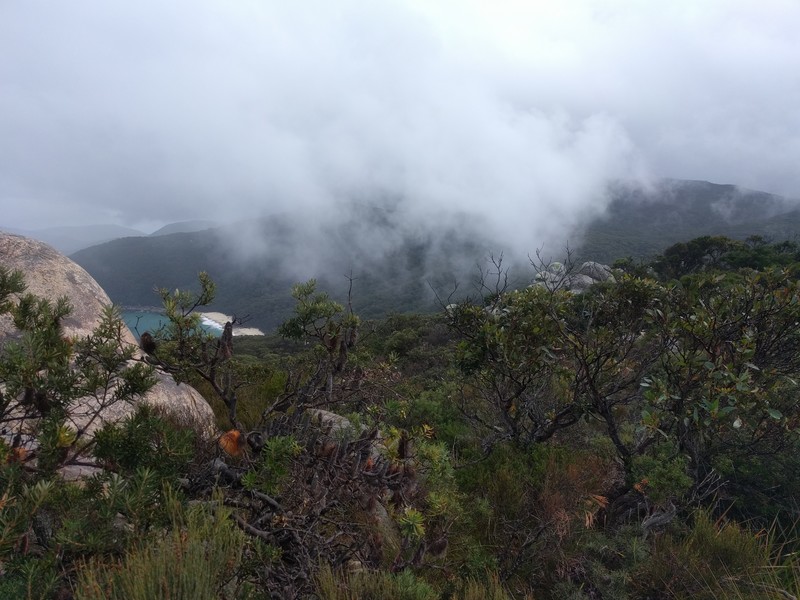
Very quickly the forest we were in changed to smaller vegetation as we topped a windblown mountain.
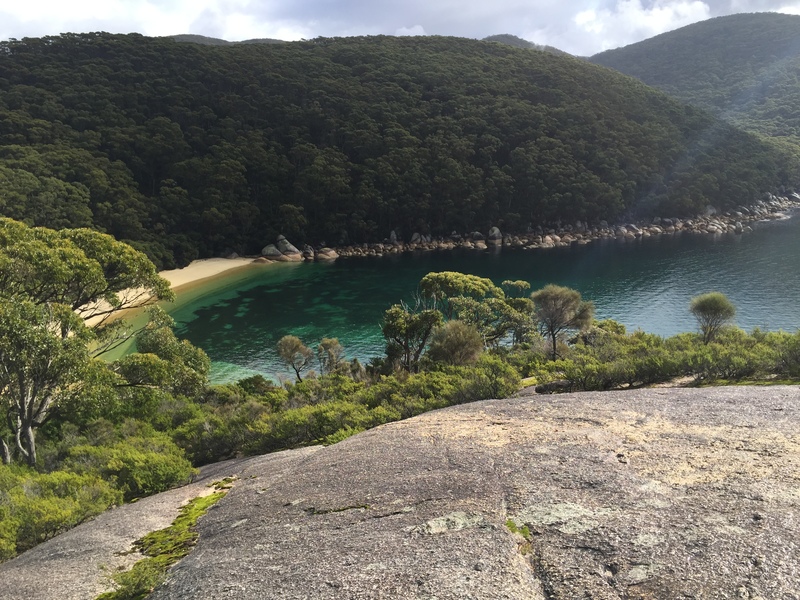
Here is Refuge Cove. It seems like all of the stuff on the bottom of the cove floor is seaweed or algae of some sort. Still, it's hard to believe that the water is clear enough to see through like that.
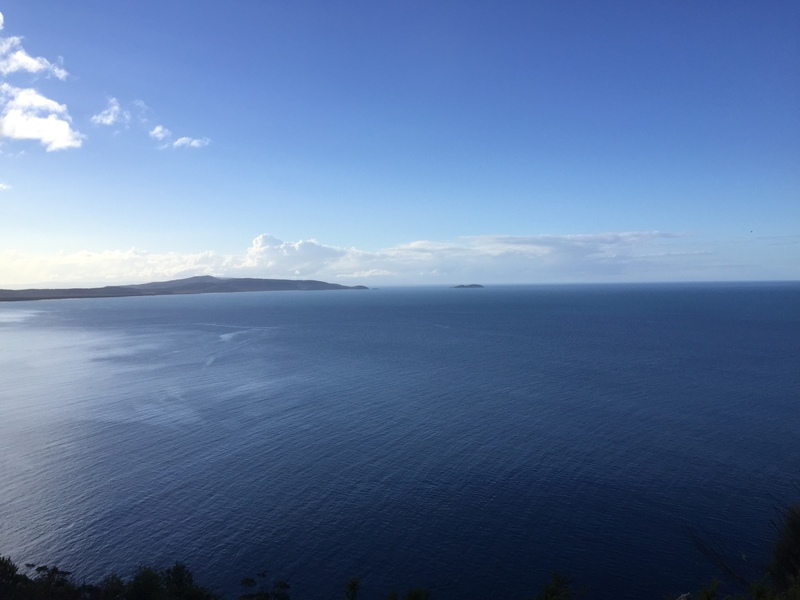
I know that I am only putting a few pictures here, so it might imply that we only saw these views occasionally. But really this was the sort of view we saw all day long.
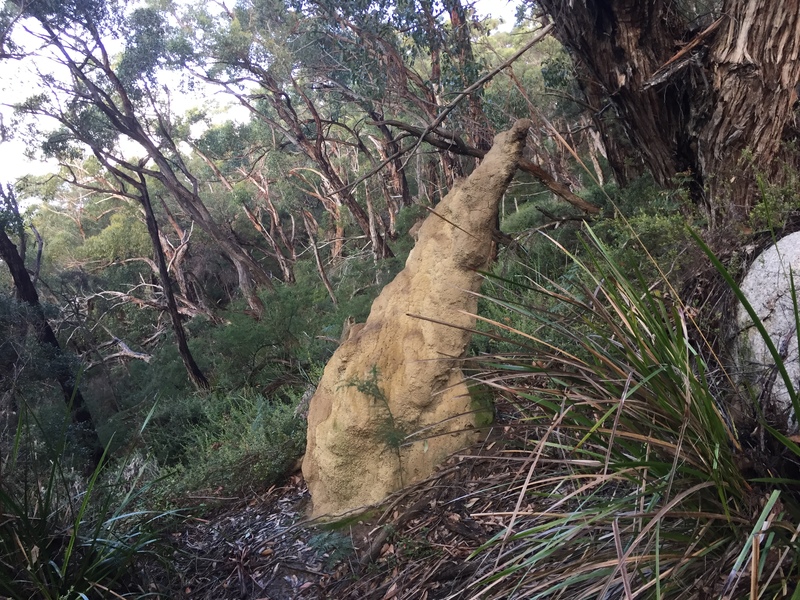
I think this is a termite nest? We saw many of these. It looks like they start as dead tree trunks, and then something (bugs I guess?) stack dirt around it. Stabbing these with trekking poles elicited no response, sadly.
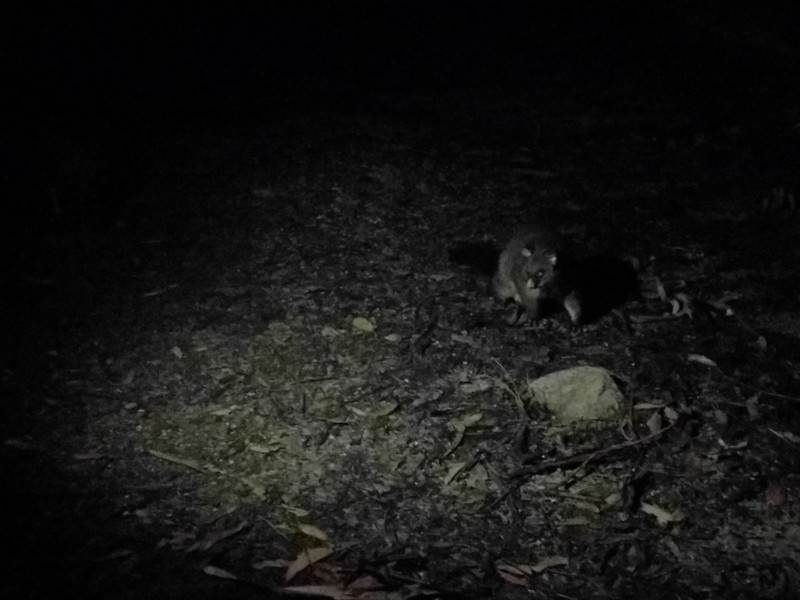
Our next campsite contained some visitors. This is a brushtail possum---it's
cute, unlike any possum I have ever seen. In our campsite there were two of
them, and they were very interested in our food and everything we owned. They
were completely unafraid of humans, and we couldn't scare them off. Also, one
of them shat on the rainfly covering Emily's hammock (good thing she put that
up). I expected to be bothered by them all night---but I didn't hear anything
from them. I think they were ravaging the only other group of campers that were
there. The other campers even reported that the possums were able to open
zippered pockets on bags; they lost some food to that!
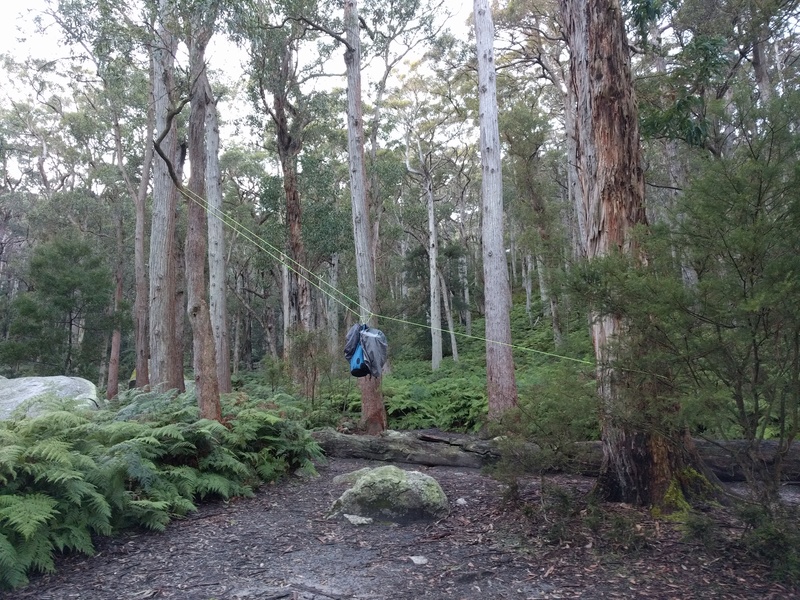
This right here is probably the best bear bag I've ever hung. It successfully kept the possums away. It's not high enough to keep actual bears out of it, but hey, there are no bears in Wilsons Promontory, and wallabies can't reach that high, so no problem!
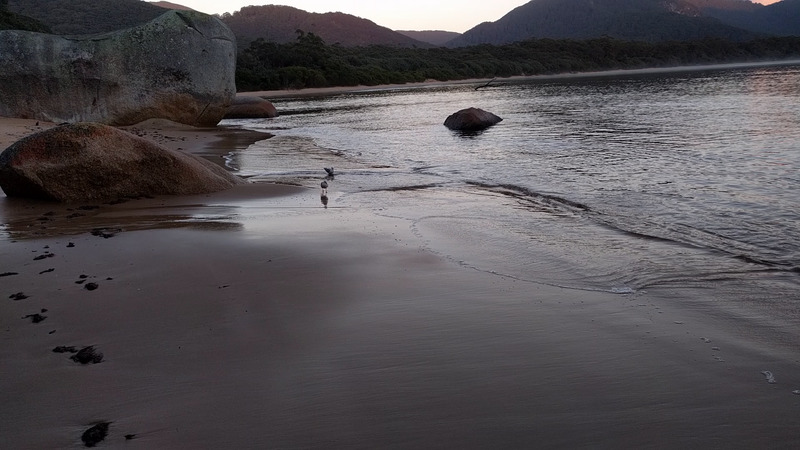
We walked down to the beach to see the sunrise (but the sun came up behind a mountain). Instead we were treated to seagulls digging---a behavior I have certainly never seen. (This is a video: click the image to watch it.)
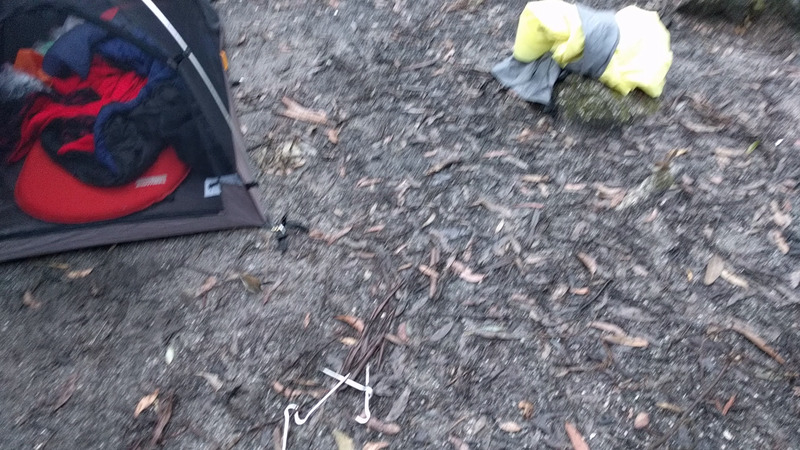
Back at the campsite, we were greeted by all these tiny little cute birds. Like all the other wildlife we met, they were completely unafraid of people. Here they are running around our campsite, looking for whatever food they can find I guess. (This is a video: click the image to watch it.)
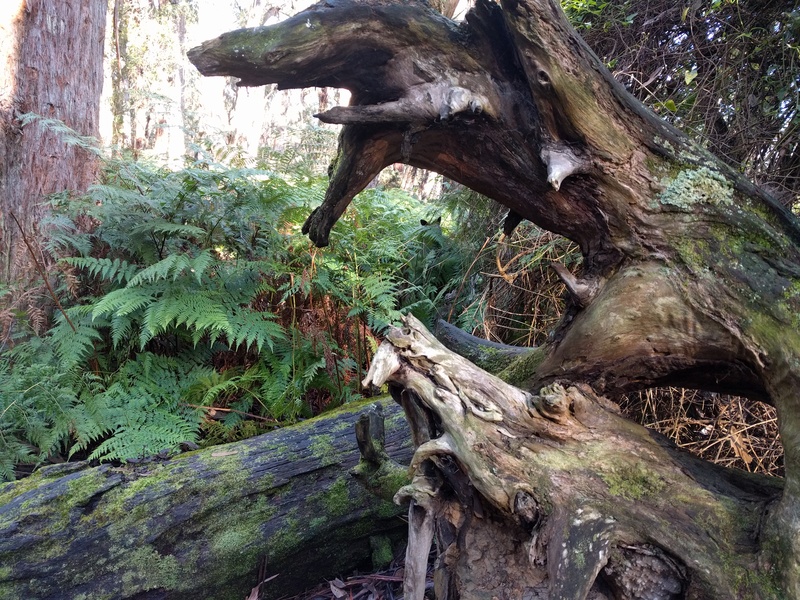
Look closely for the ears. This guy was right next to our campsite, just a few feet away.
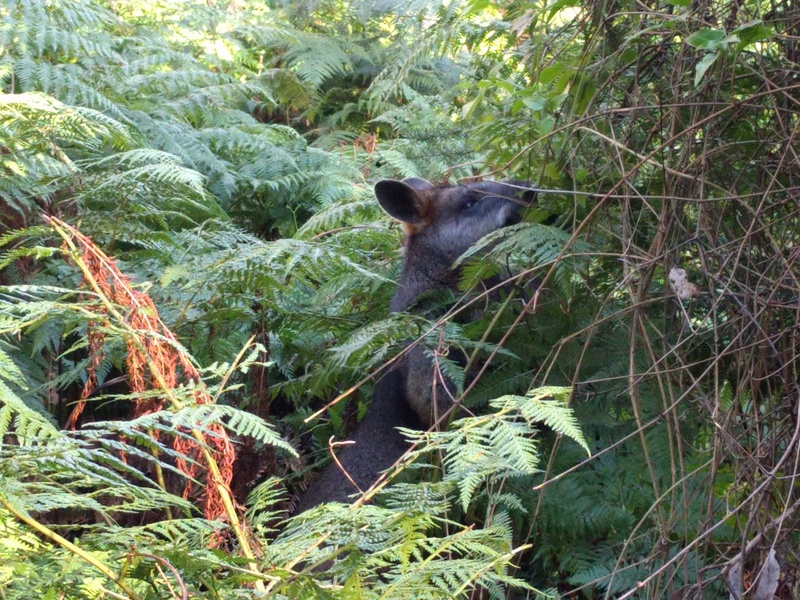
Wallabies appear to like to eat plants.
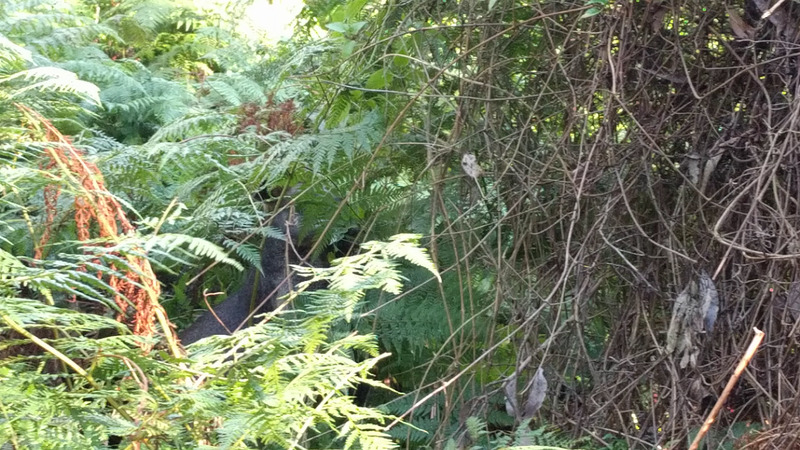
Here is a video of the wallaby. The beginning includes some very strange bird sounds I have never heard. (This is a video: click the image to watch it.)
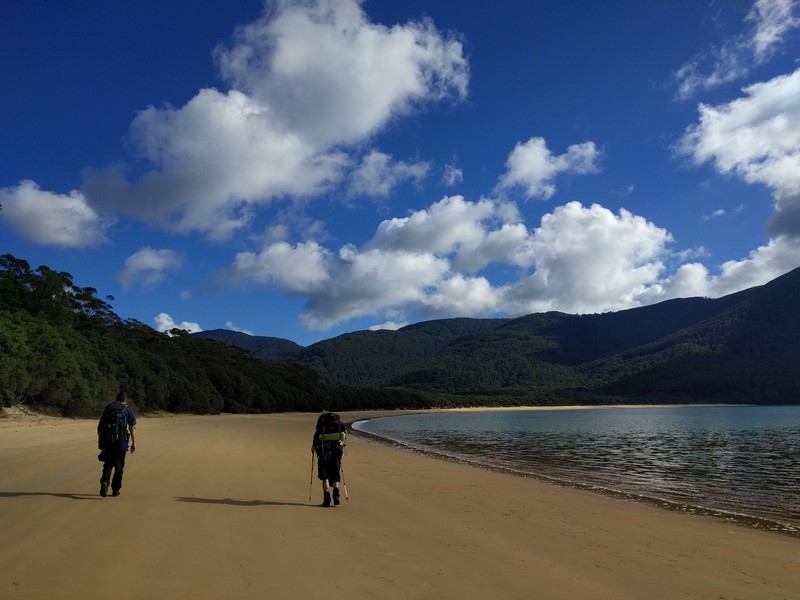
On the third day, we picked up a friend. He was staying with the other group, but he said he had a very hard time sleeping and asked if we could give him a ride back to Melbourne, instead of him having to stay with his group for an additional three days. We obliged and had some interesting conversations---he was a Brazilian exchange student here to work on his English skills. He said that we were a lot easier to understand than native Australians.
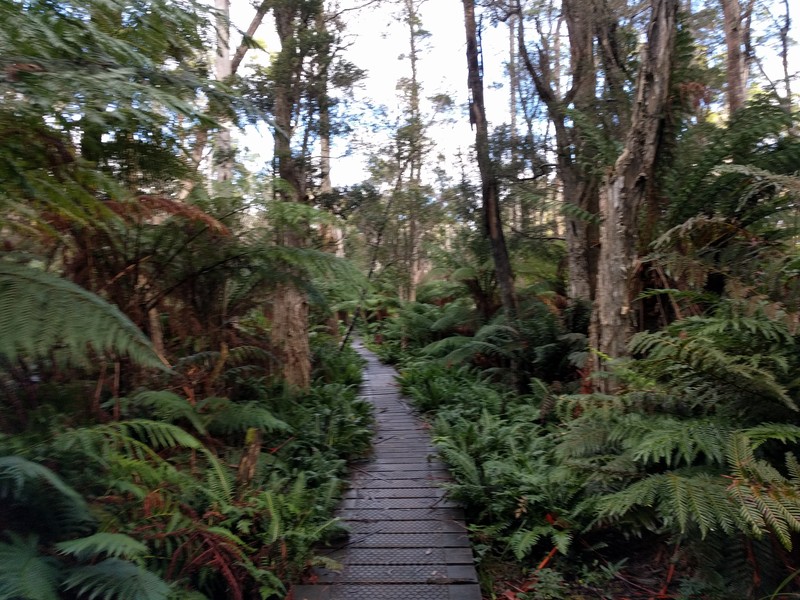
The next section walked through a swamp; completely unlike anything else we had seen. It almost felt prehistoric with the ferns and fern trees.
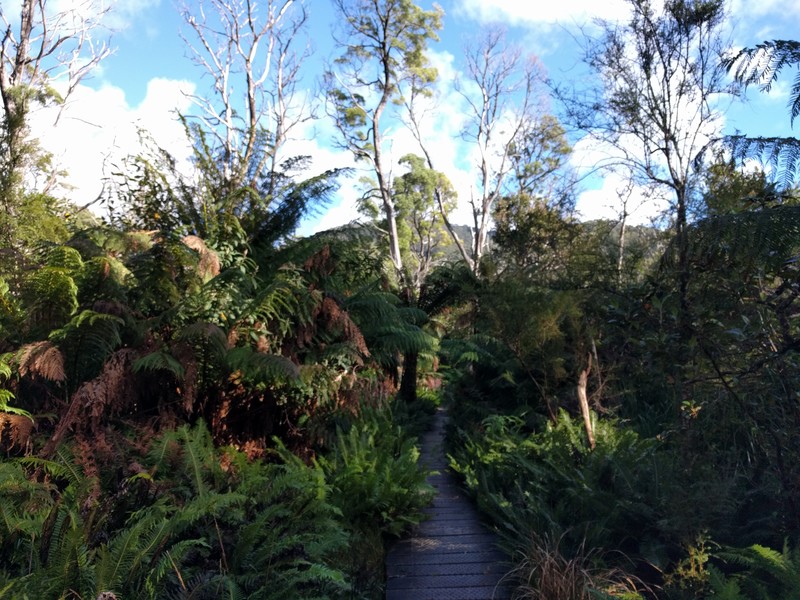
Just as quickly as it started, the swamp ended, dumping us into an area with relatively few tall trees.
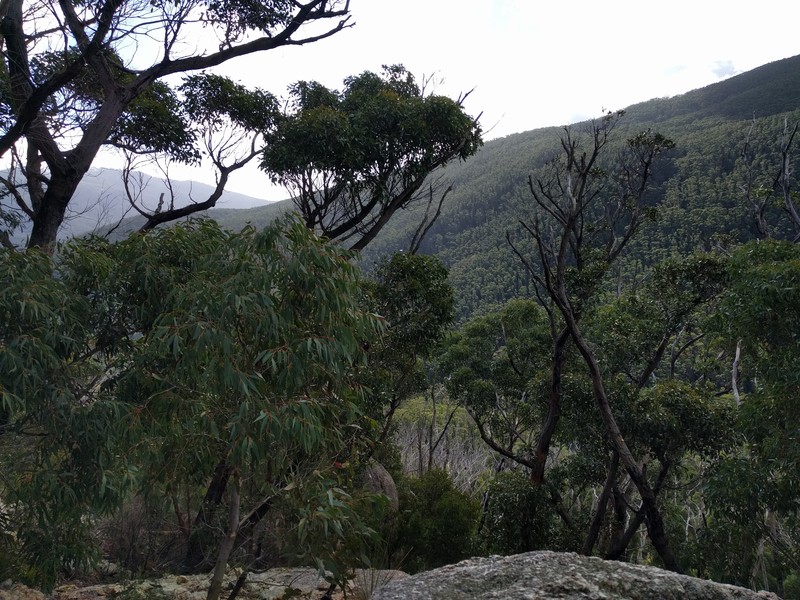
As we climbed, the trees got taller, and again the biome seemed to change.
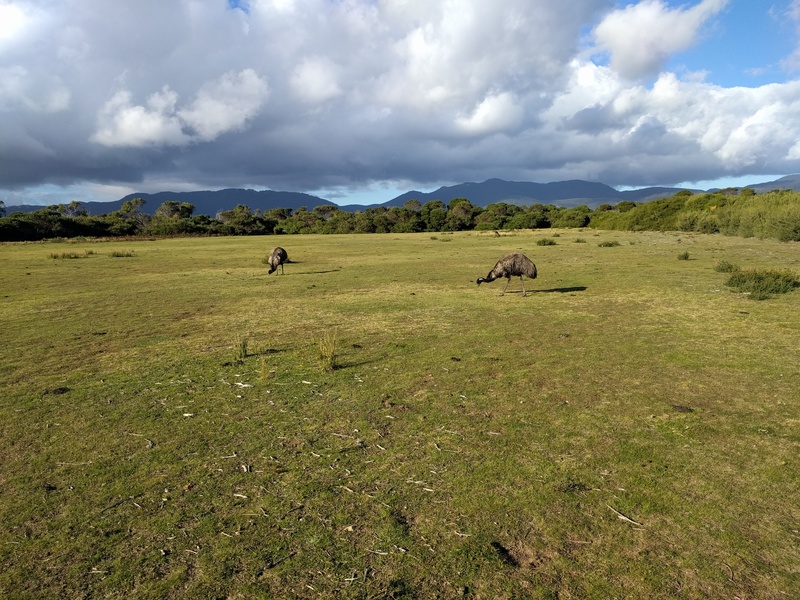
We finished our hike and headed out. But on the way out, we encountered emus and kangaroos. Naturally we had to stop and try to take pictures. Like the other wildlife we encountered in Wilsons Promontory, they did not seem to care much for my existence---but I wasn't willing to get too close.
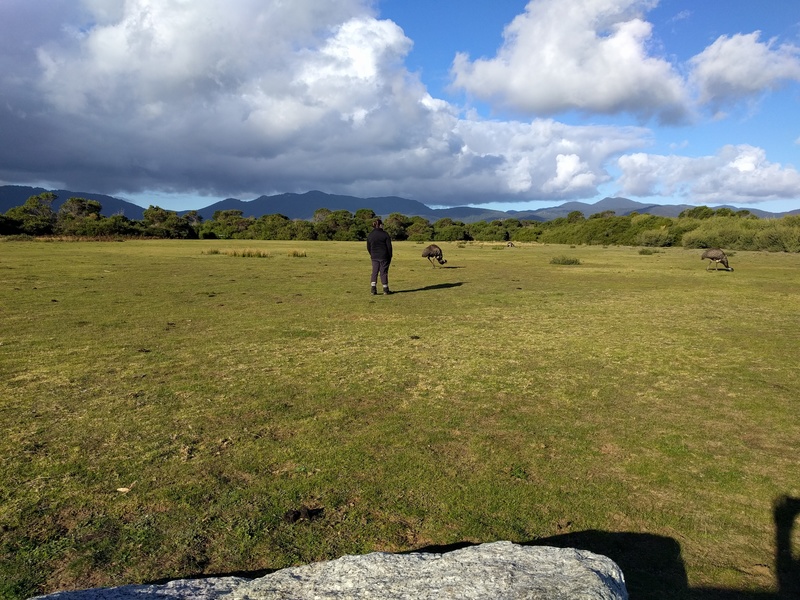
This was about the limit of how close Emily got. Really life must suck as an emu, you kind of just have two legs and a head; no arms to manipulate anything. These emus appeared to mostly walk around, biting grass out of the ground.
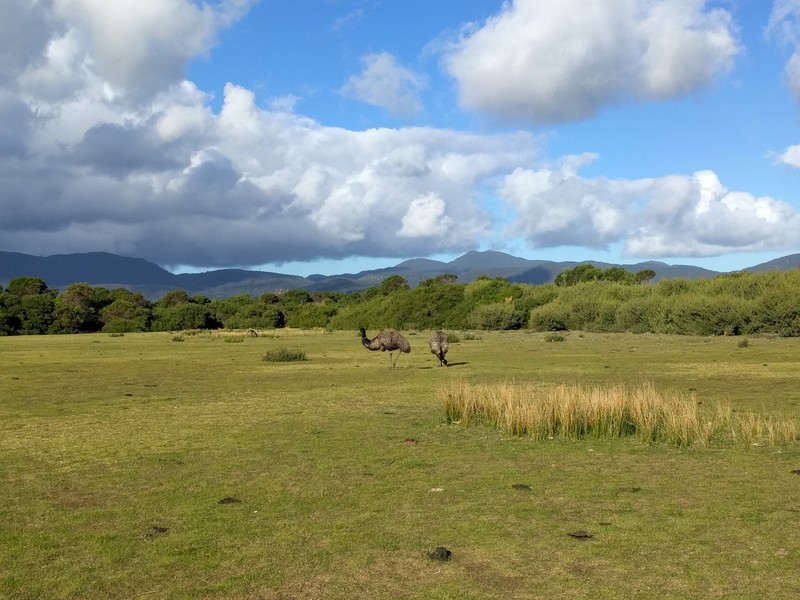
If you look closely, there is a kangaroo in the background.
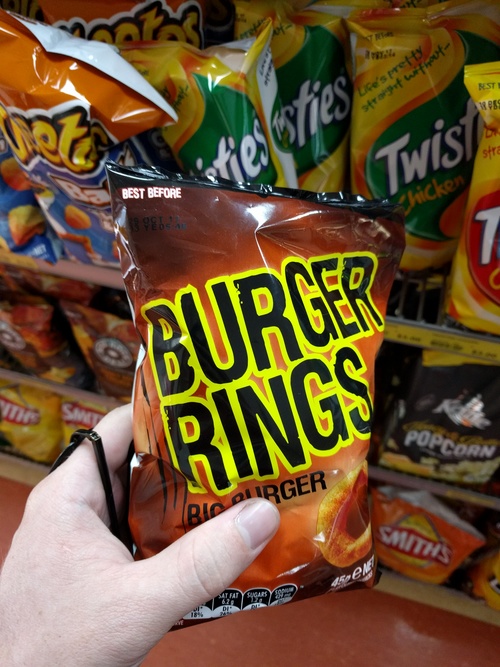
At a gas station on the way back to Melbourne, my curiosity got the better of me and I bought these. They did not taste like burgers; I'm not sure what they actually did taste like.
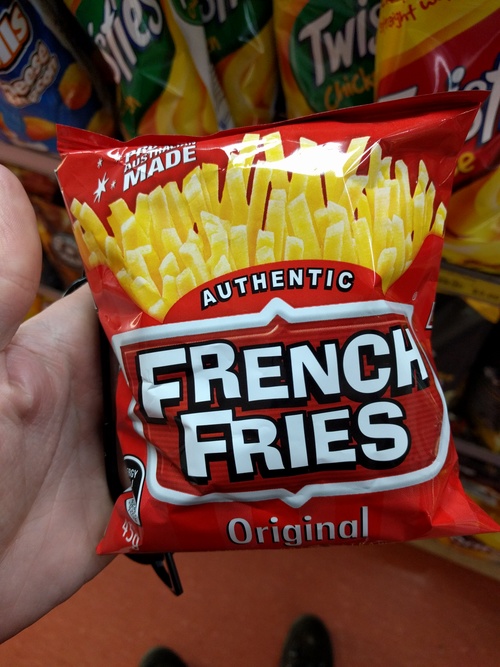
However, this was a bridge too far.
Day 7: Great Ocean Road
After World War I, the Australian government decided to make soldiers who had
just returned from the horrors of war commemorate their dead friends by spending
three years building a road over impassable terrain. This resulted in a
beautiful road full of breathtaking views. Parts of the southern coast of
Victoria are made up of soft limestone and sandstone, which allows the ocean to
cause fascinating terrain through erosion.
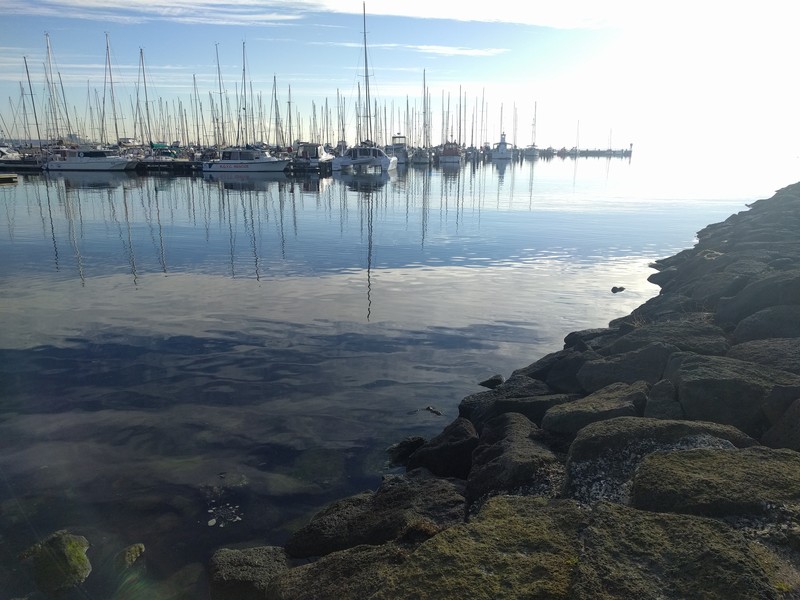
Such amazingly clear water in Geelong. I guess this means that if your boat is
leaking something into the water, it's easy to tell...
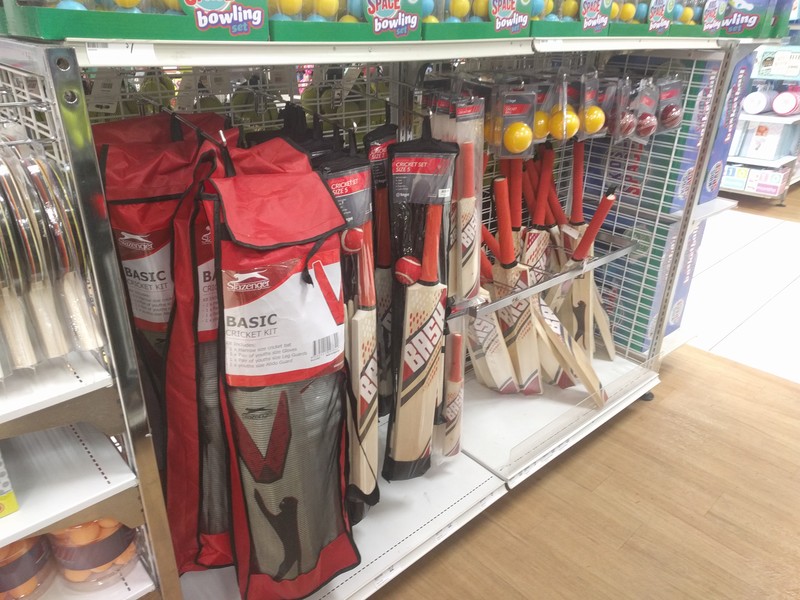
Do these kits come with rulebooks? Because I read the Wikipedia page on cricket
and I still don't get it at all.
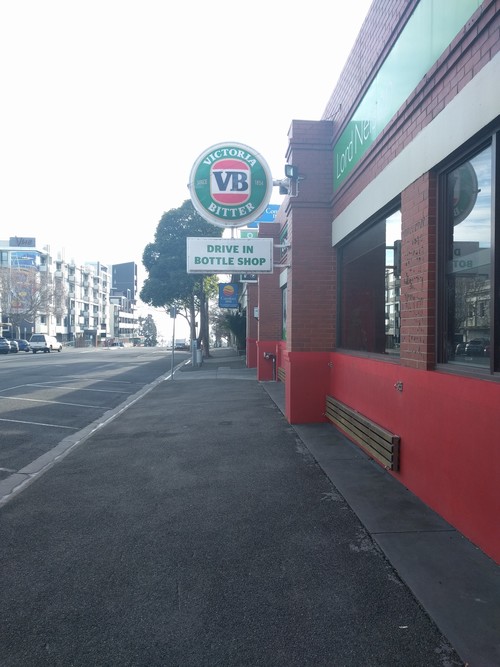
Is this...
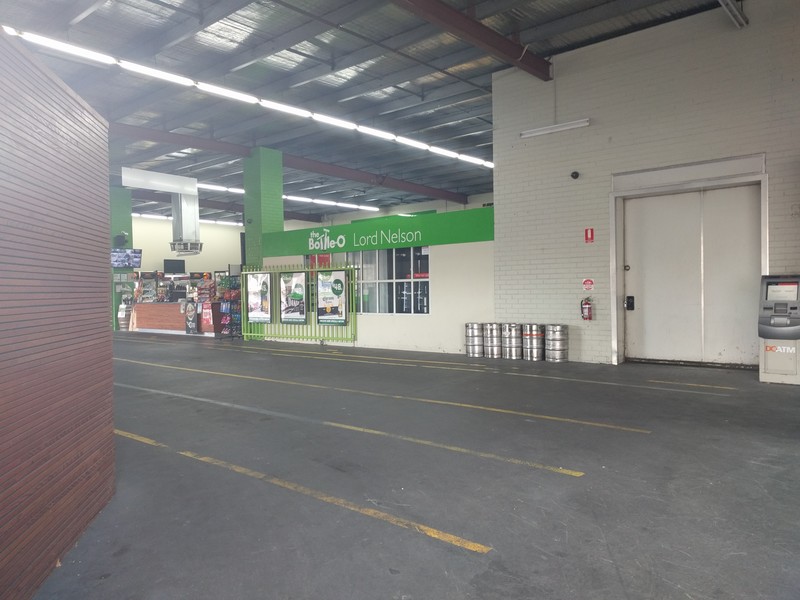
Yes, yes it is. Stay classy!
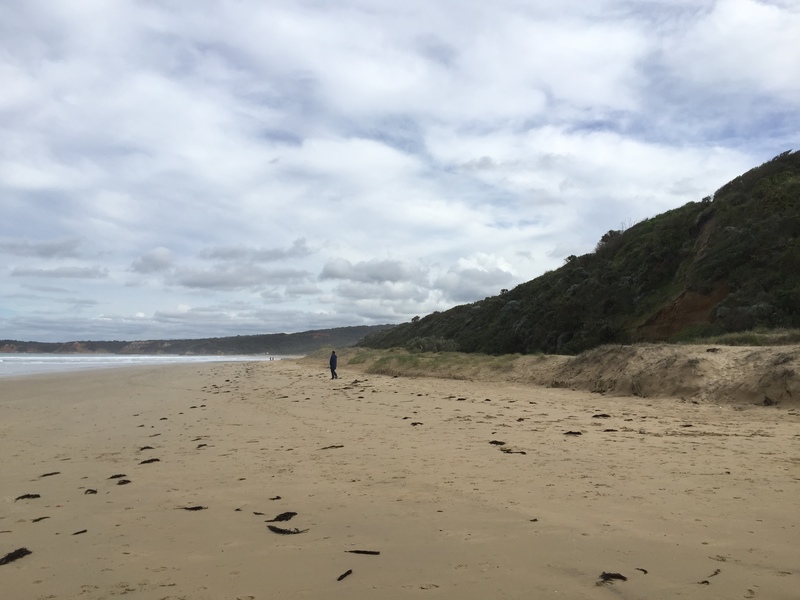
A typical beach in Victoria seems disappointingly devoid of wildlife (unlike
pretty much everywhere else we've been).
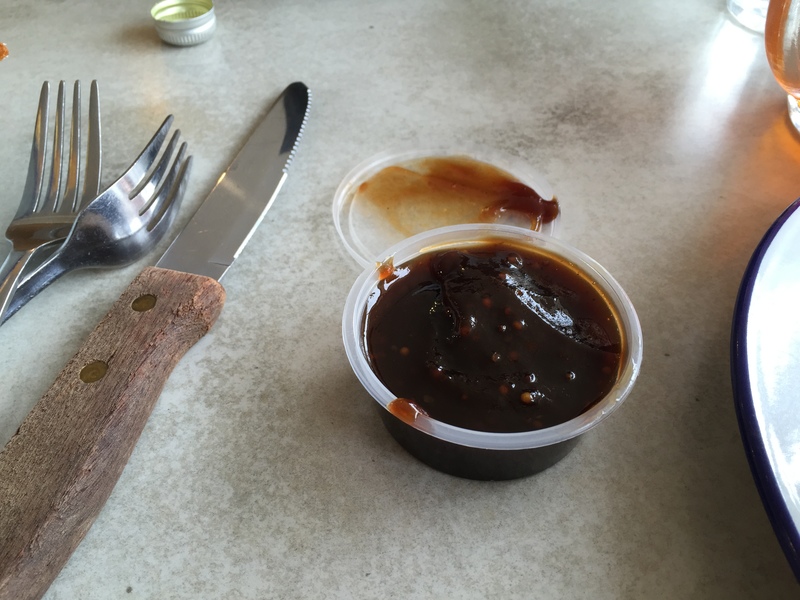
This was reported to be barbecue sauce. It is not valid barbecue sauce.
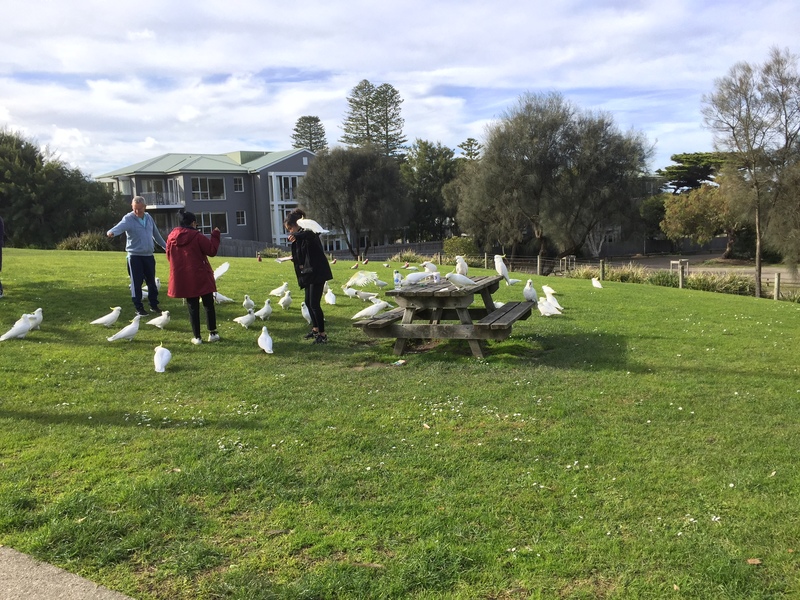
Now here is something I never thought I would see in my life: hordes of exotic
birds just hanging around a picnic table. The pictured tourists were stupid
enough to feed the birds and here they are paying the price for that stupidity.
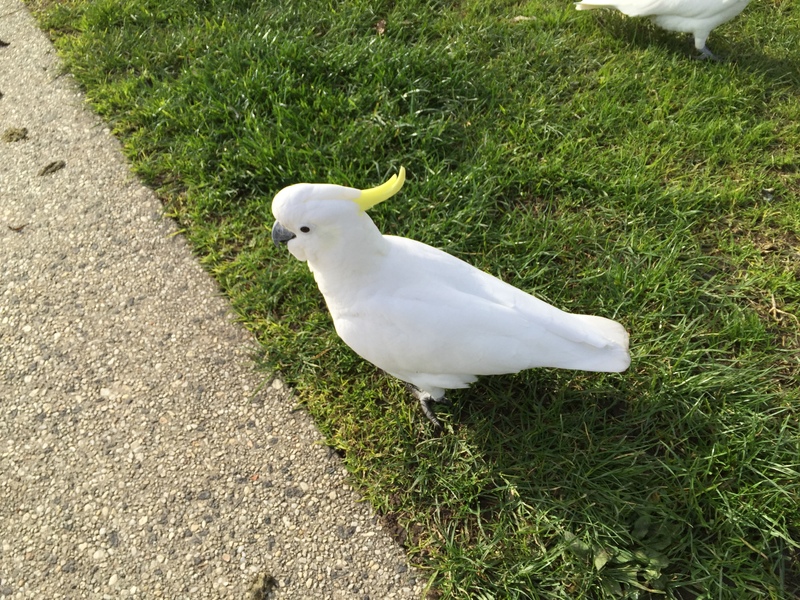
The cockatoos sometimes open up the yellow tufts, but I'm not sure what the
reason for that is. It is pretty though.
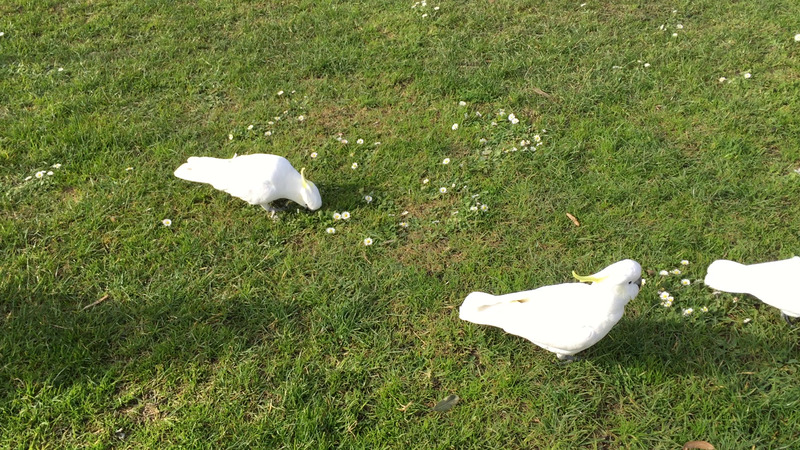
This is a video of the cockatoos attacking the previously mentioned unwise
tourists. My general understanding is that you shouldn't feed wildlife in
general, but I am not sure this understanding is universal. (This is a
video. Click the image to watch it.)
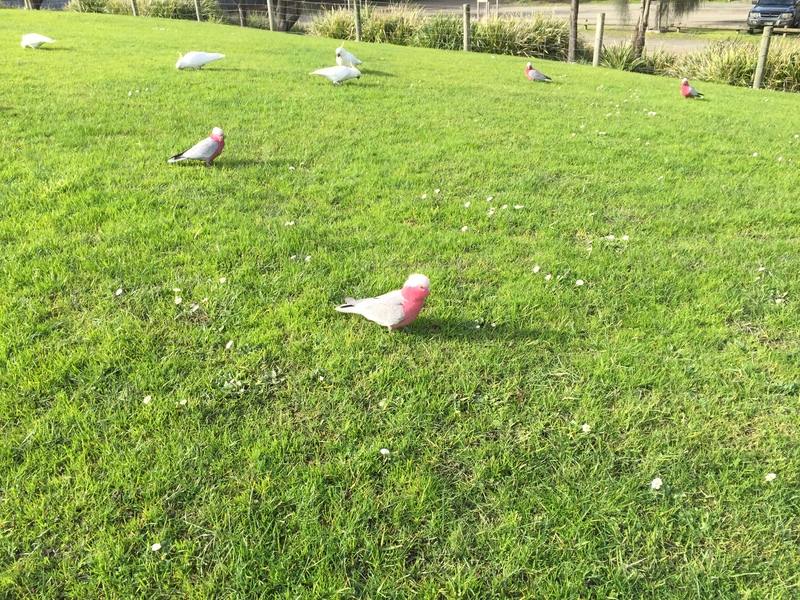
This is a galah, another strange bird I have never seen. These birds are
seemingly not very smart---while driving on a highway at 100kph (~65mph) I came
upon a galah, which put its life entirely in my hands by making no attempt to
move itself out of my way. (Maybe these birds are deaf? And blind?)
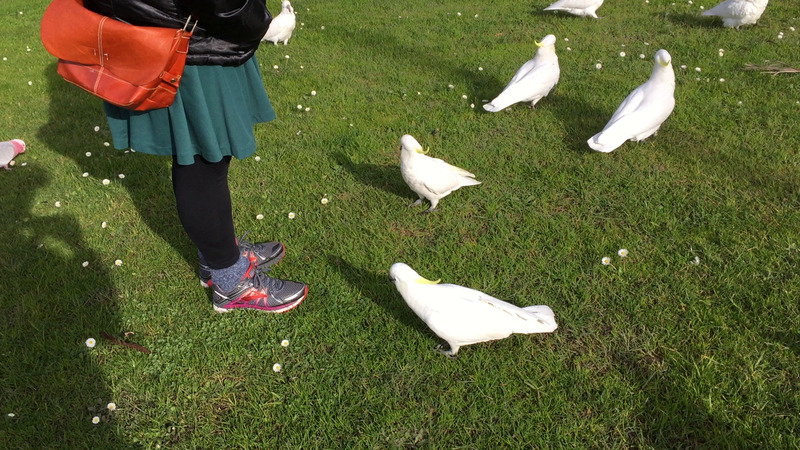
Cockatoos are willing to get up close and personal, as seen here. I think some
color in Emily's shoes was attractive to them. Like all other Australian
wildlife we have encountered, cockatoos also do not seem to respond to polite
pleas. I'll chalk that up to a subtle cultural difference it would take me
years of living here to understand. (This is a video. Click the image to
watch it.)
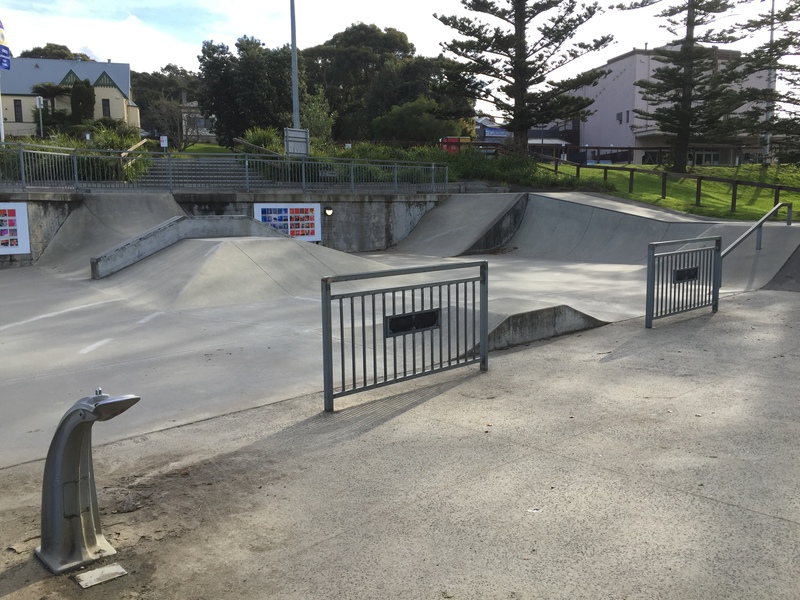
There are a surprising number of skate parks around Australia (or at least the
parts we are in). It seems like every town has at least one.
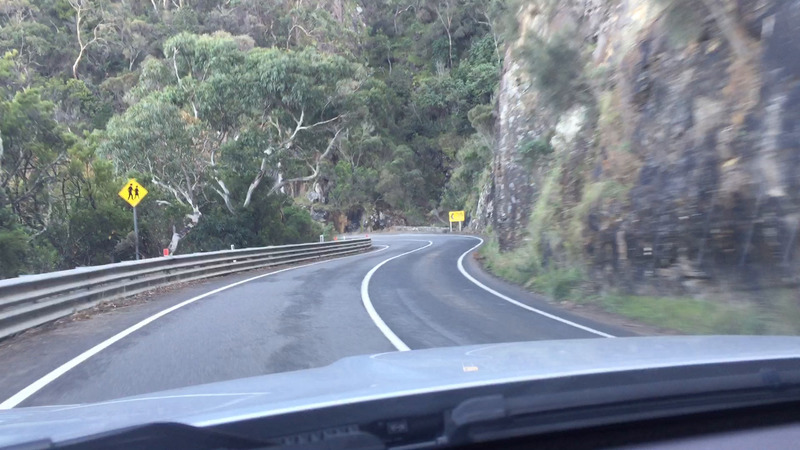
Here I've tried to capture a bit of the driving on the Great Ocean Road. Sorry
that the music isn't genuine Australian music---but really, you can only listen
to Wolfmother so long before you realize that it's all just the same thing over
and over again. (This is a video. Click the image to watch it.)
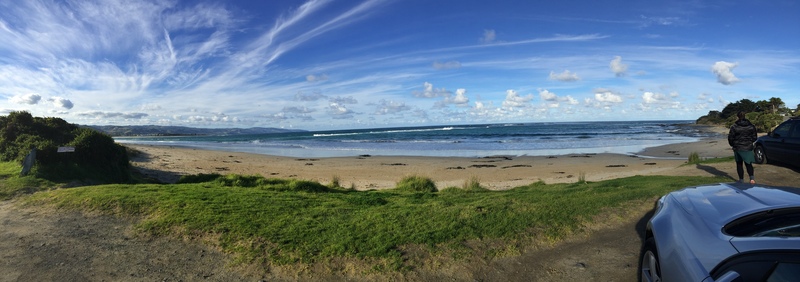
When at the Melbourne Aquarium we learned it's possible to go "rock pooling" and
see all kinds of neat things. (The guy at the aquarium exhibit had a confused
look when I said "Wait... I can just... go see these things???")
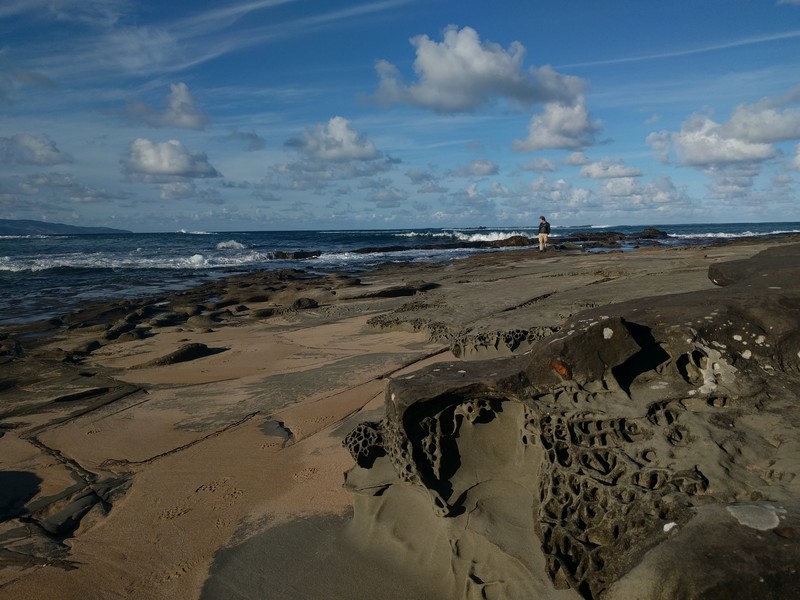
I'm not sure what process makes these strange rock formations, but they sure are
interesting to look at. Unfortunately, our rock pooling did not go well and we
did not see a single living thing. Maybe it wasn't low tide---not sure.
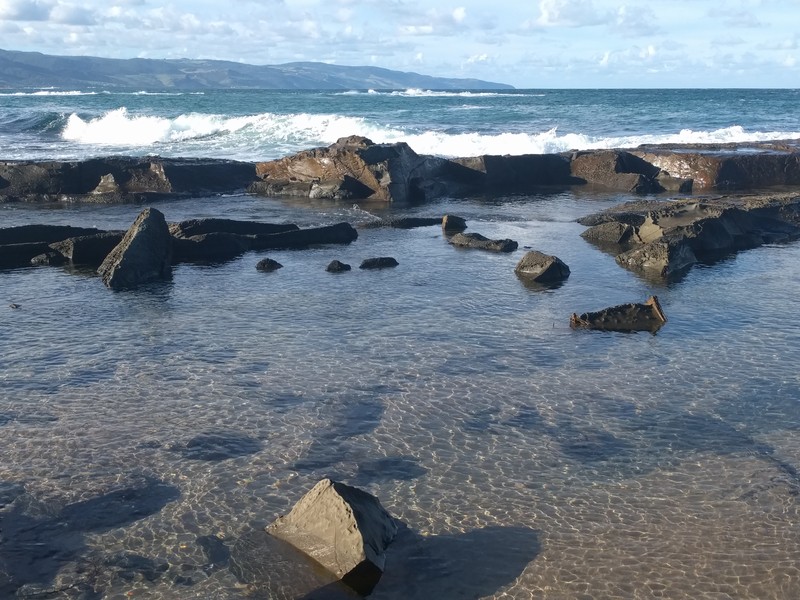
I would say our lack of wildlife encounter was disappointing, but I feel like if
I did say that I'd be overlooking the coolness of the rocks themselves.
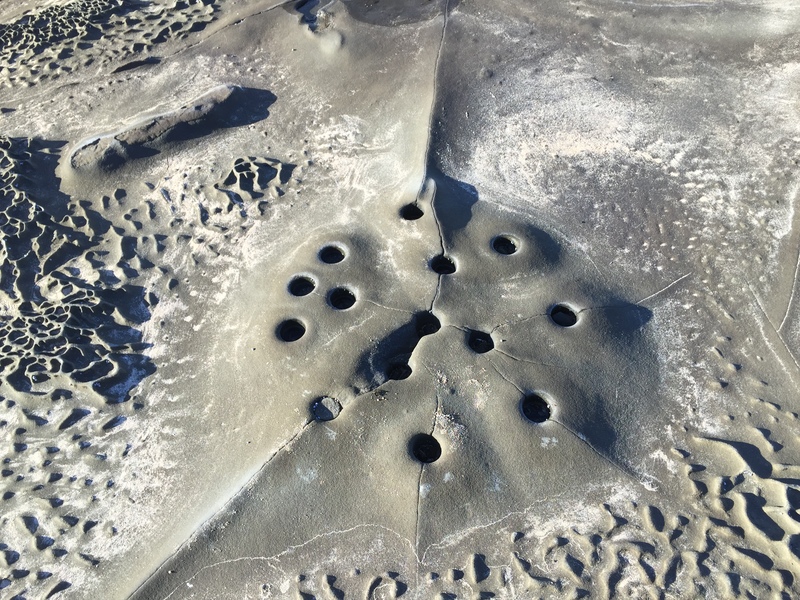
Like this one. I have no possible or plausible explanation about how these
holes could have been created.
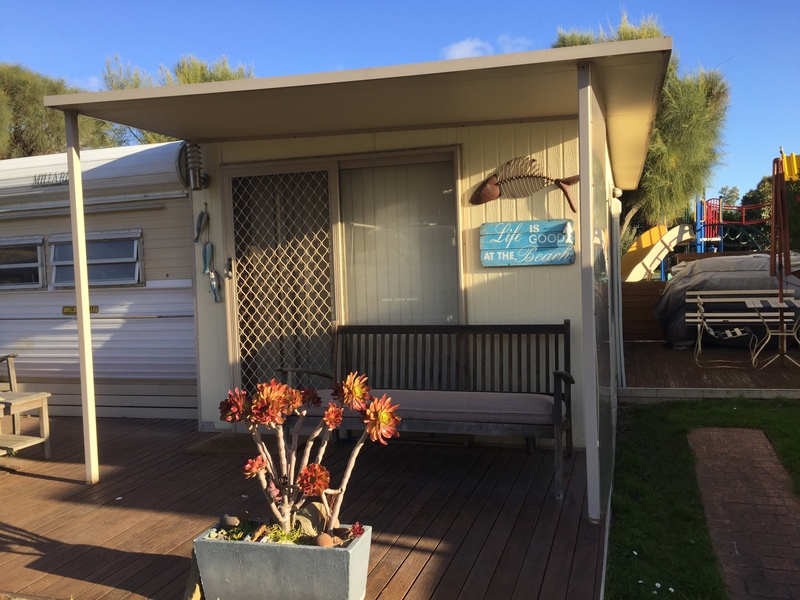
However, it's good to know that Australian beach culture also consists of stupid
trinkety signs about life at the beach. Also: check out this house. It looks
like a single-wide and a camper stuck together.

Later down the road, we found ourselves at the Twelve Apostles, the most
touristy attraction we've gone to yet. The viewing platform was thronged with
people taking pictures of the apostles. I decided, because I am Unique and
Different, to instead take a picture of the people taking pictures. Surely, my
pictures will be exhibited in a Meaningful art gallery someday.
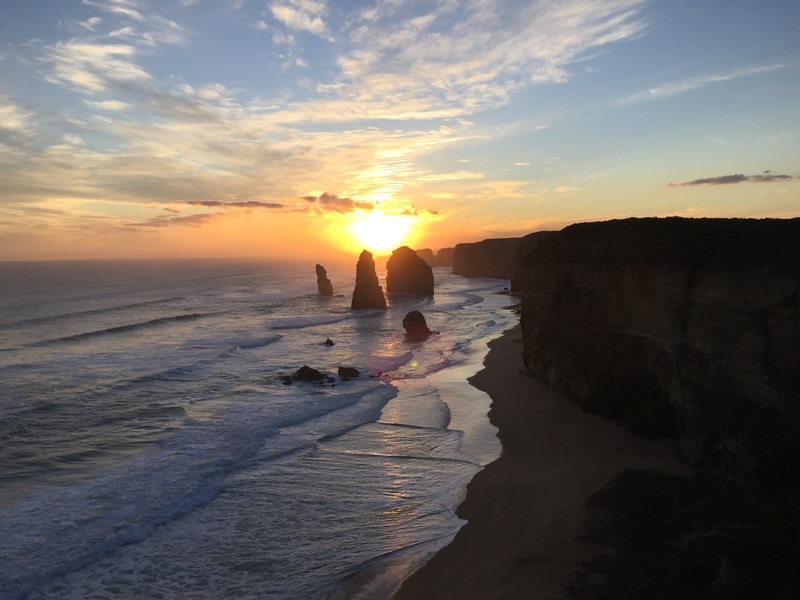
Here are the Twelve Apostles themselves. They are eroded limestone and
sandstone formations, and they change noticeably over time---sometimes they
collapse, sometimes the cliffs break away and form new ones. It's really
difficult to get a sense of scale from this picture of how large these rocks
are; my guess is they are 300-400 feet tall.
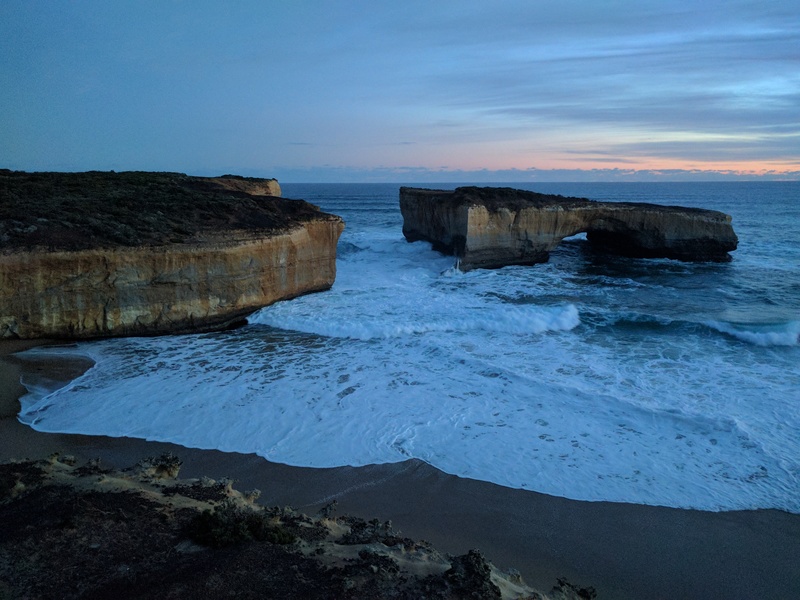
This formation is called "London Bridge". It used to be connected to the
mainland, but some years ago, part of it collapsed, stranding two people on the
new island. They had to be rescued by helicopter; I suppose otherwise they
would have gone all Lord of the Flies and starting forming cults and killing
each other.
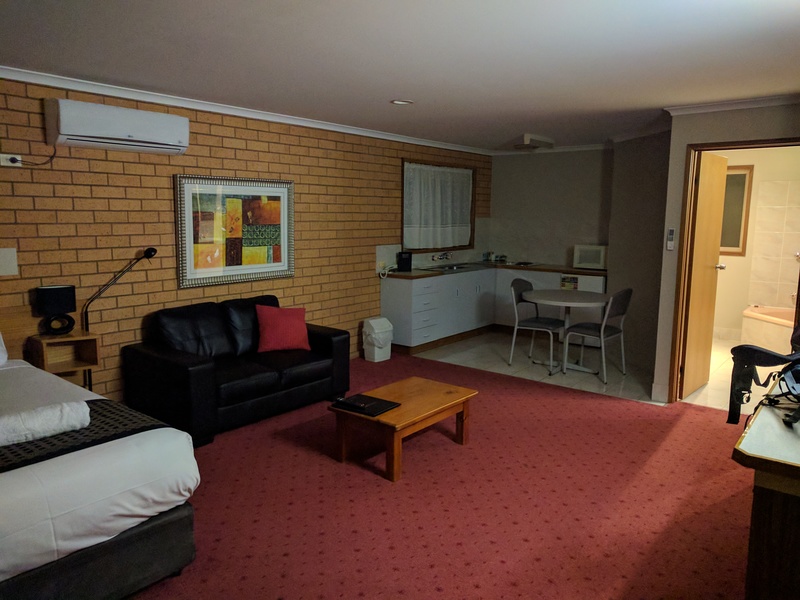
The cheap hotel room we got was extremely large! Also, it seems like
Australians like to give things high ratings. Typically the ratings I see for
cheap hotels in the U.S. on booking.com are in the range from 4-6 ("adequate",
"mediocre"), but here every single hotel has like an 8.5 or higher
("exceptional!", "wonderful!"). I can't figure out why this is, since we still
haven't stayed at a hotel where the water temperature is consistent in the
showers. Perhaps, with all the dangerous wildlife, any situation where one is
not actively dying is gloriously great to an Australian. I like that
perspective.
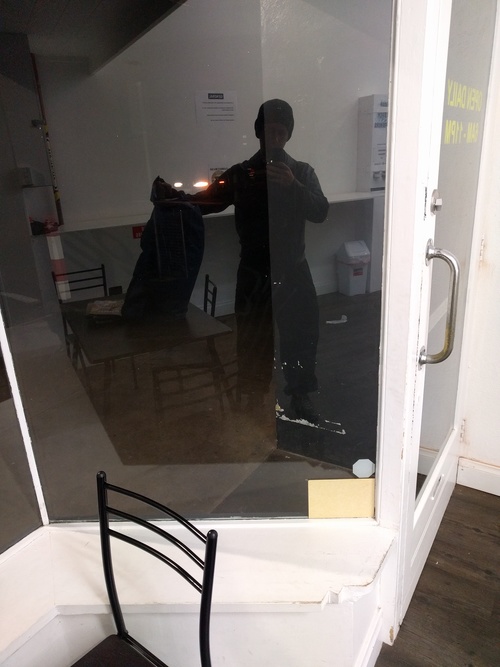
Unfortunately, this particular day was laundry and cleaning day, so I had to go
to the local laundromat dressed in the only things I had left, which were all
black and included my way-too-large-why-do-I-even-own-these hiking pants. I did
receive some strange looks, but by now I am used to that.
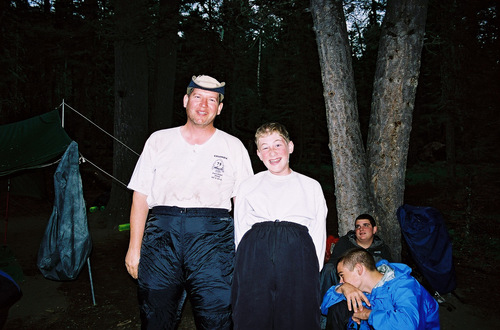
Blast from the past: I owned those pants 15 years ago too. At that time they
were also hilariously oversized. This raises the question even further of why
these were ever purchased in the first place: one of the great mysteries of
life.
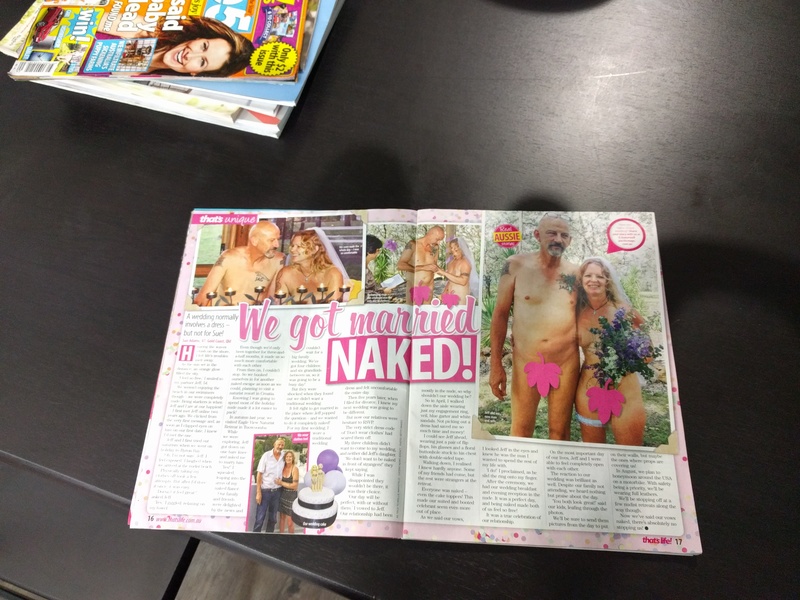
Clearly the U.S. does not have a monopoly on rednecks.
Day 8: North to Mildura
Australia has about the same land mass as the U.S. (...roughly speaking) but
fewer people than live in Texas. This means once you leave the cities, it gets
rural very fast. On this day it was discovered that rural towns in Australia
have a surprising resemblance to rural towns in the U.S., sometimes complete
with dying small downtown area.
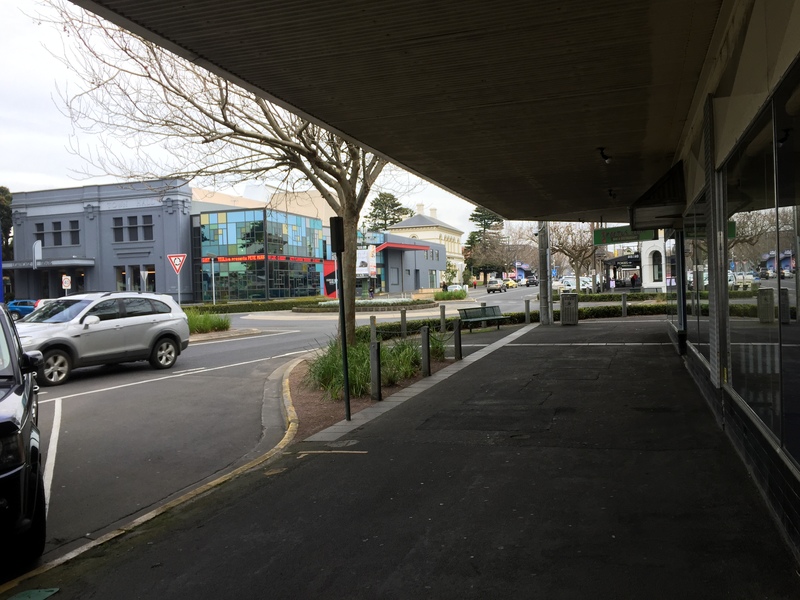
This is downtown Warrnambool. Despite the small-town feel, there are a lot of new-looking buildings with strange architecture.
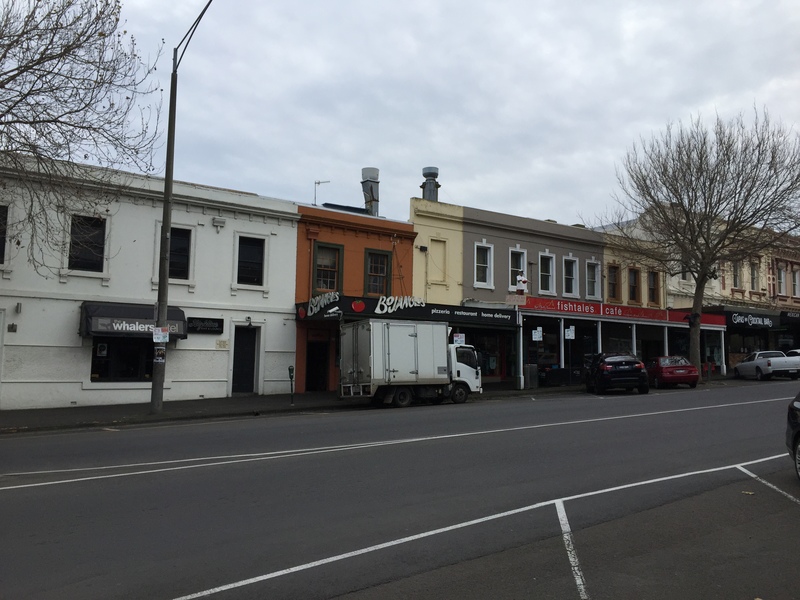
Also, a Bojangles! Wait... this must not be the same Bojangles I am used to...
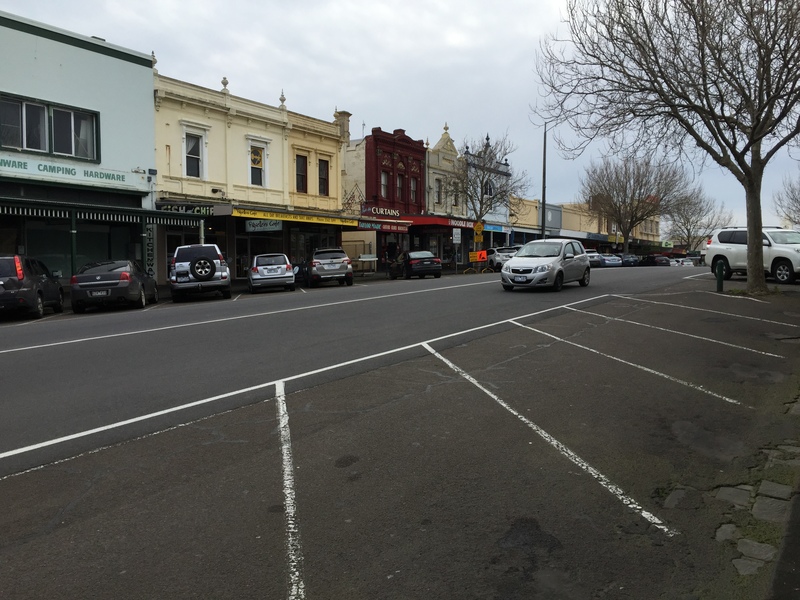
If I squinted my eyes and looked just right, I could convince myself I was in
small-town America. I have never been to anywhere in a foreign country that
feels so familiar in this way.
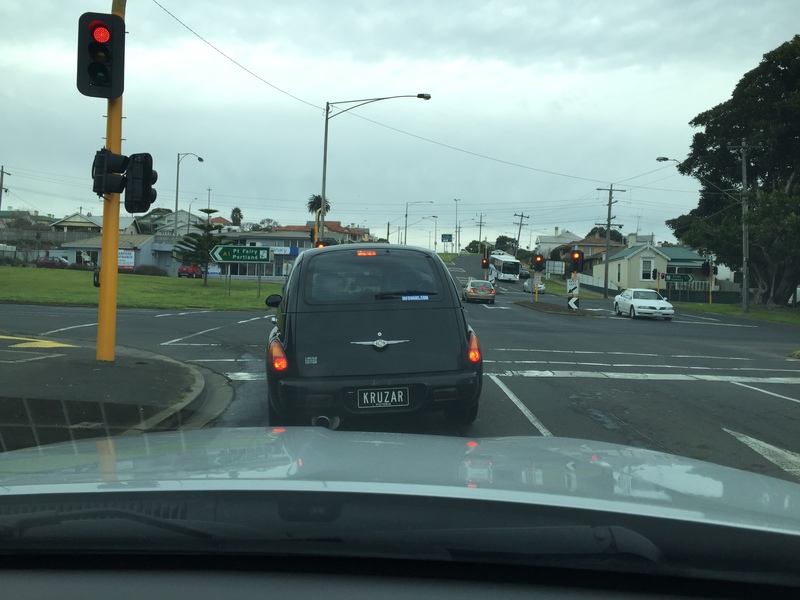
The U.S. also does not have a monopoly on nutjobs! (Or PT Cruisers...)
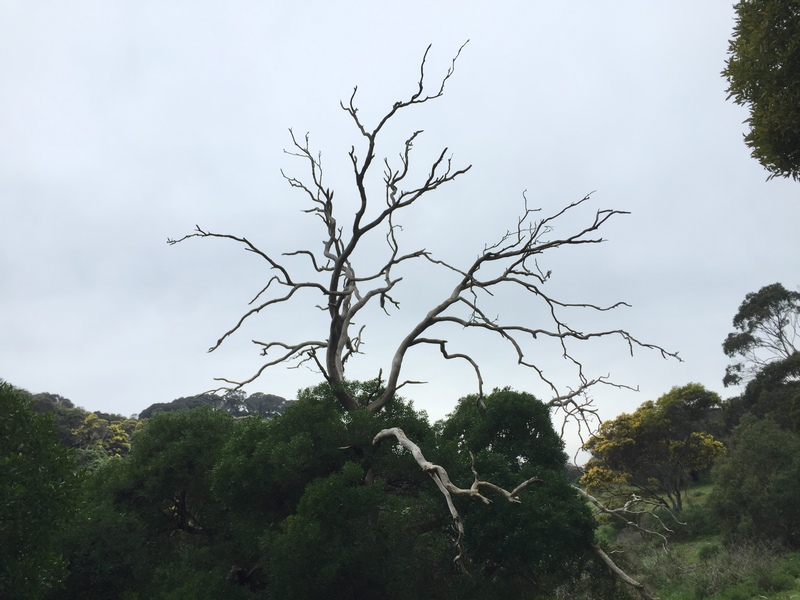
The landscape is filled with these strange dead trees. At first I thought they
were the result of fires, but I see them everywhere, so I am not sure that fire
is the cause.
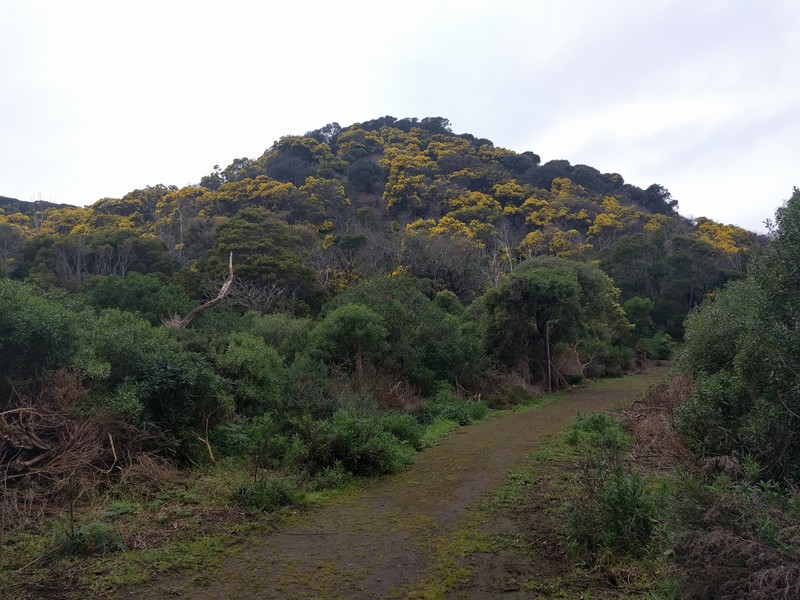
We went to "Tower Hill Wildlife Reserve", the site of the most recent active
volcano in Australia (last eruption several thousand years ago). The landscape
was filled with these strange flowering yellow trees.
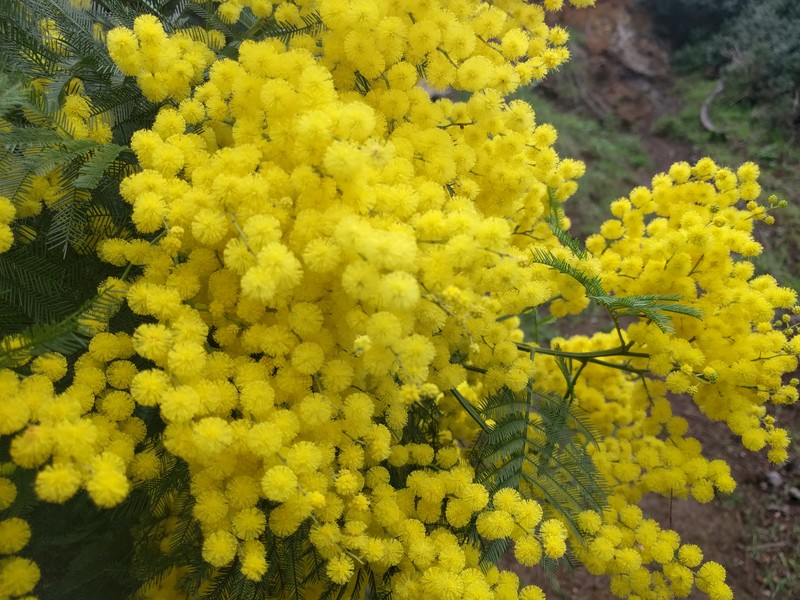
I'm not really sure what to write here. These flowers are certainly the
strangest flowers I have ever seen. I realize at this point I have probably
written the word "strange" around 100 times on this page, but it's all I've got
for words.
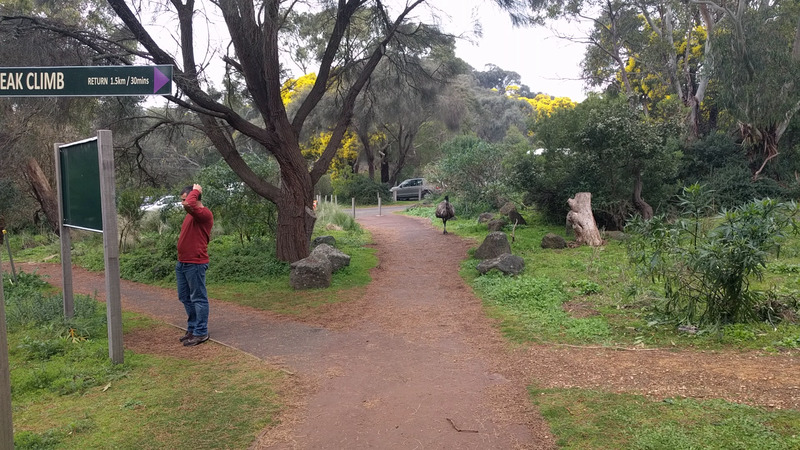
On the way out, we encountered an emu. The local just doesn't even care. I
imagine that for him, seeing an emu is as boring as it is for me to see a deer.
(This is a video. Click the image to watch it.)
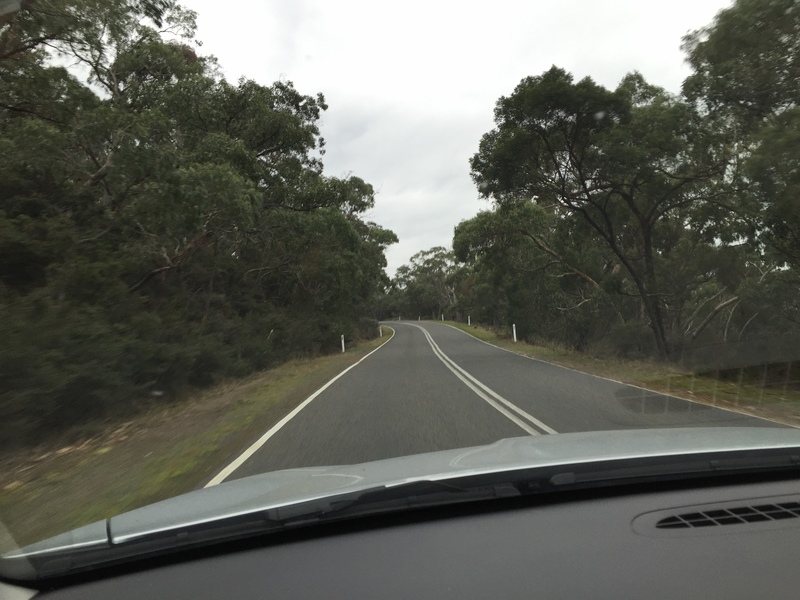
As we left Warrnambool going north (away from the coast), this is a pretty
typical scene.
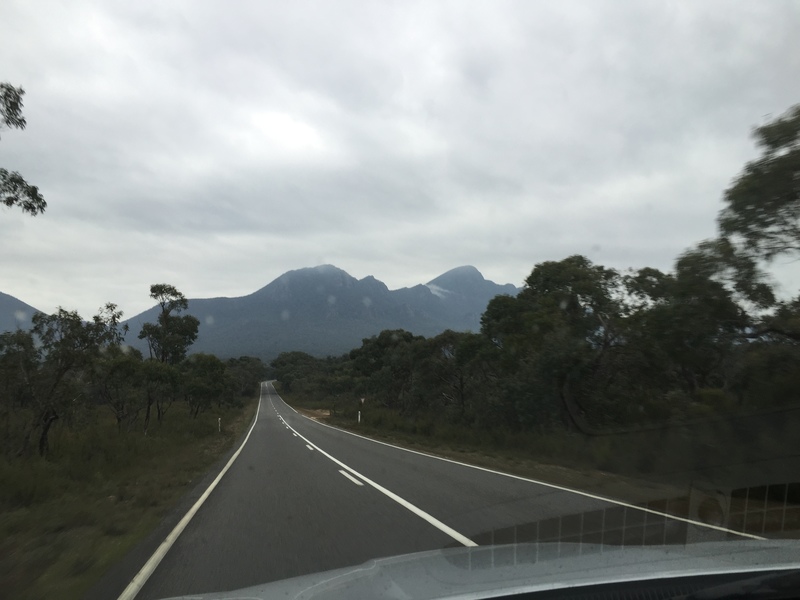
Approaching the Grampians (a mountain range), the trees seemed to get a little
smaller and the area seemed a little less alpine-rainforest-y.
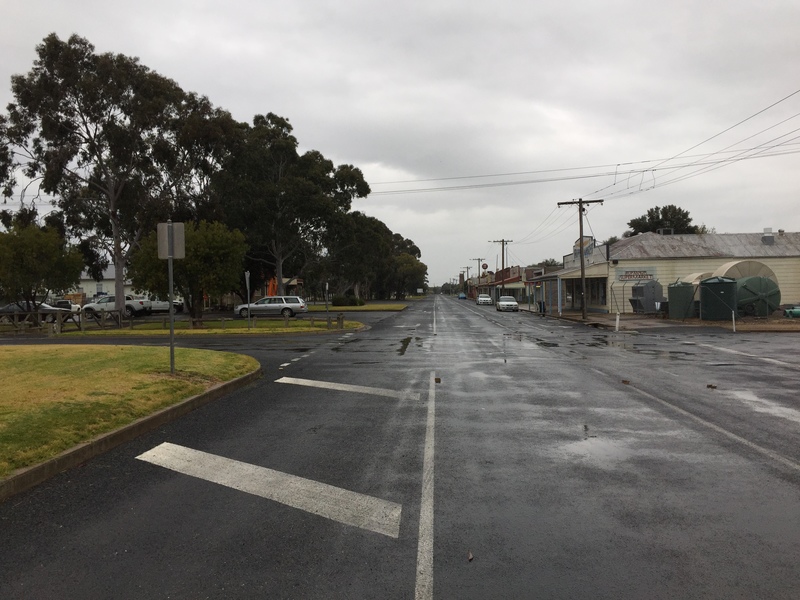
The town we stopped in for lunch---Dunkeld---looked a little like it has seen
better days.
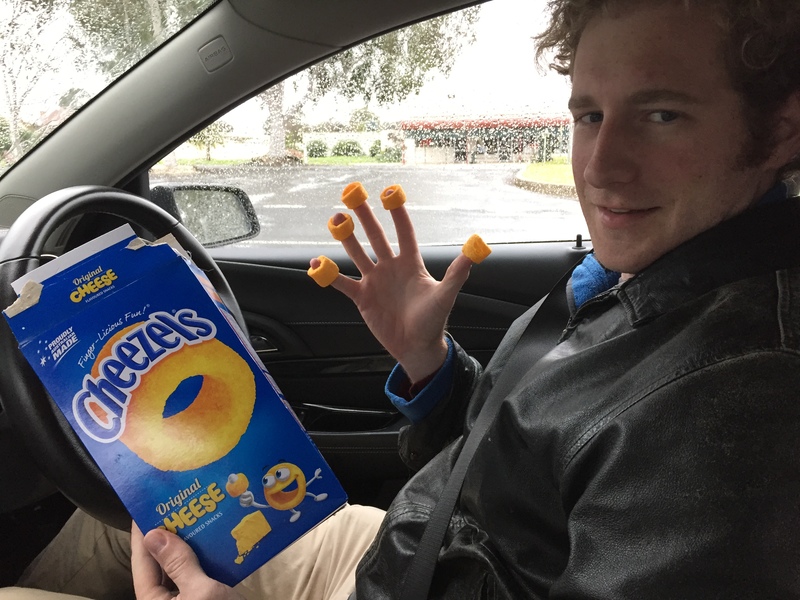
The waitress/shop attendant approved of my plan to obtain Cheezels, and
recommended that I eat them in the traditional way (pictured here). They taste
just like Cheetos Puffs.
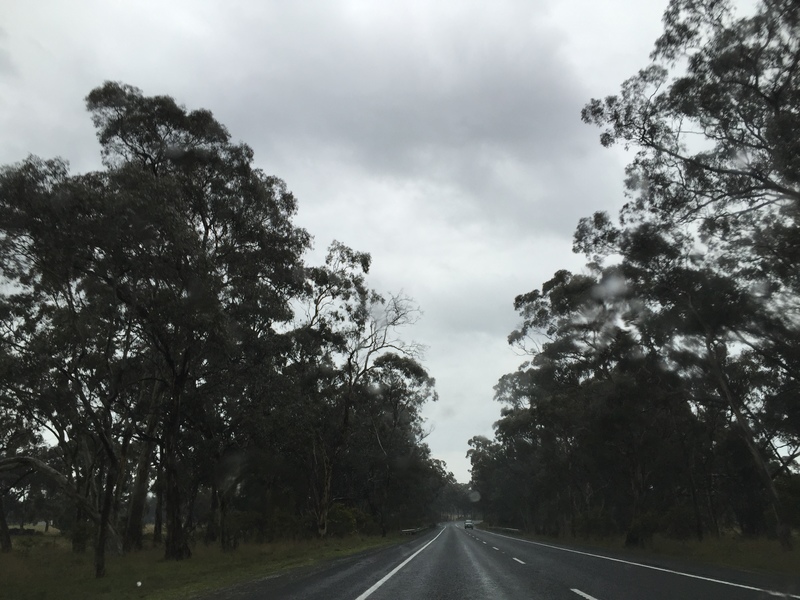
Further north, the forests ended and it turned into farmlands with sparse trees
on either side of the road.
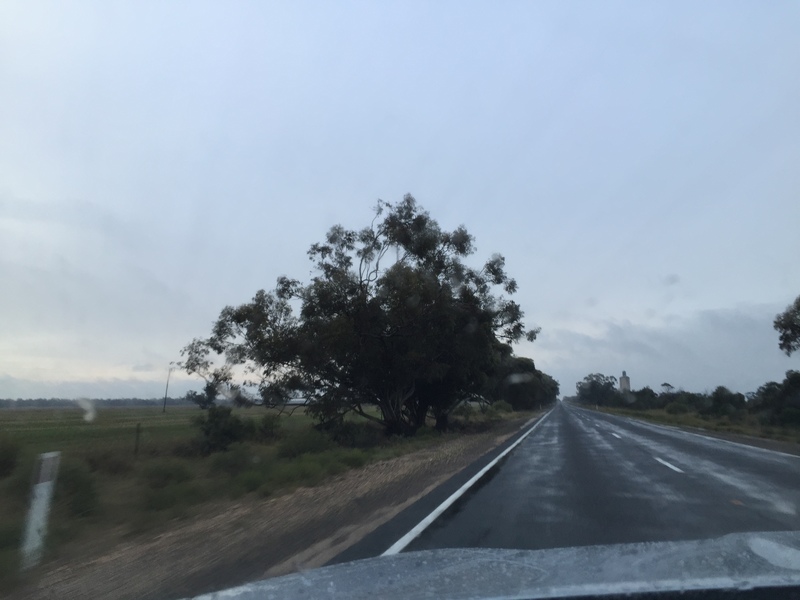
At some point we enter "the mallee".
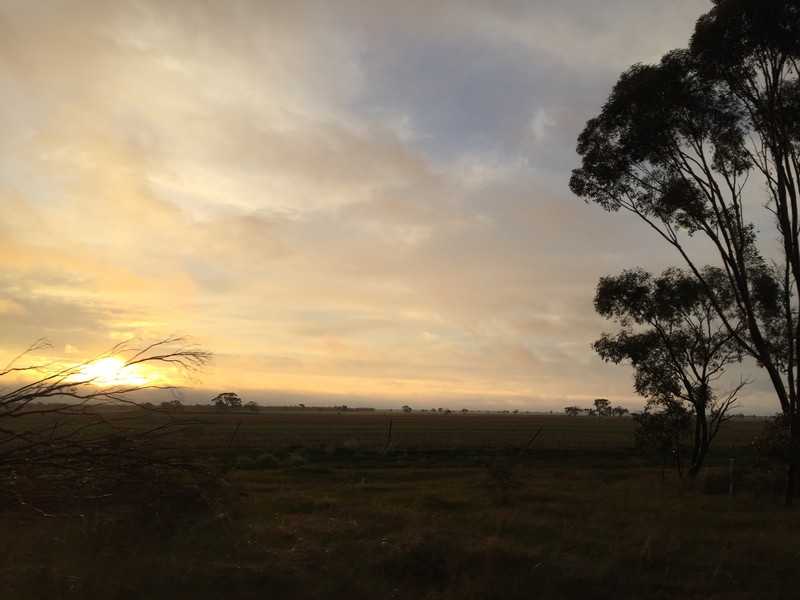
This was the first time we saw the sun this day; it had been overcast all the
way up to sunset.
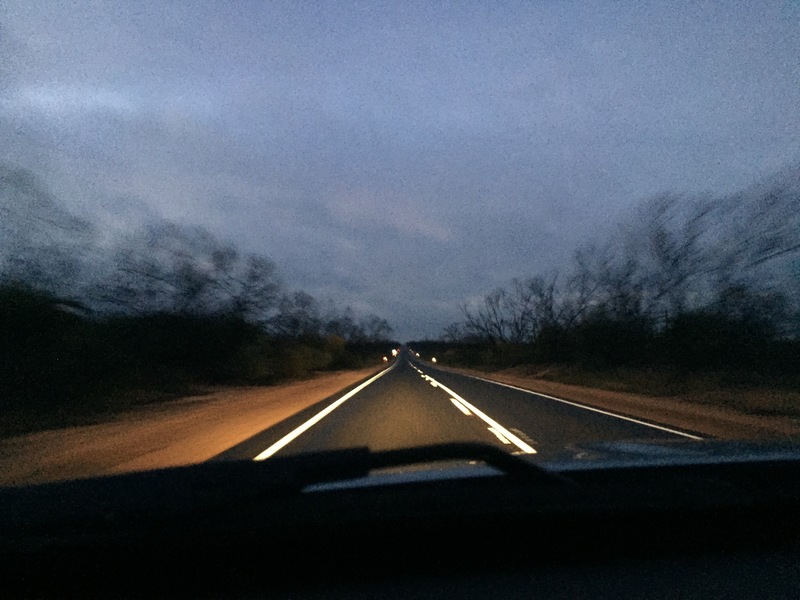
As we got close to Mildura, the sun went down, so we were not able to really see
what we were driving through, but it appeared to all be low brush, mostly dead
(or dormant because it is winter).
Day 9: Across the plains to Wagga Wagga
It turns out that driving in Australia is surprisingly exhausting because you
really have to watch out for wildlife. So exploration of Mildura's nightlife
was not a realistic option (possibly, there was not much nightlife to explore).
A minor stop for dinner at a bar revealed both disappointing burgers and
disappointingly watery local beer.
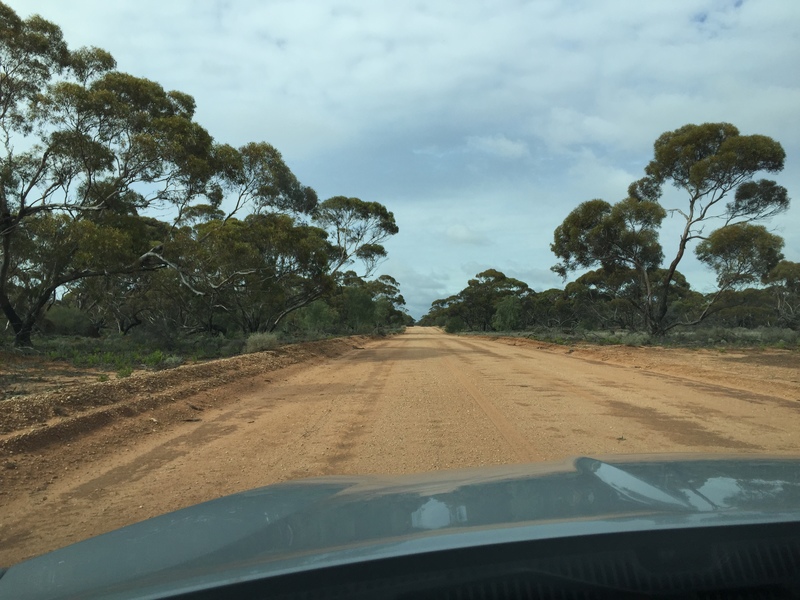
The Wicked Campers contract explicitly specified we were not allowed to drive on
unsealed roads, but Thrifty must have assumed their renters were smart enough to
not need to be explicitly told that. Bonus points: it rained the day before we
did this and we did indeed spend some time sideways.
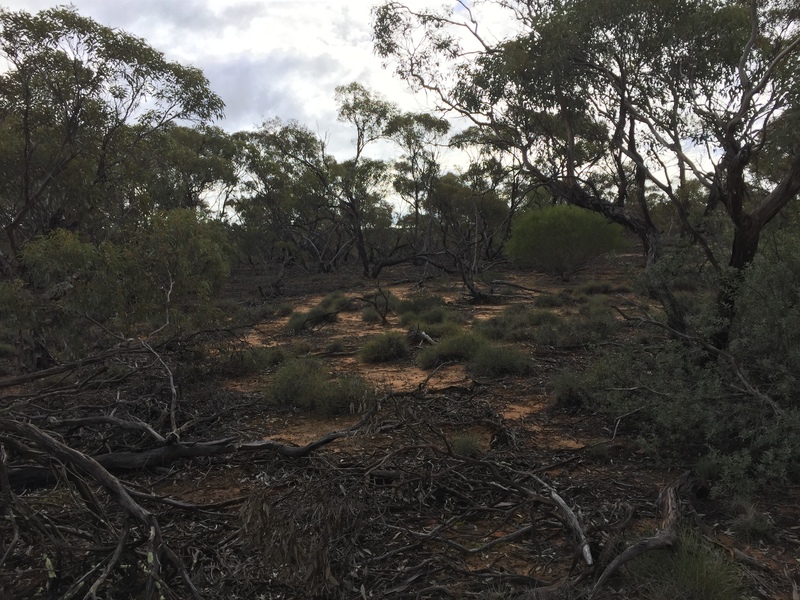
Our forbidden unsealed road took us to a "park" (or, well, a place with a path).
Here we began our exploration of the Mallee, which is the name for the region we
are in. I think that maybe many Australians find the Mallee a little boring,
but I am utterly fascinated by the strange small trees and scrub.
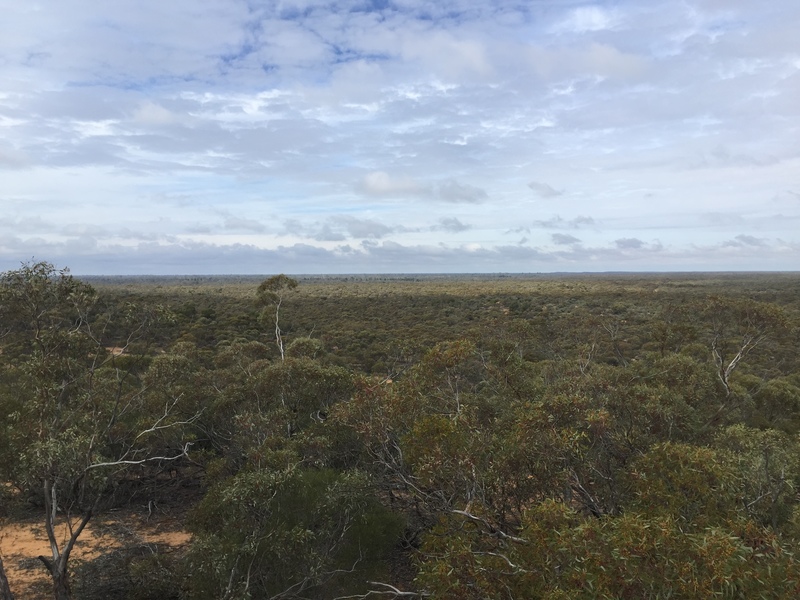
A small tower allowed us to climb to the top and get a good view of the pretty
flat terrain. We really weren't able to see any signs of human activity in any
direction. Also I'm a little sad because HDR looks like it did something really
weird to this picture, unnecessarily.
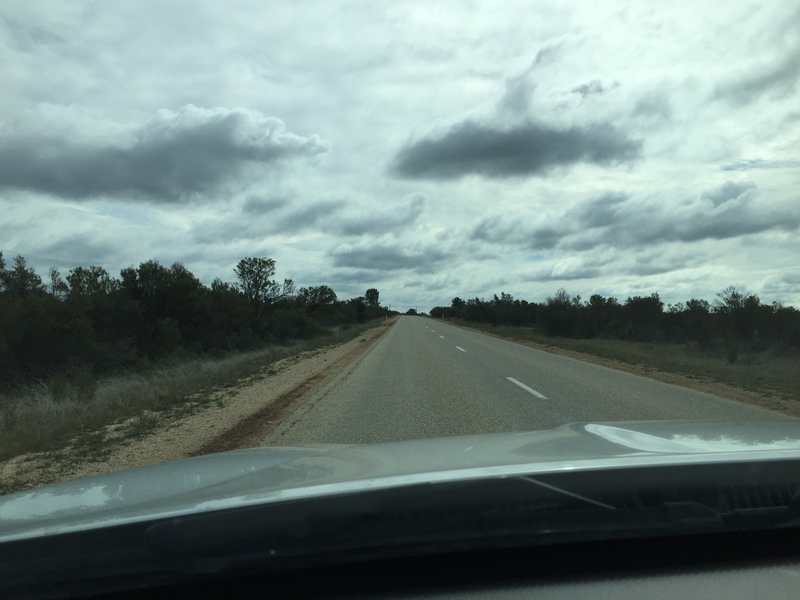
Back on the road going east, the brush started to get lower and lower.
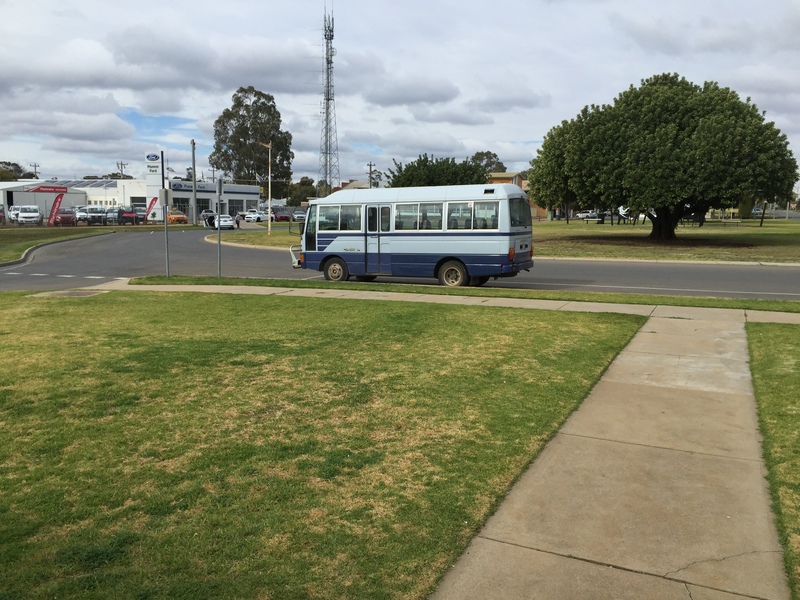
We stopped in a small town called Robinvale, which has a surprisingly
easy-to-say name. I thought this little bus was worthy of a picture.

Robinvale's population is just over 2000. Compare this scene here, which was
taken midday on a Friday, with what "the strip" would look like in any American
town of about the same size.
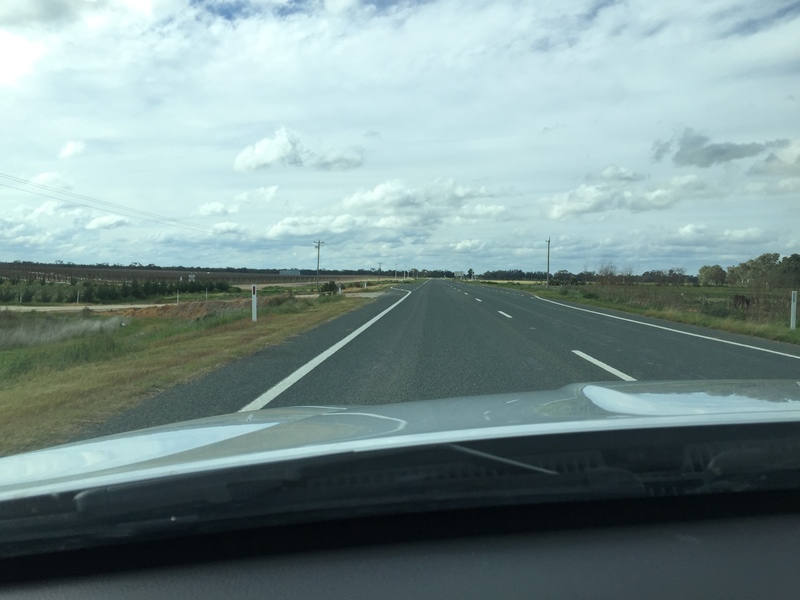
Leaving town, there were a lot of similarities with American agricultural
regions. Although honestly when I think about it, I guess there are only so
many ways a farm can look...
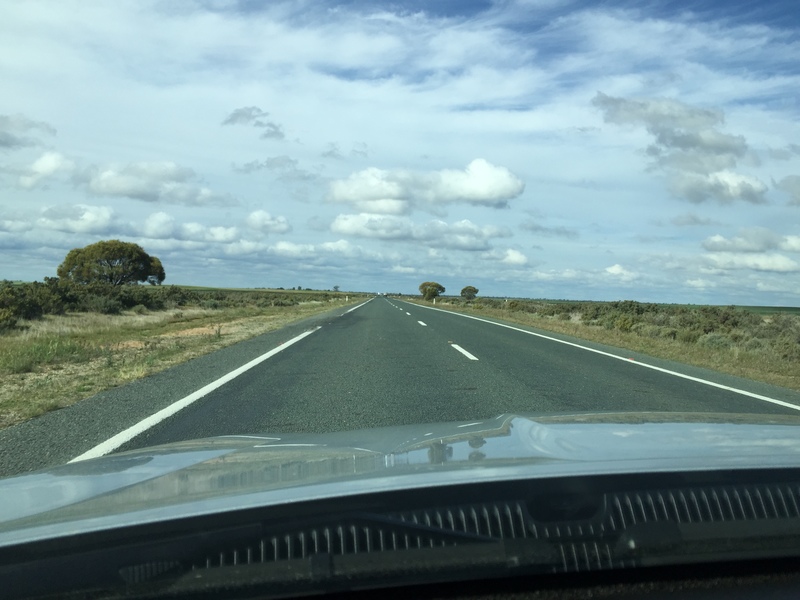
Leaving Balranald (a fun name to say), trees went away basically entirely and we
were able to see the landscape.
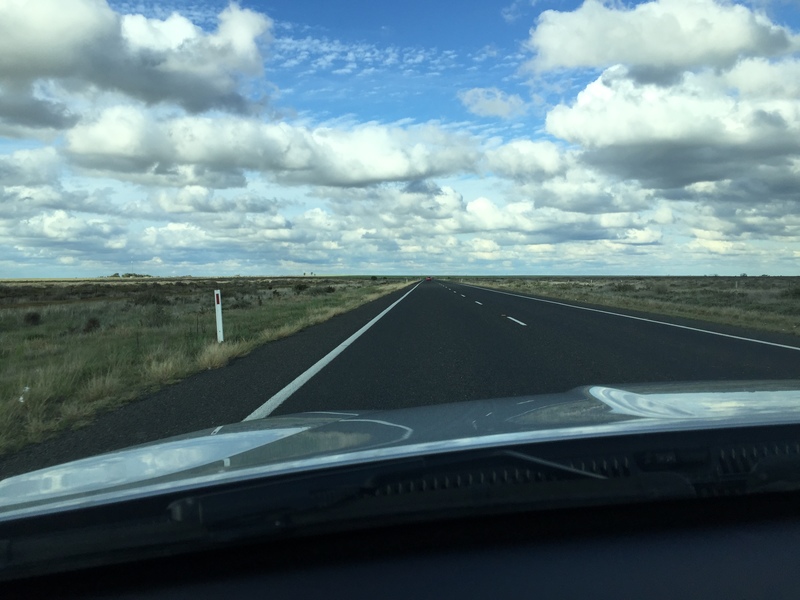
The landscape came close to desert at some point, but I believe we were too far
south to really see 'the Outback'.
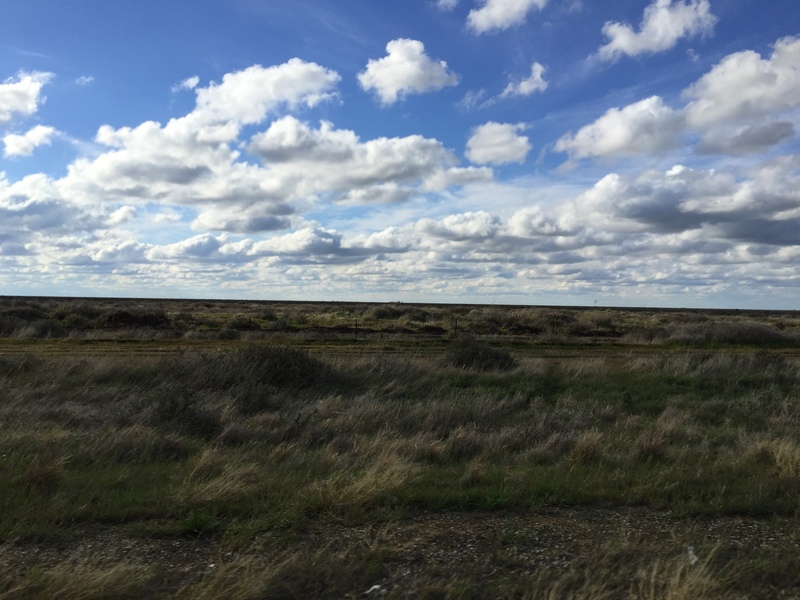
At some point we even stopped seeing agriculture; I guess the land is not
useful. (Although honestly based on what I have read, Australia is pretty
marginal for agriculture in general once you leave the coasts.)
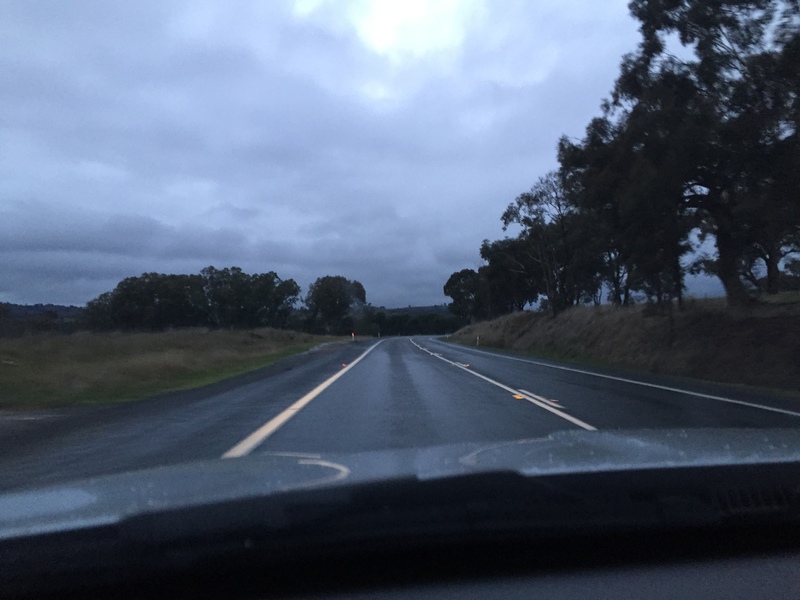
As we started to close on Wagga Wagga, which is closer to the coasts, the trees
came back and things started to look a little more normal. (Well, however
normal Australia looks to me, that is.)
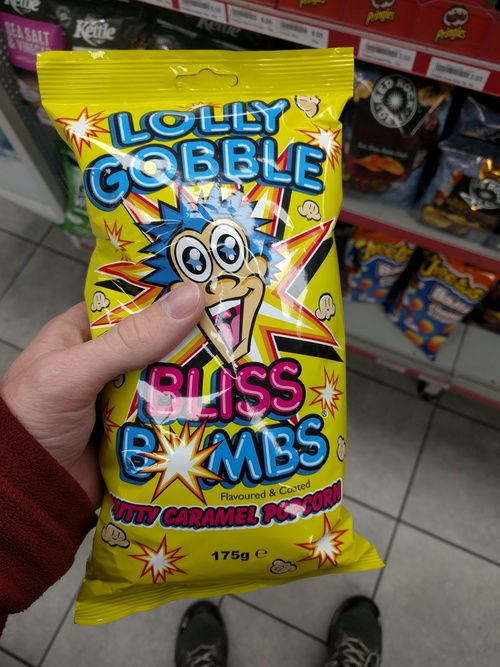
Clearly my only choice was to buy these. But they did not cause bliss (nor were
they bombs) and thus I found myself disappointed. It's just caramel corn with
nuts in it, but it's better than Cracker Jack at least. Cracker Jack is awful.
Seriously. Why would anyone want that? Bleh. I guess, compared to Cracker
Jack, these things actually did induce a state of bliss. So maybe it's not
false advertising.
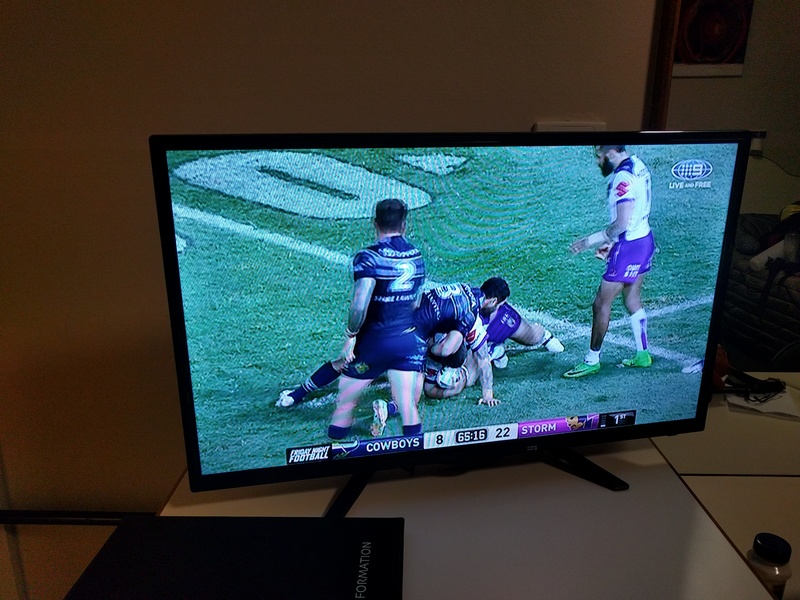
We would have considered going outside in Wagga Wagga, but then this came on.
We thought it was "footy" (Australian football) but it's actually rugby. It's
kind of like American football, but weirder, and they don't stop between each
play. Here is some
more. It was enthralling enough that we just spent the rest of the night
watching it---but apparently not paying enough attention to realize it wasn't
the sport we thought it was. I also looked up some footy match and now
that is a weird game to watch.
Day 10: Sydney's Taronga Zoo
The previous days of the trip did indeed confirm that Australia is large, and
driving between places takes a long time. This is also the case with
America, except America does not use deceiving units I am not used to like
kilometers. We decided to continue our exploration by finishing our journey to
Sydney and going to a zoo. We consciously chose to get "brekky" at a
McDonald's ("Macca's") because we were not reliably able to locate any better
breakfast throughout the rest of our trip.
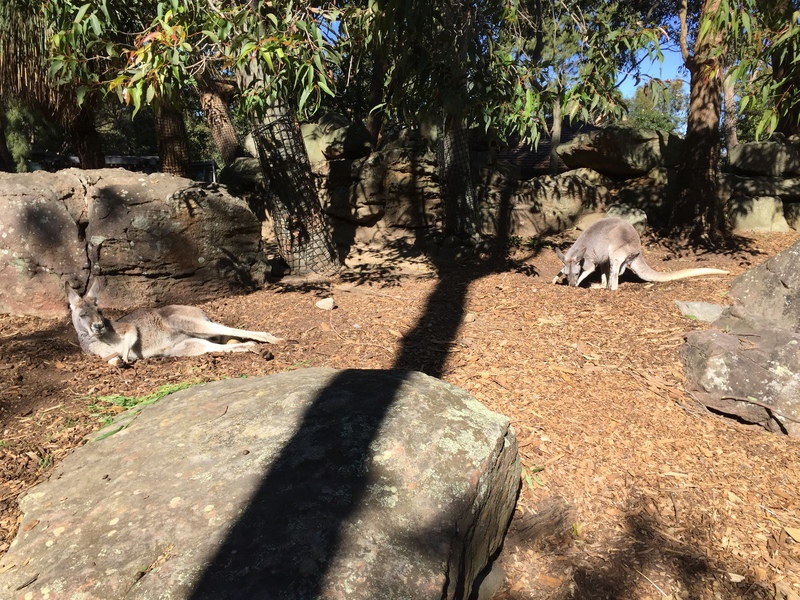
It was specifically requested that I provide more pictures of kangaroos. Here
are some.
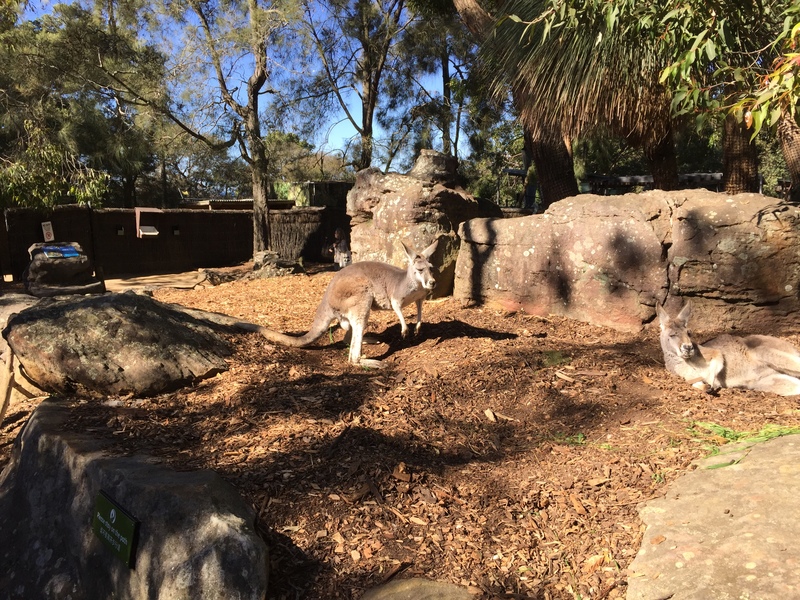
It's very strange to see them hop instead of walk, but I didn't get any videos.
Throughout the rest of the zoo we encountered many other marsupials, which also
all hopped.
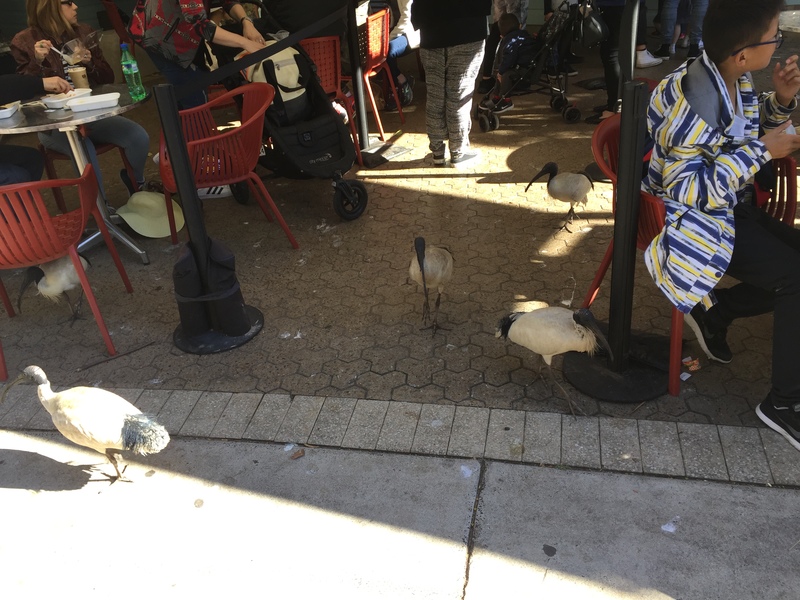
These birds appear to have evolved specifically to eat trash left by zoo
visitors. They are very good at obtaining trash---sometimes even without the
trash holder's consent.
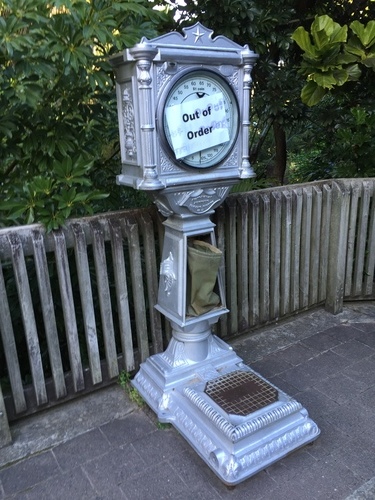
Ok, so these things are all over the U.S., too, and I'm just astonished at why
anyone would ever pay money to have themselves weighed on some horribly
calibrated scale. What is the point? Do Australians know?
Unfortunately the conference in Sydney meant that photo opportunities were
limited. Still, there were at least a few interesting things to see that
warranted documentation.
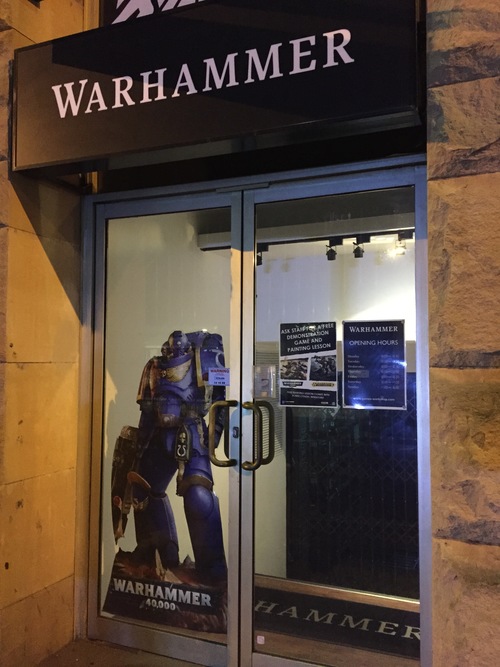
Cave nerds also exist in Sydney. Although, I do wonder how many customers they
see while the sun is up...
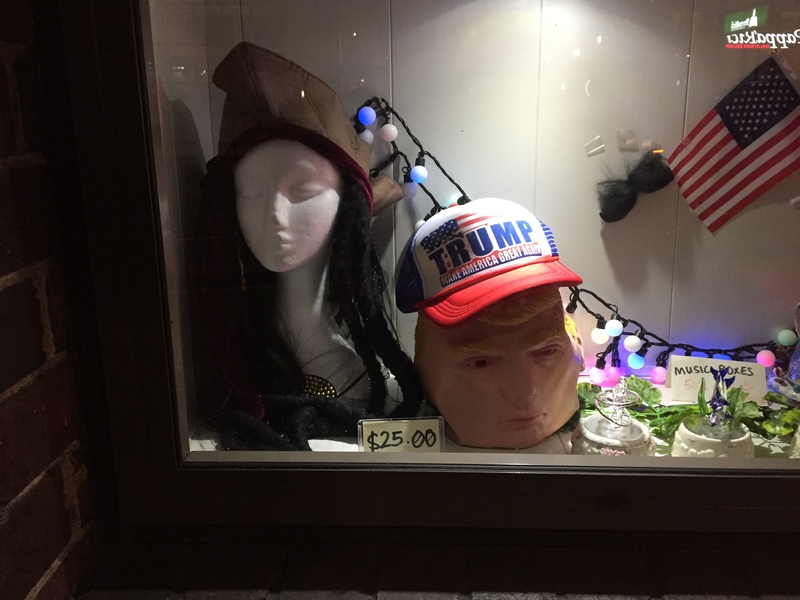
I'm not sure if this is on sale here as an ironic novelty, or as an actual
political statement.
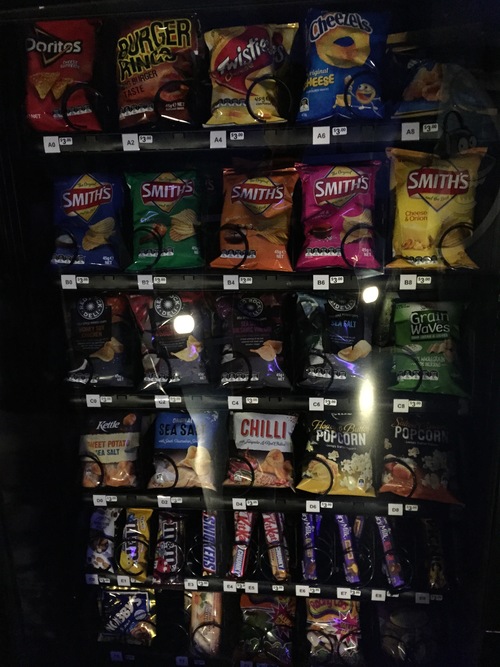
I wish they sold gummy racing cars in vending machines that I live near!
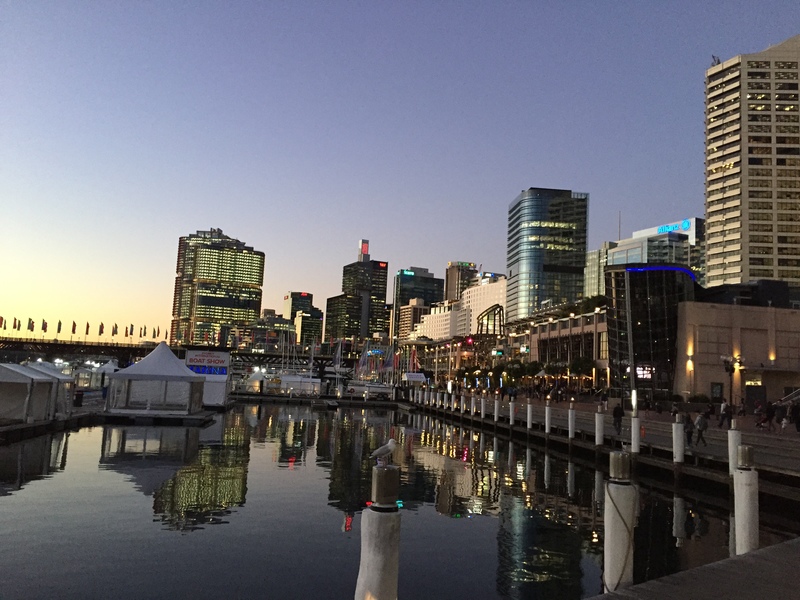
(This picture was taken at night, but HDR made it bright again). Check out the
lights on the buildings---so many are still on, even in the middle of the night!
I'm surprised to see that; given how much Australians care about their wildlife,
I would have imagined they would care about their power too. Although, for what
it's worth, the buildings were really pretty late at night with all the lights
on...
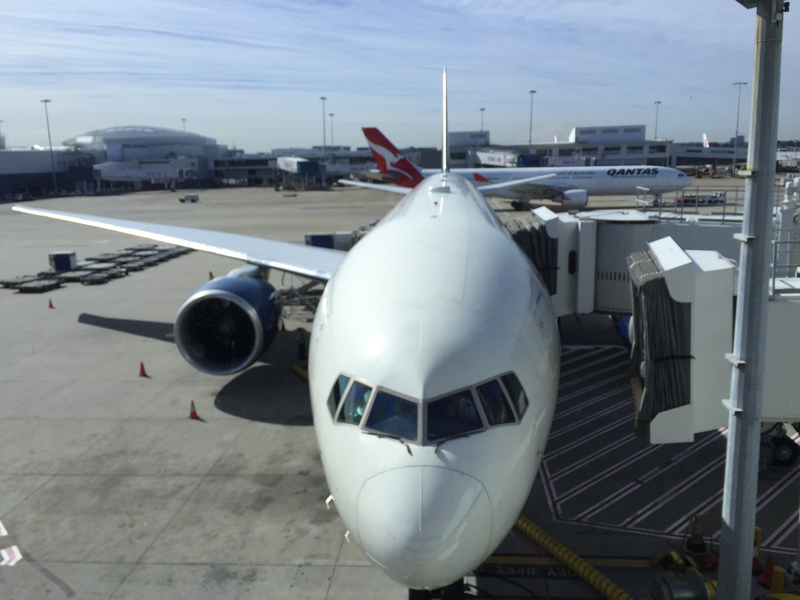
Too soon, it's over. I will have to return someday.
On the way back, we stopped in L.A. for two days. On a whim we chose to
explore. (Okay, I guess that can be expected wherever I go.) After you drive
for long enough, you get past the endless expanse of L.A., and then you're in
the Inland Empire. After another endless expanse, you make it to Palm Springs
and Indio. After another endless expanse, you get to The Salton Sea. I'll
borrow a description from somewhere else on the Internet: "California's largest
lake is also its worst one." Created accidentally, the Salton Sea is an
extremely salty inland sea with no outflow (and generally no inflow). It's a
disaster zone. See below.
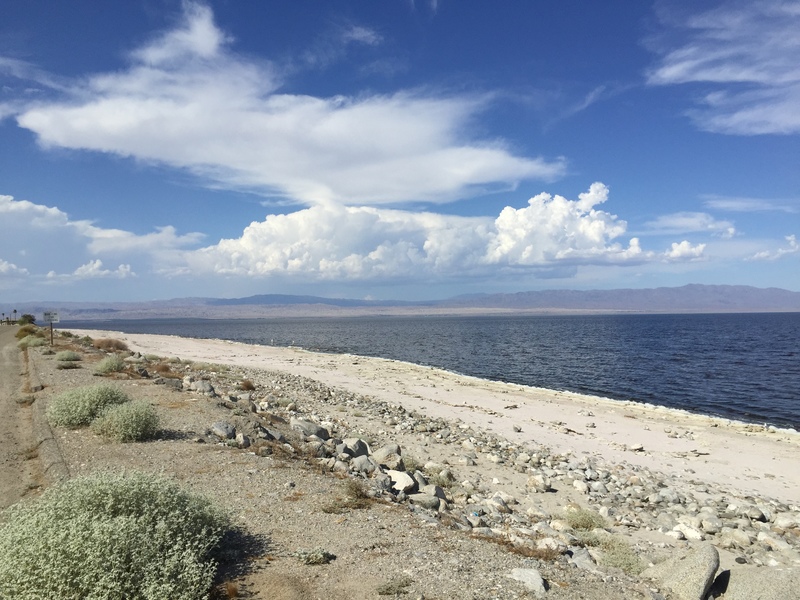
When we finally got to the lake, we stopped and got out and were met with
sweltering 115F heat. Oh, that's right, it's summer here...

Here's a panorama of the sea. What the pictures can't capture is how forbidding
and desolate the whole area looks. And how bad it smells (more on that in a
second).
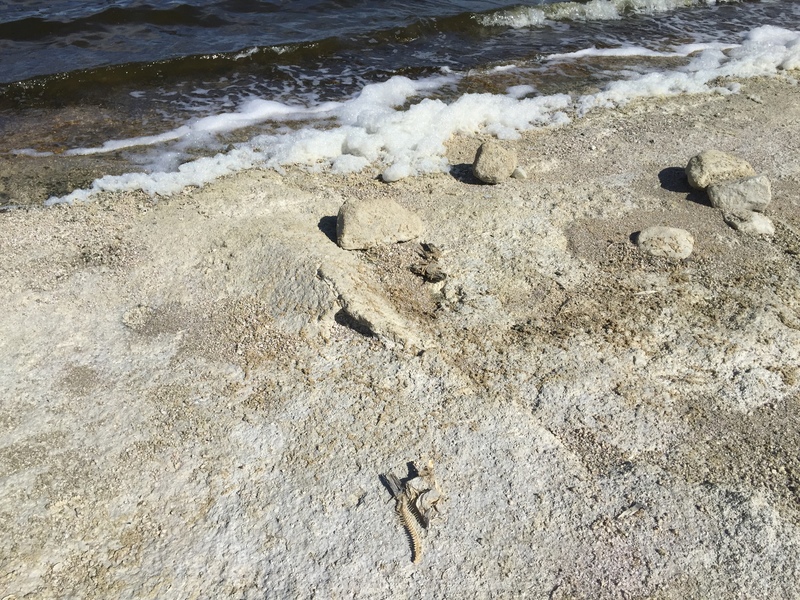
Because of the high salt levels, "die-offs" are pretty common and have killed
uncountable numbers of fish and birds. With nothing to clean them up, their
carcasses simply get washed up and decay on shore. Along with the foamy
pollution.
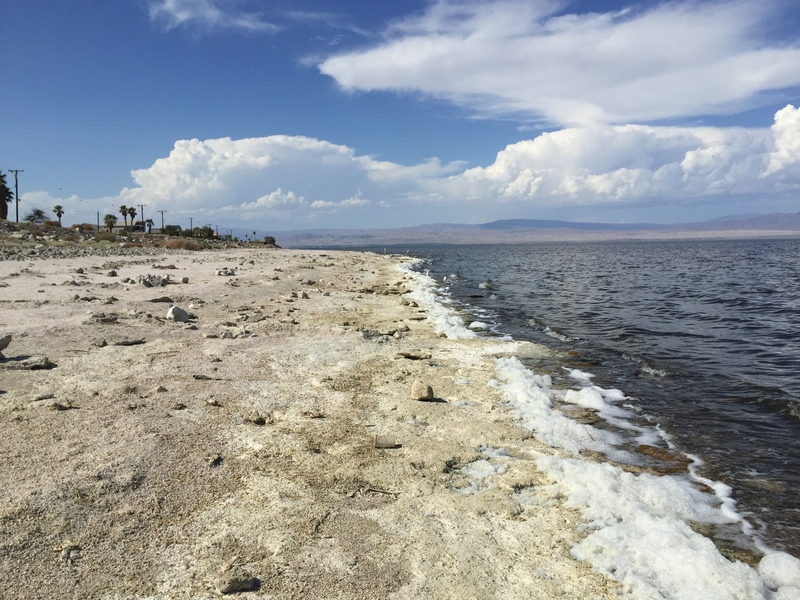
Those carcasses weren't unique---we didn't have to walk very far to find them at
all. In this larger picture you can see lots of other decaying carcasses of
fish and birds.
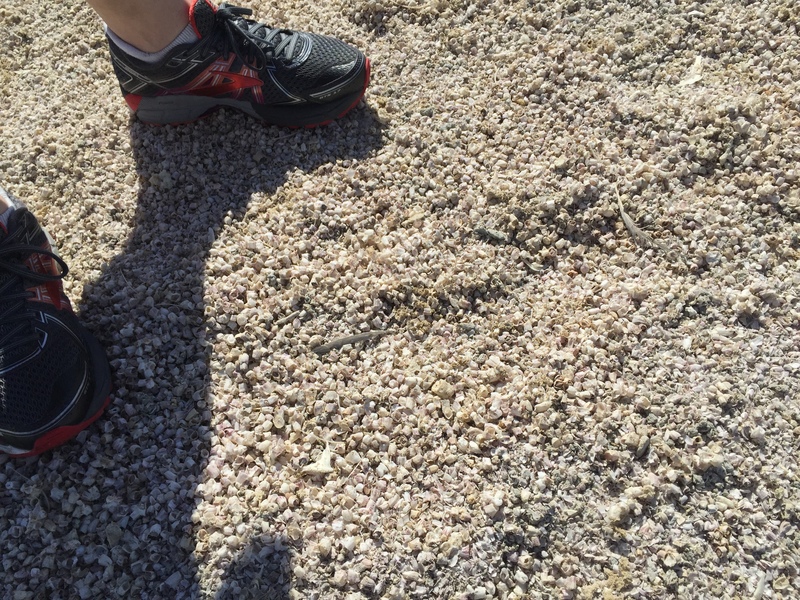
We quickly realized that we weren't standing on sand. What you are seeing in
this picture is pulverized fish bones. Yes, really.
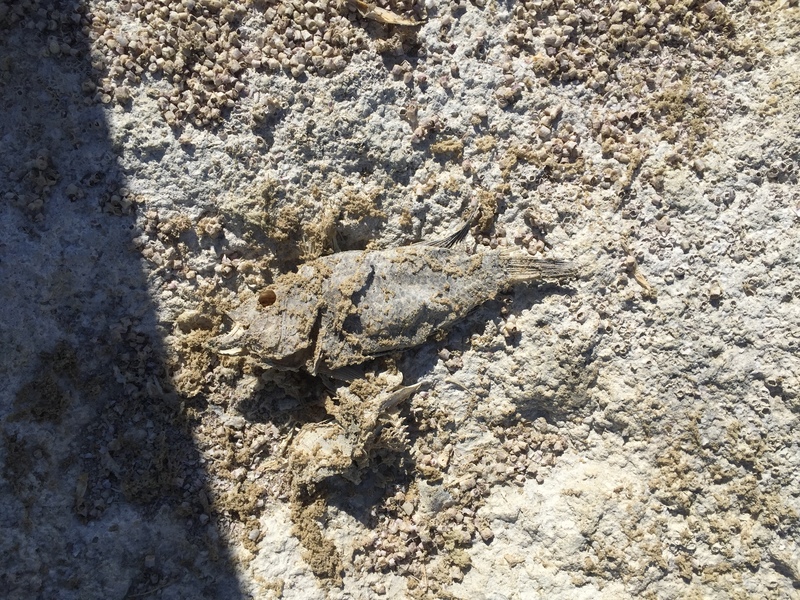
Sushi?
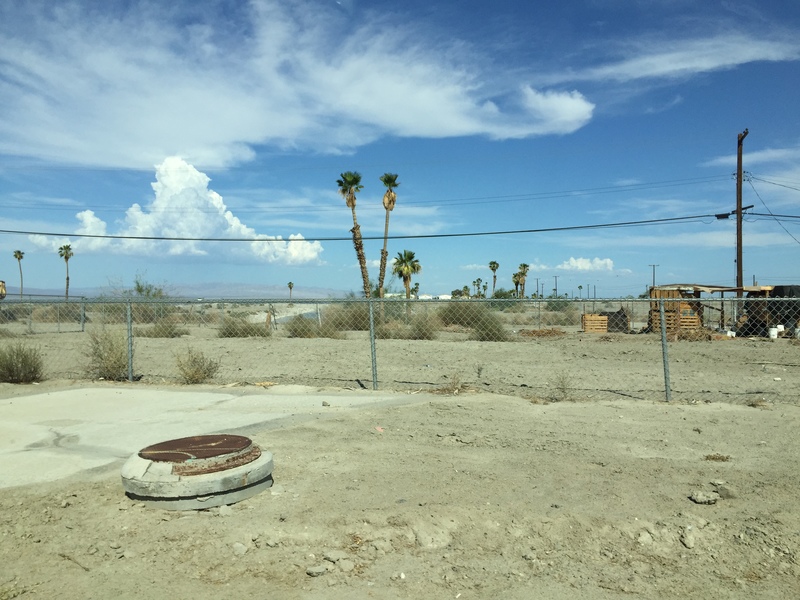
The town of Desert Shores---or any town along the Salton Sea---is not really
doing very well at all.
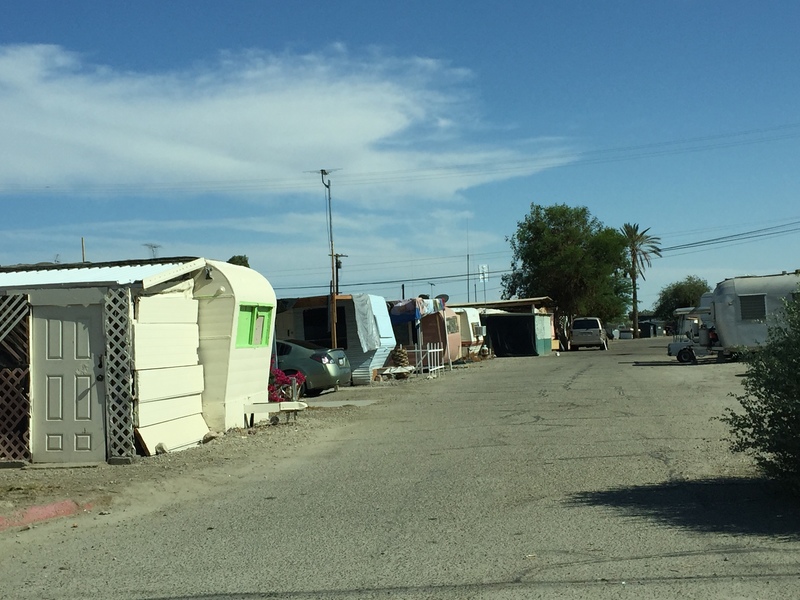
Sights like this were pretty common.
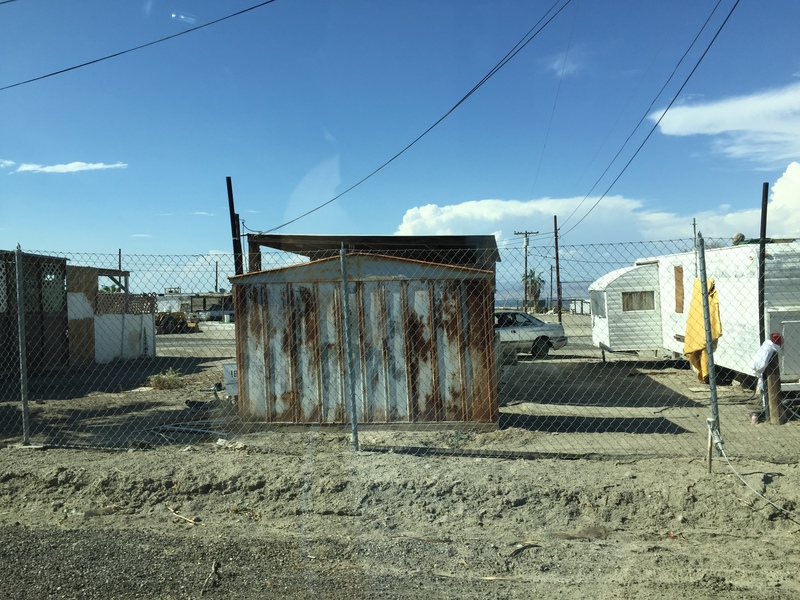
To be honest it was actually pretty challenging to be presented with this, only
an hour or so away from Orange County, one of the richest 100 counties in
America.
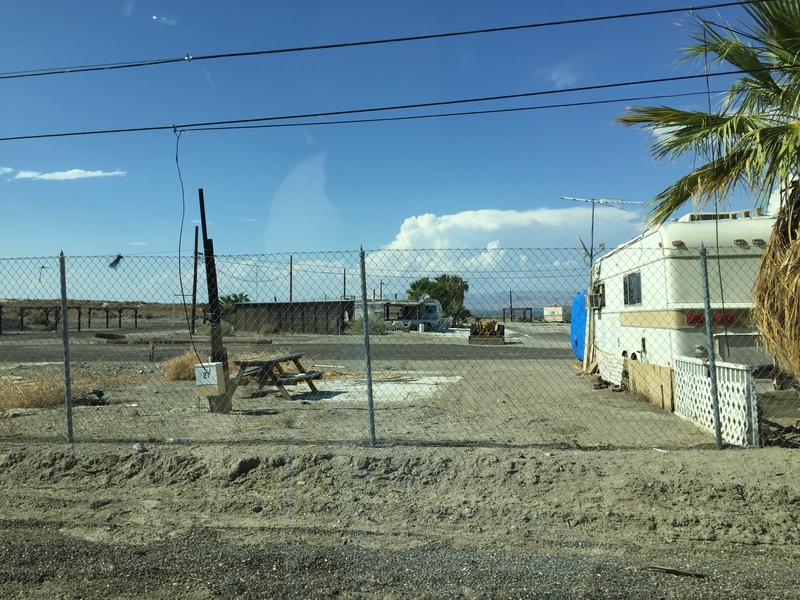
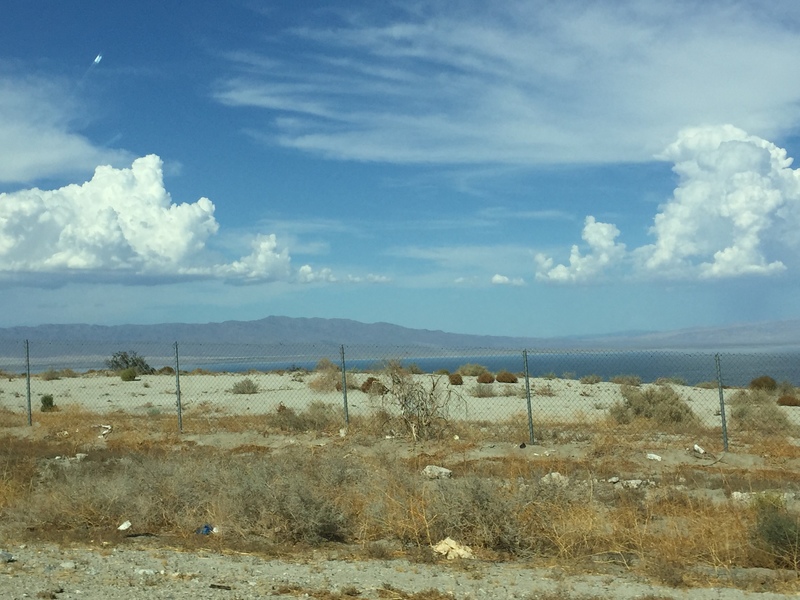
This part of California is really beautiful, but it's also very forbidding and
desolate. It's strange to put all those adjectives together to describe one
place.
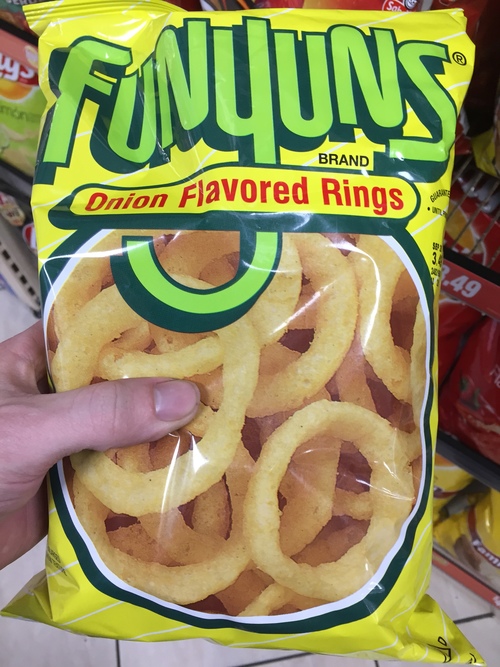
Ok, so I get it, if I wasn't from here, I'd have taken a picture of this shit
too.
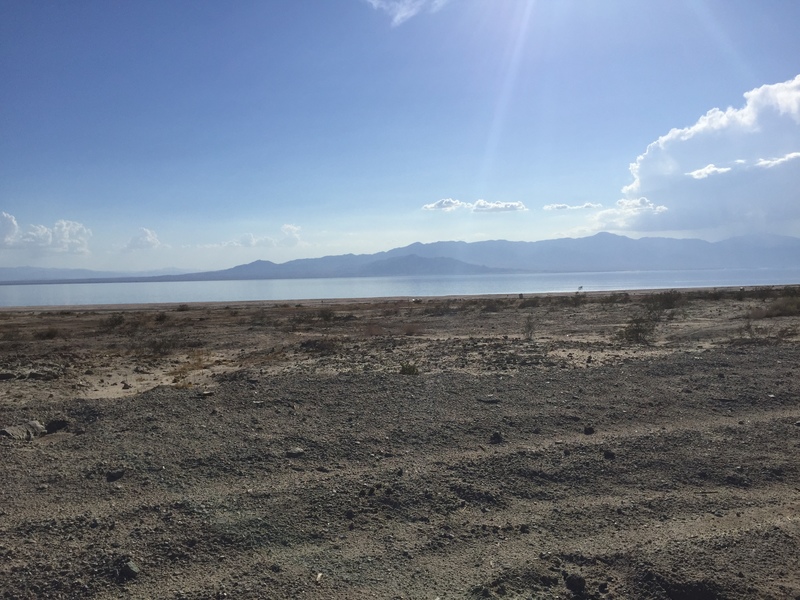
We drove to the other side of the lake and decided to walk to the shore. I have
never in my life experienced such heat (and don't forget how bad it smells too).
We actually sweated like
this, I'm not joking or exaggerating when I say that (seriously).
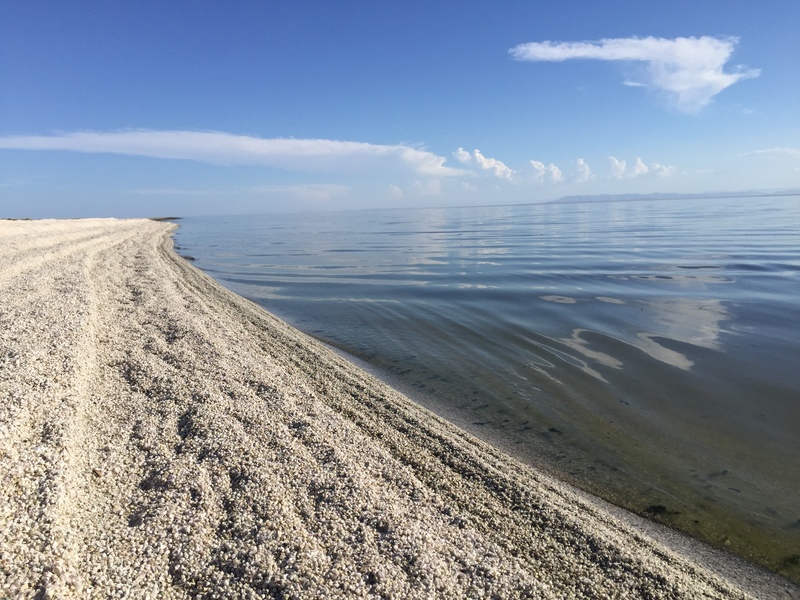
Ah, so this, it's not rocks. It's also fish bones. So now think about how big
this lake is, and think that all sides of it are covered in piles (deep piles!)
of fish bones that you can sink into up to your ankles (and it probably goes
deeper than that). Now think about how many fish that is.
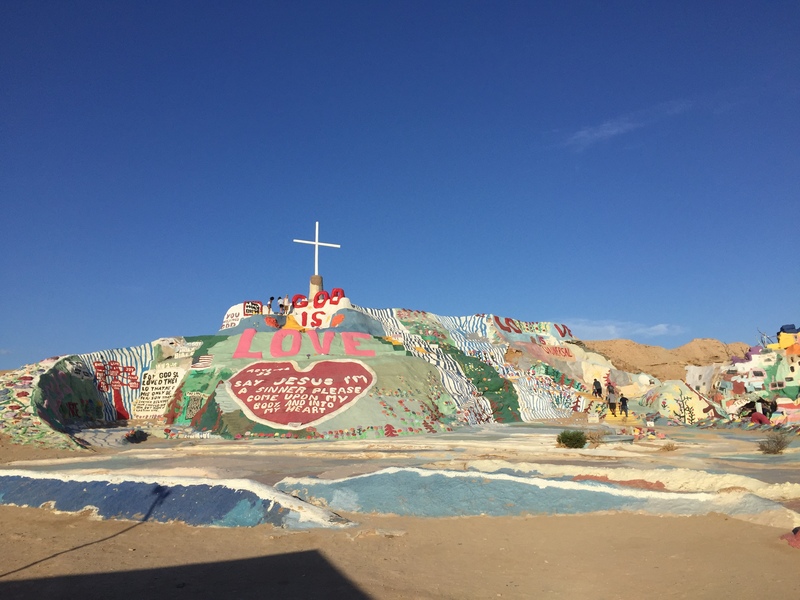
Also near the Salton Sea is the exact opposite of the desolation we saw
(including the town of Bombay Beach, where I wasn't willing to take pictures):
this is called Salvation Mountain, and was made over the course of 30 years.
It's entirely made with latex paint. Seeing this is like a strange tour into
the depths of someone's mind.
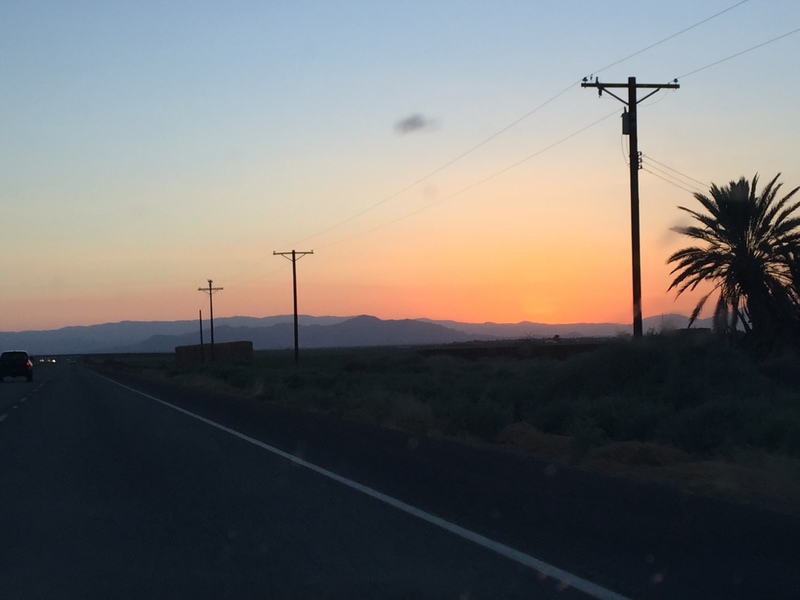
Continuing south, we got to see a very nice sunset.
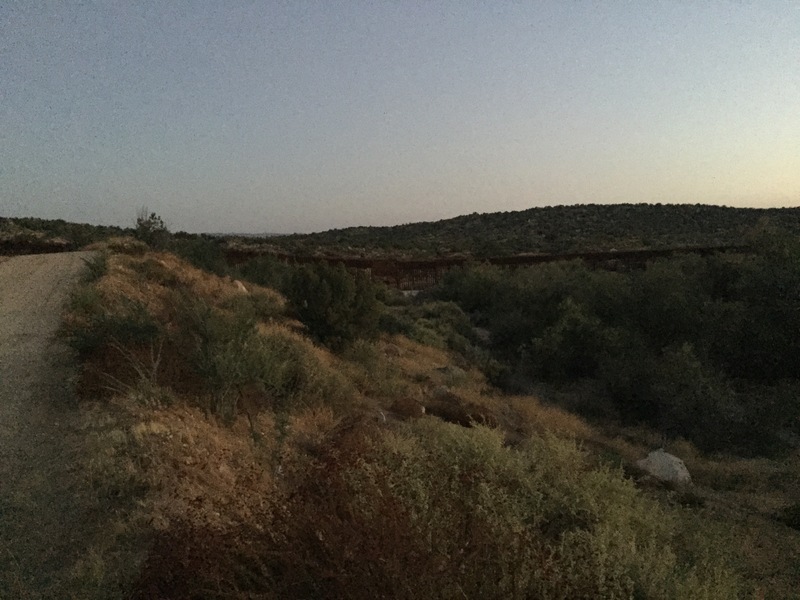
(Thanks HDR: this picture was completely dark before!) This is a picture of
Mexico! You can see the border wall. Yuge!
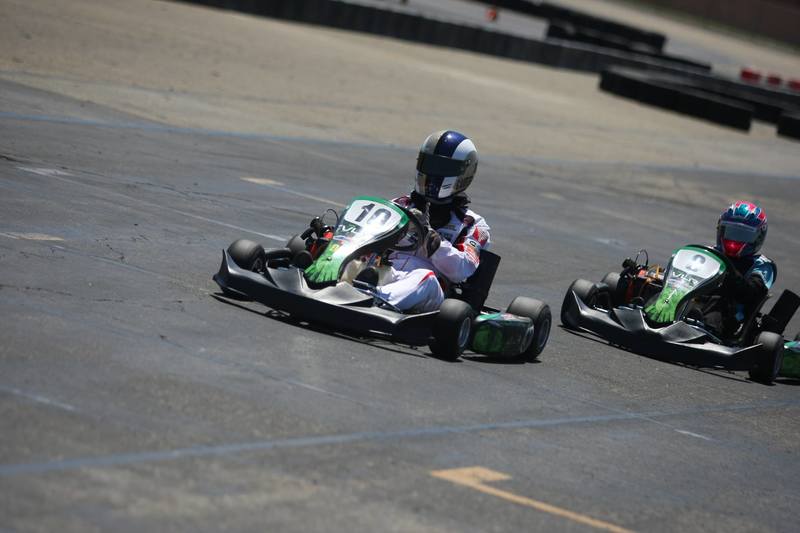
But the real reason we were in southern California wasn't to see things, it was
so I could go racing. Which I did, and apparently it went well, since I won.
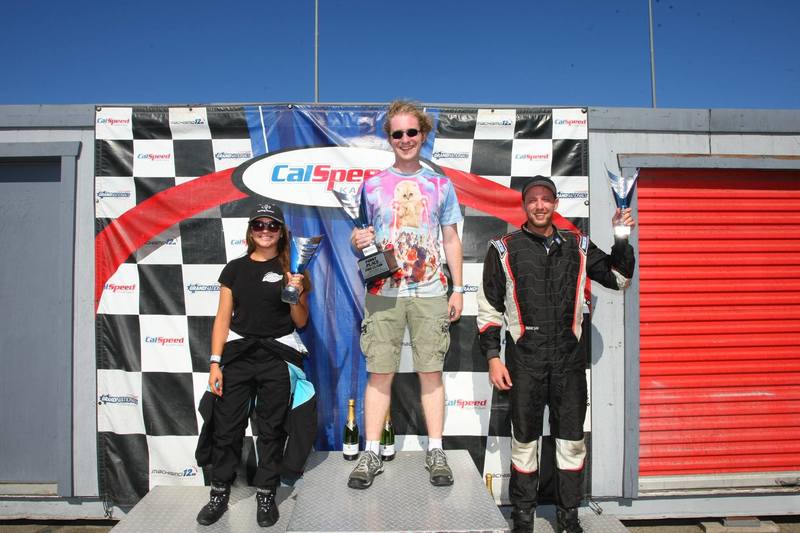
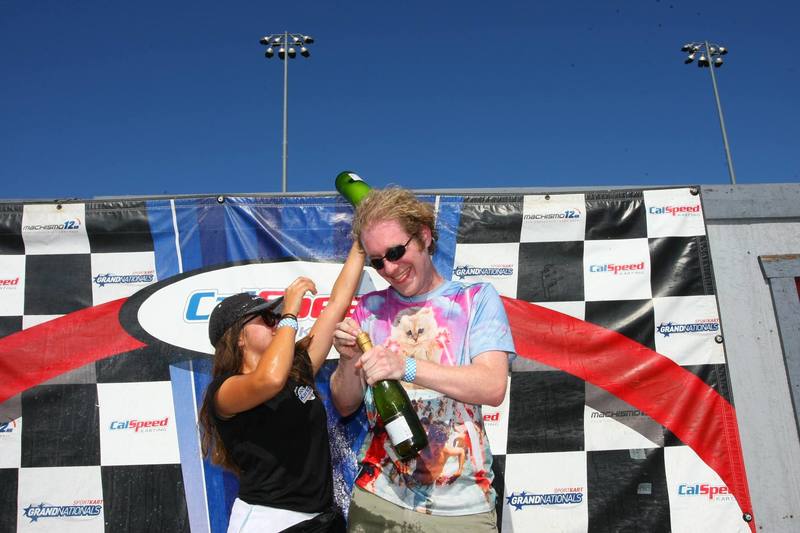
Fun fact, when champagne gets all over you, it smells really bad, is really
sticky, and is really hard to clean up---especially when all you have is a hotel
sink...
Overall, observations and experiments seem to indicate that Australia is a
place worth visiting, although local traditions deviate significantly from
typical American traditions. It seems this is understandable, given Australia's
lack of proximity to the U.S. and also the fact that it is a separate country.
Nonetheless, we recommend travel to the region and also the purchase of Burger
Rings.




















































































































































